Research
How to submit an article:
- Registered users can submit any published journal article that has a unique DOI (Digital Object Identifier) name or link to Research Hub.
- For example, you can paste the full DOI link:
https://doi.org/10.1109/5.771073or just the DOI name:10.1109/5.771073into the field above and click submit. - The person who is first to submit a valid article to Research Hub will forever be credited for it, and every article submission earns you +6 Research Points.
Related Topics
Published research studies are articles that present the findings of original research that has undergone a peer-review process and has been made publicly available in scholarly journals, books or other media.
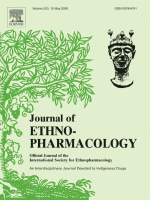
Uncovering the pharmacological mechanism of Shou Tai Wan on recurrent spontaneous abortion: A integrated pharmacology strategy-based research
2024 Apr Journal of Ethnopharmacology Yang K, Zeng L, Li Y, Wu L, Xiang W, Wu X, et al.
Shou Tai Wan (STW) was found to regulate PI3K/AKT, MAPK, and FoxO signaling pathways, and in animal experiments with an RSA mouse model, STW reduced embryo absorption rates, balanced Th1/Th2 cytokine expression, and demonstrated immunomodulatory effects by up-regulating the phosphorylation levels of STAT3 and STAT6 proteins and down-regulating STAT1 protein in the STAT signaling pathway. Additionally, STW up-regulated phosphorylation levels of proteins in the MAPK signaling pathway, and increased expression levels of ERK1/2 mRNA and proteins, suggesting potential therapeutic effects in treating RSA through interference with these signaling pathways.
Experimental Study Animal Study Recurrent Spontaneous Abortion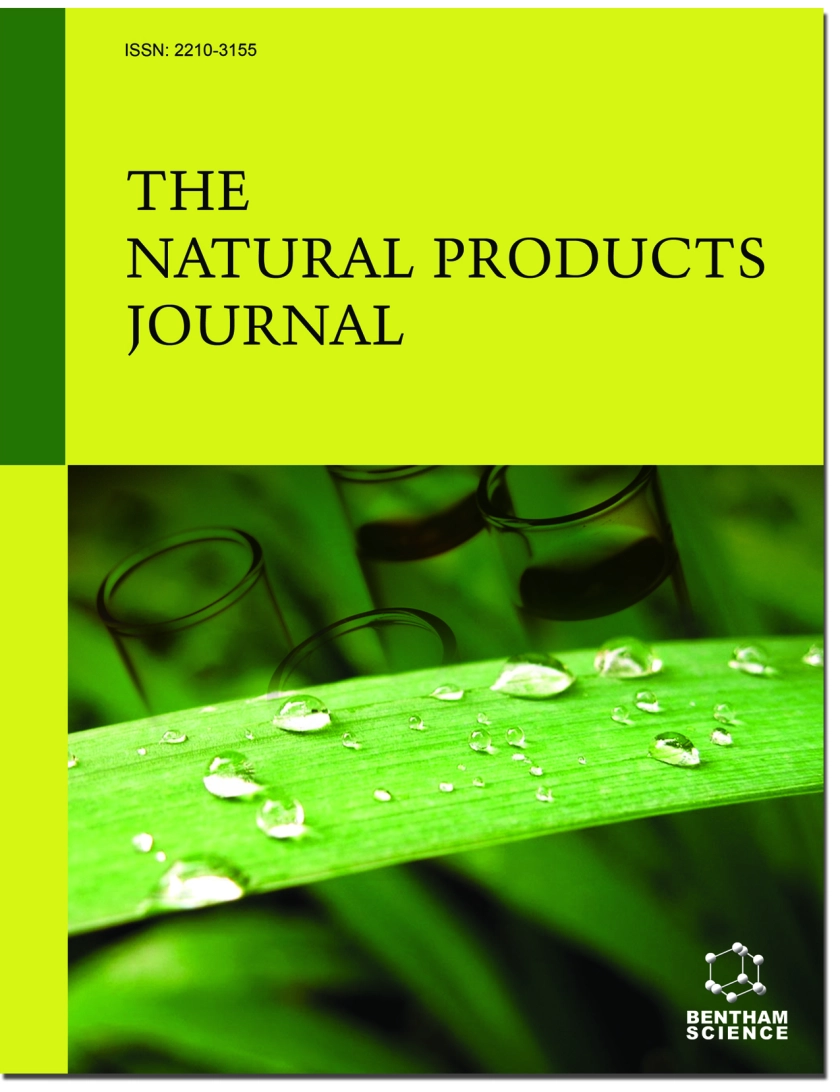
Pumpkin Seeds (Cucurbita spp.) as a Nutraceutical Used In Various Lifestyle Disorders
2024 Feb The Natural Products Journal Wal A, Singh MR, Gupta A, Rathore S, Rout RR, Wal P
Review Article Antioxidant Cardiovascular Disease Depression Anti-ParasitePumpkin seeds are recognised for their medicinal, nutritional, and cosmetic benefits, including anti-diabetic, heart disease prevention, anti-cancer, and antioxidant qualities.
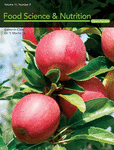
The effects of plum products consumption on lipid profile in adults: A systematic review and dose–response meta‐analysis
2024 Feb 25 Food Science & Nutrition Heydarian A, Tahvilian N, Asbaghi O, Cheshmeh S, Nadery M, Aryaeian N
Systematic Review Cholesterol LDL PlumEating plums, especially dried plums, significantly lowers LDL levels and total cholesterol levels, particularly in adults with existing health issues.
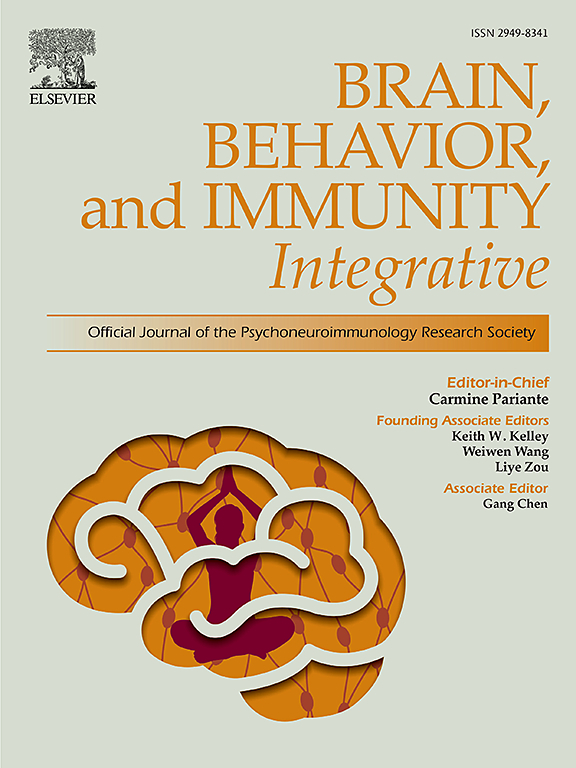
Traditional Chinese medicine research on attention deficit hyperactivity disorder: Theory, treatment and mechanism
2024 Jan Brain Behavior and Immunity Integrative Zhou C, Wang J
Traditional Chinese Medicine offers a holistic approach to attention deficit hyperactivity disorder (ADHD) treatment, focusing on yin-yang imbalances, pattern identification, and interventions encompassing both pharmacological and non-pharmacological methods, with potential modulation of neuroimmunological factors and neurotransmitters.
Review Article ADHD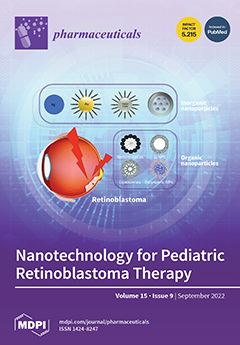
Exploring the Clinical Applications of Lemongrass Essential Oil: A Scoping Review
2024 Jan 25 Pharmaceuticals Kusuma IY, Perdana MI, Vágvölgyi C, Csupor D, Takó M
Review Article Lemongrass Oil Dandruff Gingivitis Periodontitis LemongrassLemongrass essential oil can effectively treat periodontitis, gingivitis, oral malodour, skin aging, and dandruff, and it is comparable to certain established treatments.
Research insights are moderated by the Research Hub team and offer an at-a-glance overview of interesting research findings.

2024 Food Science & Nutrition
Eating plums, especially dried plums, significantly lowers LDL levels and total cholesterol levels, particularly in adults with existing health issues.
Systematic Review Cholesterol LDL Plum
The effects of plum products consumption on lipid profile in adults: A systematic review and dose–response meta‐analysis
Heydarian A, Tahvilian N, Asbaghi O, Cheshmeh S, Nadery M, Aryaeian N

2024 The Natural Products Journal
Pumpkin seeds are recognised for their medicinal, nutritional, and cosmetic benefits, including anti-diabetic, heart disease prevention, anti-cancer, and antioxidant qualities.
Review Article Anti-Parasite Antioxidant Cardiovascular Disease Depression
Pumpkin Seeds (Cucurbita spp.) as a Nutraceutical Used In Various Lifestyle
Disorders
Wal A, Singh MR, Gupta A, Rathore S, Rout RR, Wal P

2024 Pharmaceuticals
Lemongrass essential oil can effectively treat periodontitis, gingivitis, oral malodour, skin aging, and dandruff, and it is comparable to certain established treatments.
Review Article Dandruff Gingivitis Lemongrass Lemongrass Oil Periodontitis
Exploring the Clinical Applications of Lemongrass Essential Oil: A Scoping Review
Kusuma IY, Perdana MI, Vágvölgyi C, Csupor D, Takó M
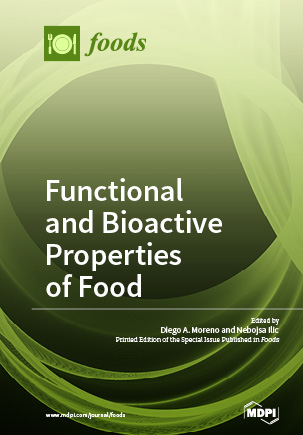
2024 Foods
Jujube, a Chinese native plant with numerous active components, exhibits calming effects, nourishes blood, and strengthens the spleen and stomach, alongside promising neuroprotective and cardiovascular benefits.
Review Article Cardiovascular Disease Jujube Neuroprotective
A Literature Review of the Pharmacological Effects of Jujube
Zhu D, Jiang N, Wang N, Zhao Y, Liu X
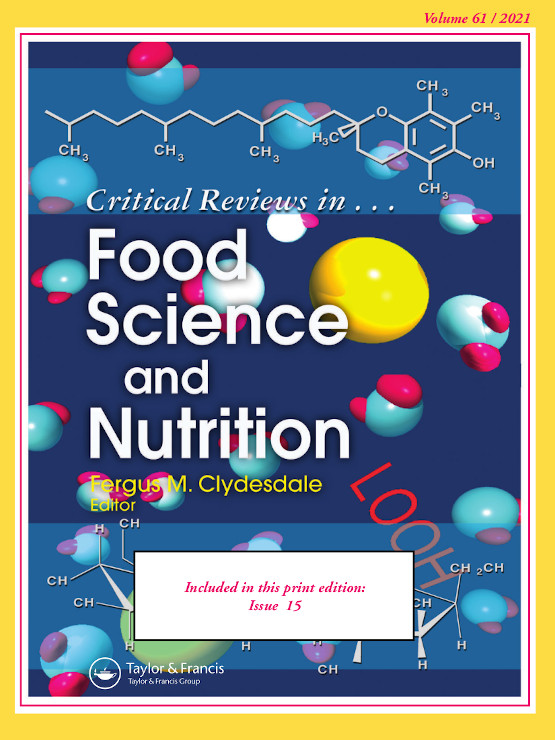
2023 Critical Reviews in Food Science and Nutrition
Consuming carrots can significantly decrease the risk of cancer.
Meta-Analysis Cancer Carrot
Carrot intake is consistently negatively associated with cancer incidence: A systematic review and meta-analysis of prospective observational studies
Ojobor CC, O’Brien GM, Siervo M, Ogbonnaya C, Brandt K
Review Articles
Review articles summarise and critically evaluate the current state of research on a specific topic or field by synthesising multiple primary research studies.

Pumpkin Seeds (Cucurbita spp.) as a Nutraceutical Used In Various Lifestyle Disorders
2024 Feb The Natural Products Journal Wal A, Singh MR, Gupta A, Rathore S, Rout RR, Wal P
Review Article Antioxidant Cardiovascular Disease Depression Anti-ParasitePumpkin seeds are recognised for their medicinal, nutritional, and cosmetic benefits, including anti-diabetic, heart disease prevention, anti-cancer, and antioxidant qualities.

The effects of plum products consumption on lipid profile in adults: A systematic review and dose–response meta‐analysis
2024 Feb 25 Food Science & Nutrition Heydarian A, Tahvilian N, Asbaghi O, Cheshmeh S, Nadery M, Aryaeian N
Systematic Review Cholesterol LDL PlumEating plums, especially dried plums, significantly lowers LDL levels and total cholesterol levels, particularly in adults with existing health issues.

Traditional Chinese medicine research on attention deficit hyperactivity disorder: Theory, treatment and mechanism
2024 Jan Brain Behavior and Immunity Integrative Zhou C, Wang J
Traditional Chinese Medicine offers a holistic approach to attention deficit hyperactivity disorder (ADHD) treatment, focusing on yin-yang imbalances, pattern identification, and interventions encompassing both pharmacological and non-pharmacological methods, with potential modulation of neuroimmunological factors and neurotransmitters.
Review Article ADHD
Exploring the Clinical Applications of Lemongrass Essential Oil: A Scoping Review
2024 Jan 25 Pharmaceuticals Kusuma IY, Perdana MI, Vágvölgyi C, Csupor D, Takó M
Review Article Lemongrass Oil Dandruff Gingivitis Periodontitis LemongrassLemongrass essential oil can effectively treat periodontitis, gingivitis, oral malodour, skin aging, and dandruff, and it is comparable to certain established treatments.

A Literature Review of the Pharmacological Effects of Jujube
2024 Jan 06 Foods Zhu D, Jiang N, Wang N, Zhao Y, Liu X
Review Article Cardiovascular Disease Neuroprotective JujubeJujube, a Chinese native plant with numerous active components, exhibits calming effects, nourishes blood, and strengthens the spleen and stomach, alongside promising neuroprotective and cardiovascular benefits.
Clinical Trials
Clinical trials are research studies that involve people and are conducted to evaluate the safety and efficacy of new treatments or interventions, such as drugs, medical devices, or behavioural therapies.
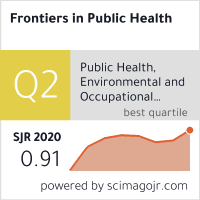
Acupuncture for comorbid depression and insomnia in perimenopause: A feasibility patient-assessor-blinded, randomized, and sham-controlled clinical trial
2023 Feb 06 Frontiers in Public Health Zhao FY, Zheng Z, Fu QQ, Conduit R, Xu H, Wang HR, et al.
Randomised Controlled Trial Perimenopausal DepressionAcupuncture can improve both perimenopausal depression and insomnia with short-medium term effects while being a safe treatment.
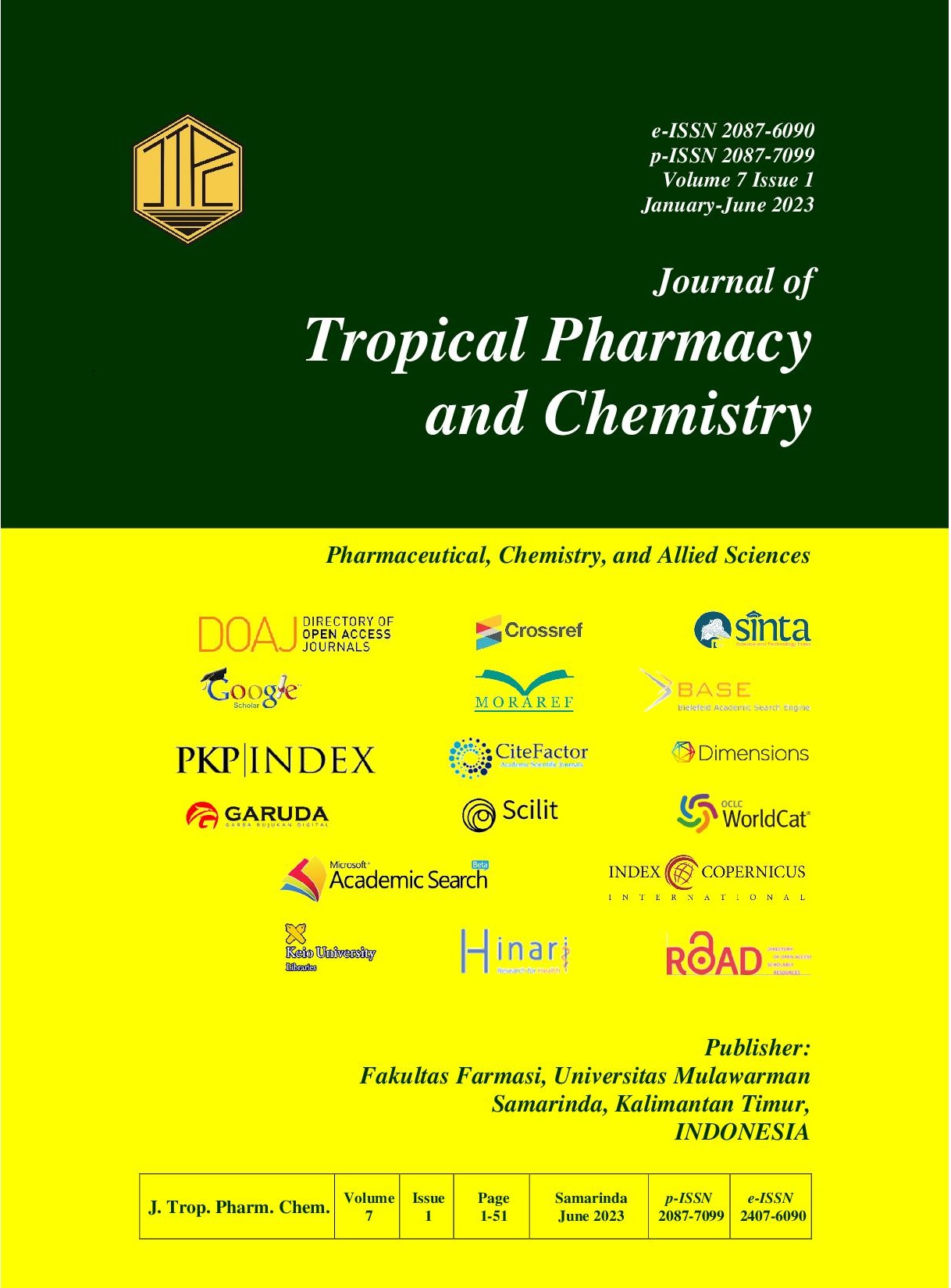
Effect of Combination of Dark Chocolate and Herbal Ingredients for Dysmenorrhea in Late Adolescents
2023 Jan 17 Journal of Tropical Pharmacy and Chemistry Azizah RNP, Anggreini P, Prasetya F
Randomised Controlled Trial Period Pain Dark Chocolate Honey SambilotoThe combination of dark chocolate with herbs could be one of the therapies for period pain.
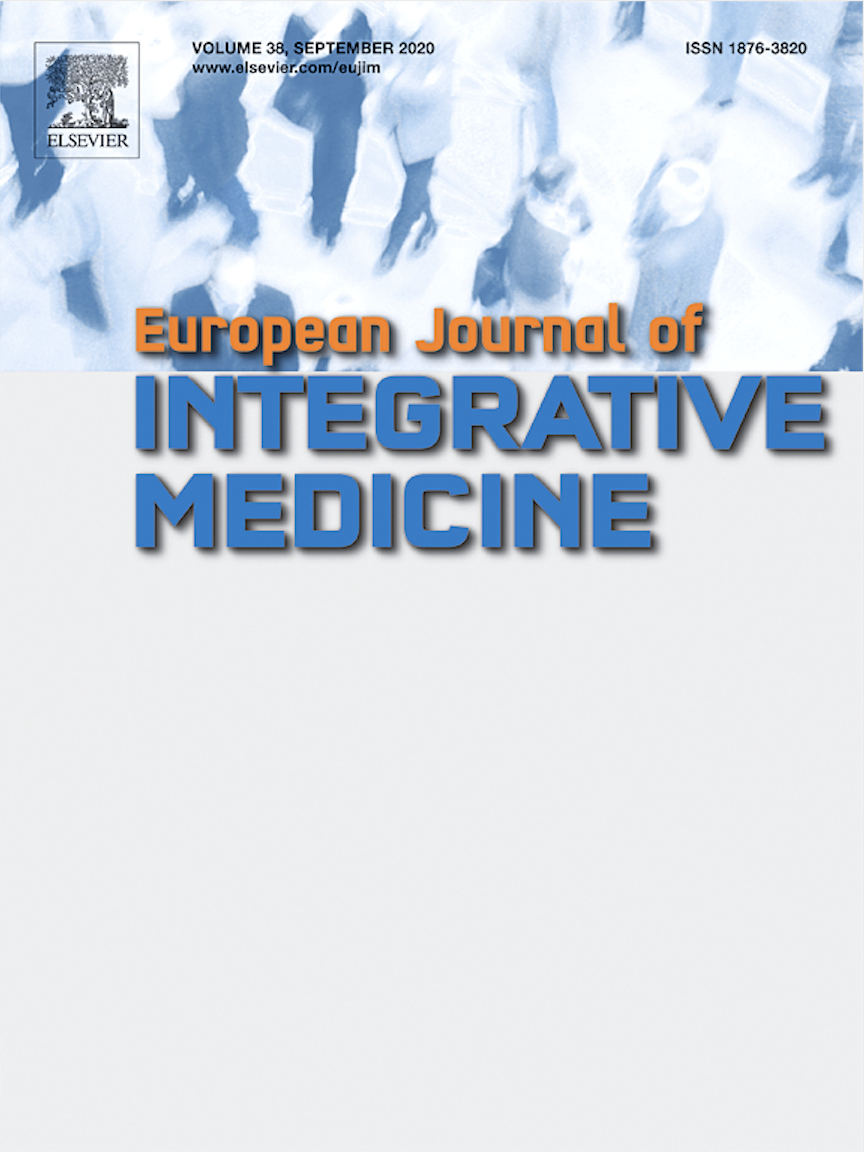
The effect of dark chocolate and music on pain and anxiety in young women with primary dysmenorrhea: Randomized controlled trial
2022 Dec European Journal of Integrative Medicine Karakuş Selçuk A, Baysal E
Randomised Controlled Trial Dark Chocolate Period PainBoth dark chocolate and music medicine significantly reduced menstrual pain and anxiety in young women with period pain.
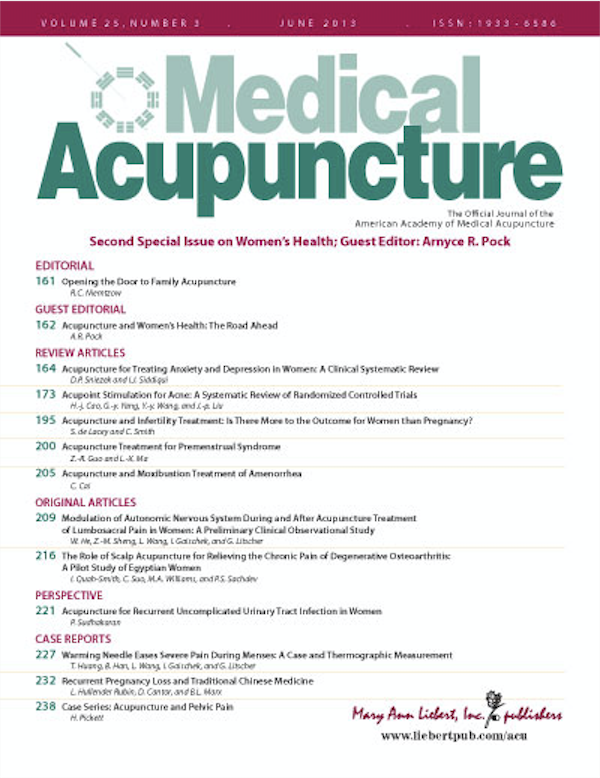
Efficacy of Press Needle at PC6 Neiguan and ST36 Zusanli as Adjuvant Therapy in Reducing Symptoms of Chemotherapy-Induced Nausea and Vomiting in Pediatric Cancer Patients Undergoing Chemotherapy
2022 Apr 01 Medical Acupuncture Bintoro DA, Nareswari I, Andriastuti M
Press needle acupuncture is able to reduce the Rhodes index of nausea, vomiting, and retching (RINVR) score and can be applied to pediatric patients because of its minimal side effects, but further research is needed to determine the appropriate treatment time.
Randomised Controlled Trial Acupuncture Children's Health Chemotherapy-Induced Nausea and Vomiting Vomiting Nausea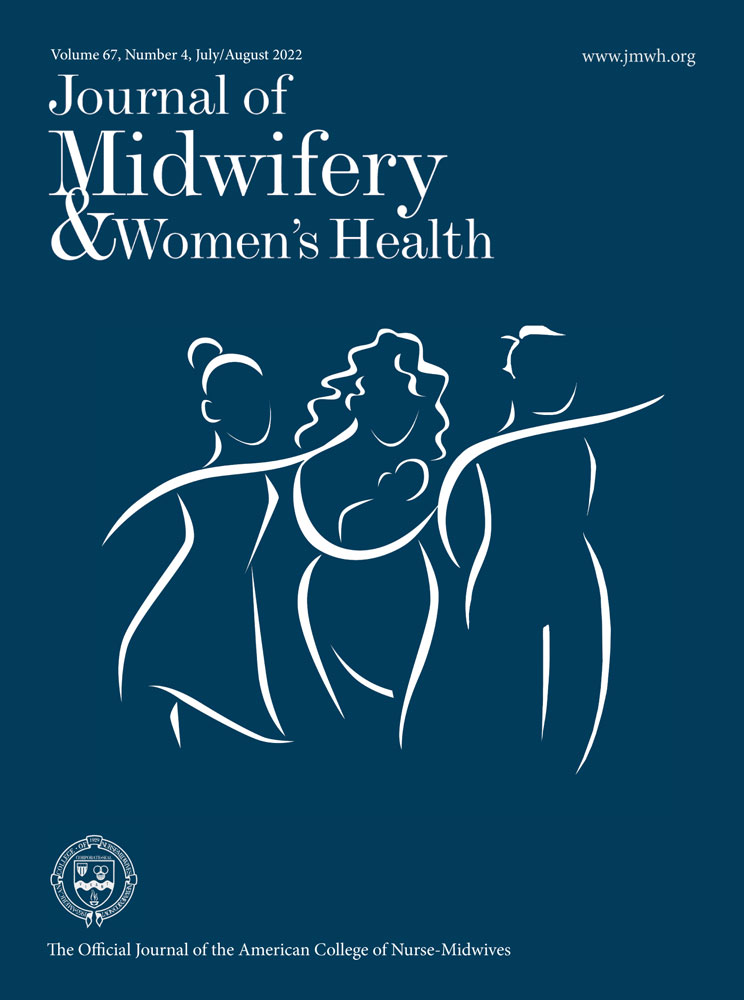
RASPBERRY LEAF IN PREGNANCY: ITS SAFETY AND EFFICACY IN LABOR
2022 Mar 04 Journal of Midwifery & Women's Health Simpson M, Parsons M, Greenwood J, Wade K
The lack of significant differences between the groups on measures expected to demonstrate the effect of raspberry leaf ingestion during pregnancy on labor prompted consideration of the issue of effectiveness of dosage level. Suggestions for further research are offered.
Randomised Controlled Trial Labour InductionStudy Protocols
Published study protocols are detailed plans that outline the objectives, methodology, statistical analyses, and organisation of a research study that have been made publicly available for others to review and use as a reference.

Efficacy and safety of acupuncture in combination with Chinese herbal medicine in dealing with osteoporosis: A protocol for a systematic review and network meta-analysis
2022 Dec 30 Medicine Long P, Ju S, Wang J
The current systematic review and network meta-analysis will provide the effectiveness and safety of acupuncture in combination with CHM in dealing with OP. The research will provide reliable evidence for the clinical use of acupuncture in combination with CHM in dealing with OP.
Study Protocol Acupuncture
Acupuncture for treating chronic spinal pain: A systematic review and meta-analysis protocol
2022 Dec 02 Medicine Li X, Han X, Li K
This review will provide directions and recommendations for future research and clinical practices of acupuncture for treating chronic spinal pain.
Study Protocol
Traditional Chinese medicine combined with Moxibustion in the treatment of “long-COVID”: A protocol for systematic review and meta-analysis
2022 Oct 28 Medicine Luo D, Liu B, Wang P, Liao H, Mao S, Chen H, et al.
This study will evaluate whether traditional Chinese medicine combined with moxibustion can effectively treat the symptoms of COVID-19 sequelae. It will also provide evidence whether there is benefit of traditional Chinese medicine combined with moxibustion in the treatment of COVID-19 sequelae. At the same time, our research results will provide a reference for clinical decision-making and guiding development in the future.
Study Protocol Long-COVID Moxibustion
Efficacy and safety of acupuncture combined with Chinese herbal medicine traditional Chinese medicine for poststroke cognitive impairment
2022 Mar 04 Medicine Wang Y, Guo S, Xiao ML, Zhang H
The systematic review will provide a new paradigm for acupuncture combined with TCM in the intervention of PSCI, and further provide scientific evidence for the efficacy and safety of acupuncture combined with TCM in the treatment of PSCI.
Study Protocol Chinese Herbal Medicine Acupuncture Cognitive Function
Efficacy and safety of traditional Chinese medicine decoction in the treatment of adolescent myopia
2022 Feb 11 Medicine Tian X, Sun Z, Li Y, Jiang X, Li X, Yu P
The results of this study will evaluate the efficacy and safety of TCM decoction in the treatment of adolescent myopia, and provide decision-making references for future clinical and scientific research.
Study Protocol Chinese Herbal Medicine Adolescent MyopiaPresentation Slides

Systematic Review
Eating plums, especially dried plums, significantly lowers LDL levels and total cholesterol levels, particularly in adults with existing health issues.
Heydarian A, Tahvilian N, Asbaghi O, Cheshmeh S, Nadery M, Aryaeian N

Review Article
Pumpkin seeds are recognised for their medicinal, nutritional, and cosmetic benefits, including anti-diabetic, heart disease prevention, anti-cancer, and antioxidant qualities.
Wal A, Singh MR, Gupta A, Rathore S, Rout RR, Wal P

Review Article
Lemongrass essential oil can effectively treat periodontitis, gingivitis, oral malodour, skin aging, and dandruff, and it is comparable to certain established treatments.
Kusuma IY, Perdana MI, Vágvölgyi C, Csupor D, Takó M

Review Article
Jujube, a Chinese native plant with numerous active components, exhibits calming effects, nourishes blood, and strengthens the spleen and stomach, alongside promising neuroprotective and cardiovascular benefits.
Zhu D, Jiang N, Wang N, Zhao Y, Liu X

Meta-Analysis
Consuming carrots can significantly decrease the risk of cancer.
Ojobor CC, O’Brien GM, Siervo M, Ogbonnaya C, Brandt K
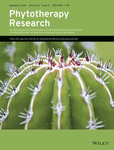
Systematic Review
Pomegranate can significantly enhance women's health during and after menopause by reducing hot flashes severity and other menopause symptoms.
Moeini R, Shirafkan H, Gorji N

Systematic Review
Kidney tonic herbs may enhance bone density and reduce fracture risk in patients with primary osteoporosis.
Li W, Ye B, Huang Z, Zhou H, Feng J, Chen Q, Huang H, Meng S, Qie F, Shi X.
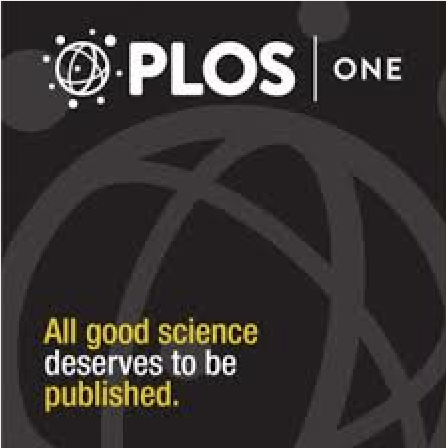
Meta-Analysis
Oral Chinese herbal medicines appear to enhance recovery when used as supplements to conventional treatment after sinus surgery.
Cui J, Lin W, May BH, Luo Q, Worsnop C, Zhang AL, Guo X, Lu C, Li Y, Xue CC
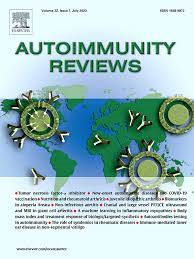
Systematic Review
Intermittent fasting may potentially influence autoimmune diseases like type 1 diabetes and rheumatoid arthritis, by reducing inflammation and supporting cellular repair mechanisms.
Barati M, Ghahremani A, Namdar Ahmadabad H
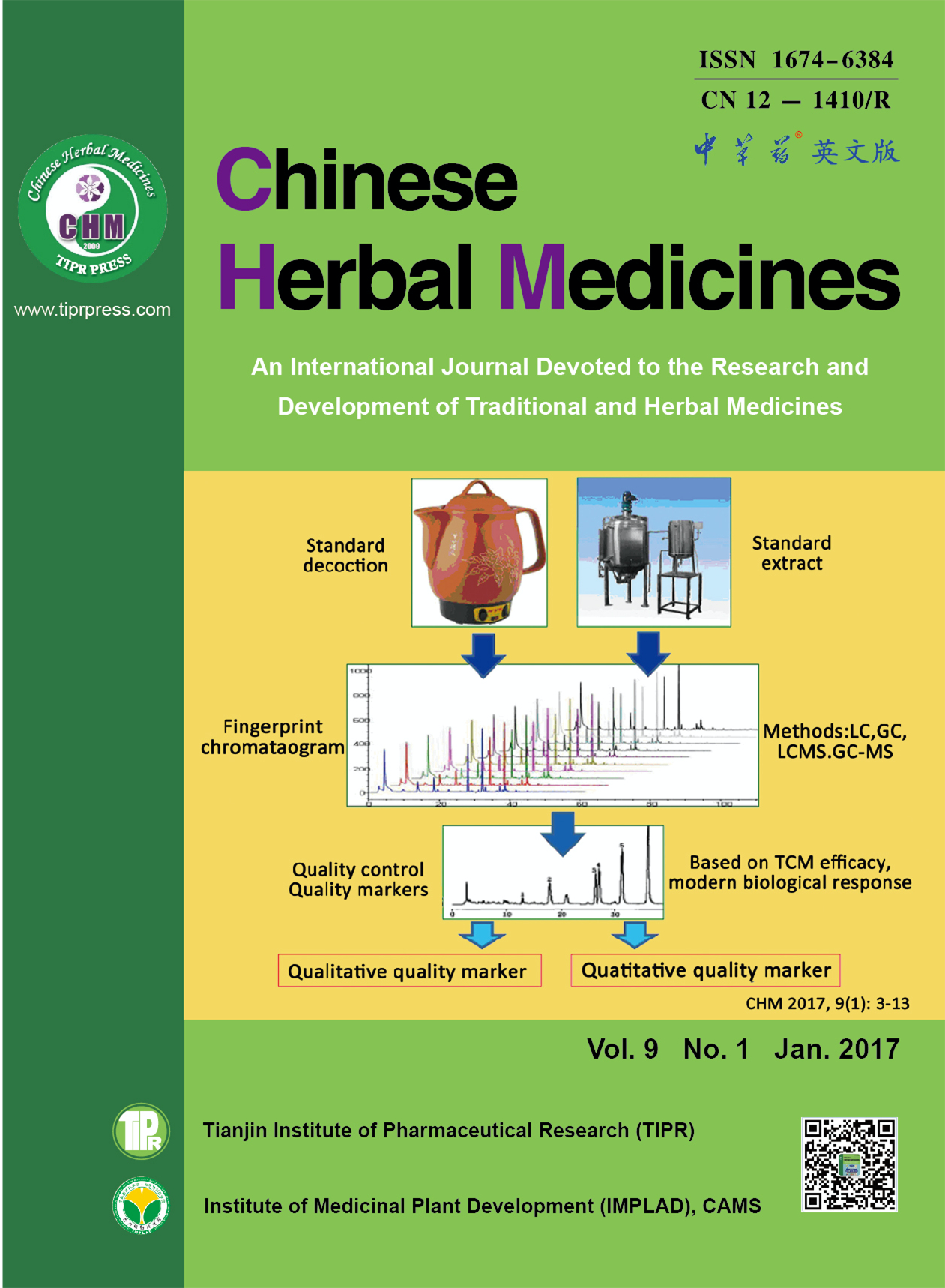
Review Article
Chinese herbal medicines (CHMs) possess multiple advantages, including multiple targets, pathways, and low toxicity, for the treatment of prostate cancer.
Kong F, Wang C, Zhang J, Wang X, Sun B, Xiao X, Zhang H, Song Y, Jia Y

Systematic Review
Natural calcium-rich mineral waters offer a bioavailable calcium source, beneficial for bone health, cardiovascular function, weight management, and overall well-being.
Pop MS, Cheregi DC, Onose G, Munteanu C, Popescu C, Rotariu M, Turnea MA, Dograru G, Ionescu EV, Oprea D, Iliescu MG, Minea M, Stanciu LE, Silișteanu SC, Oprea C
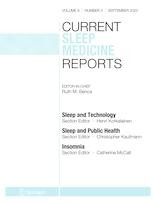
Systematic Review
There is evidence to support significant improvements to total sleep time and sleep efficiency with the ingestion of tart cherries.
Stretton B, Eranki A, Kovoor J, Bacchi S, Gupta A, Maddern G, Boyd M
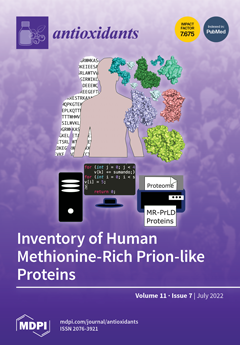
Review Article
Pomegranate and its components could offer considerable potential as dietary supplements or supports in treatment for cardiovascular and non-cardiovascular diseases.
Benedetti G, Zabini F, Tagliavento L, Meneguzzo F, Calderone V, Testai L

Review Article
Eating apples and apple products can enhance health by protecting the cardiovascular system, combating cancer and cognitive impairment, and improving hair growth, among other beneficial effects.
Zhang Y, Zeng M, Zhang X, Yu Q, Zeng W, Yu B, Gan J, Zhang S, Jiang X
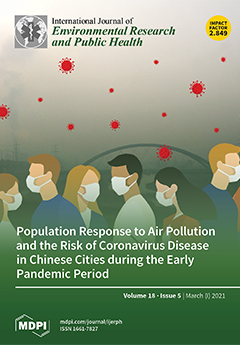
Systematic Review
Consumption of natural mineral water increases diuresis in both humans and animals, evident sometimes after just one intake.
Vitali M, Fontana M, De Giorgi A, Marotta D, Crucianelli S, Antonucci A, Protano C
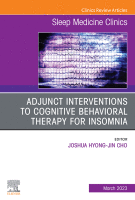
Theoretical Article
Acupuncture may enhance the effectiveness of cognitive-behavioral therapy for people suffering from insomnia and related conditions.
Kutana S, Mao JJ, Garland SN

Randomised Controlled Trial
Acupuncture can improve both perimenopausal depression and insomnia with short-medium term effects while being a safe treatment.
Zhao FY, Zheng Z, Fu QQ, Conduit R, Xu H, Wang HR, Huang YL, Jiang T, Zhang WJ, Kennedy GA
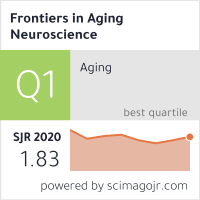
Review Article
Honey exhibits multifaceted benefits for brain health, acting as a memory booster, neuroprotective agent, anti-stress, and anti-nociceptive substance, fostering potential therapeutic applications to enhance overall cognitive well-being.
Zamri NA, Ghani N, Ismail CAN, Zakaria R, Shafin N

Randomised Controlled Trial
The combination of dark chocolate with herbs could be one of the therapies for period pain.
Azizah RNP, Anggreini P, Prasetya F

Cohort Study
The Mediterranean diet, rich in organic vegetables, fruits, whole grains, and healthy fats, can markedly improve male fertility by increasing testosterone levels and reducing sperm DNA fragmentation.
Corsetti V, Notari T, Montano L

Systematic Review
Chinese Herbal Medicines may help with chronic sinusitis and acute rhinosinusitis symptoms with LDXGT and modified CEZS working well, especially for CRS.
Cui J, Lin W, May BH, Luo Q, Worsnop C, Zhang AL, Guo X, Lu C, Li Y, Xue CC

Randomised Controlled Trial
Both dark chocolate and music medicine significantly reduced menstrual pain and anxiety in young women with period pain.
Karakuş Selçuk A, Baysal E
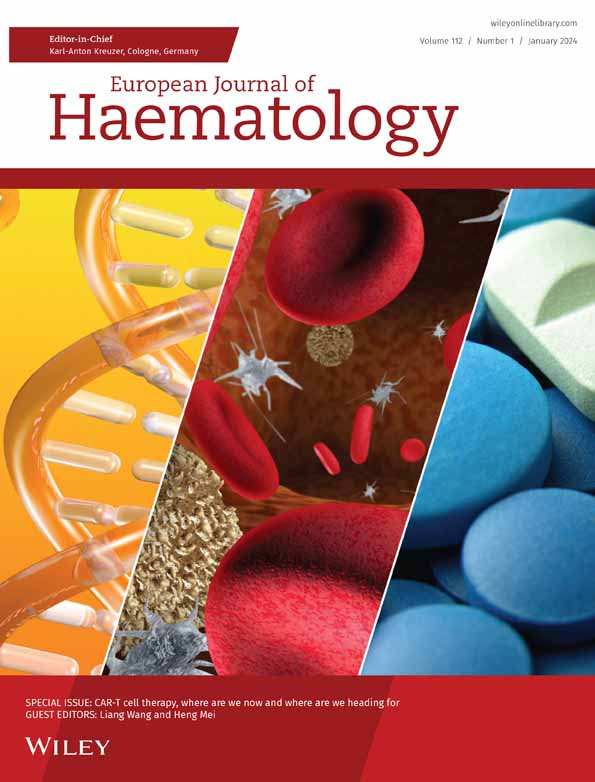
Theoretical Article
The hepcidin-ferroportin iron regulatory pathway prevents iron overload, creating an inherent limit on gastrointestinal iron absorption, and hence affects the efficacy of oral iron supplementation.
Lo JO, Benson AE, Martens KL, Hedges MA, McMurry HS, DeLoughery T, Aslan JE, Shatzel JJ
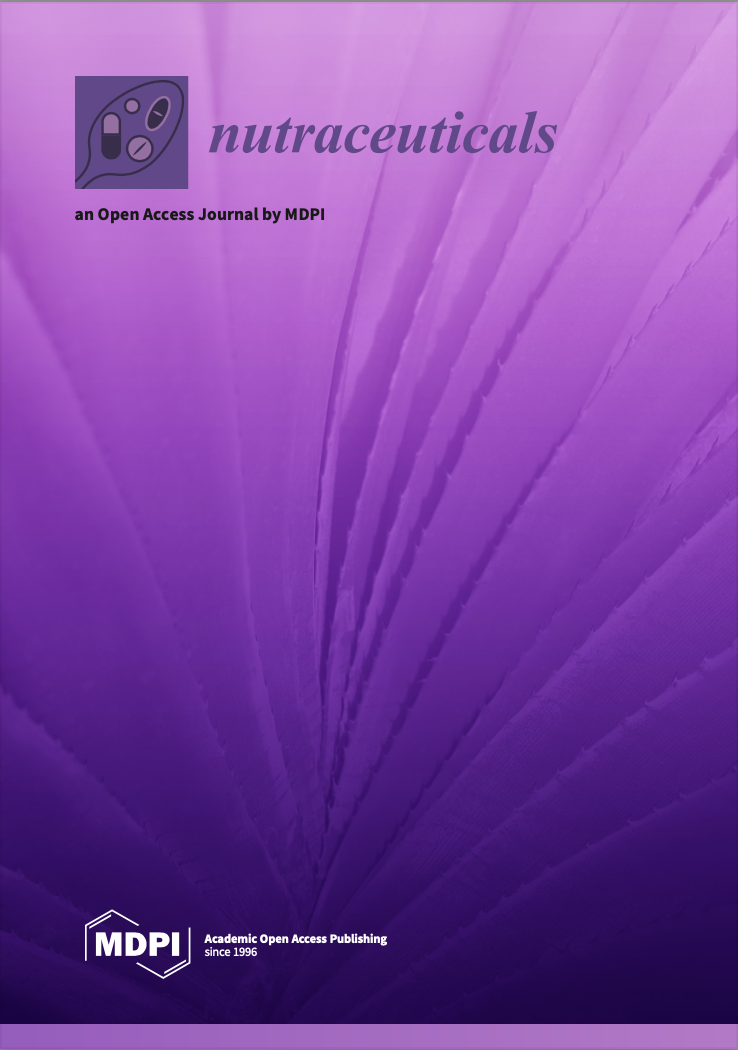
Animal Study
A. lappa (burdock root) benefits diabetic rodents by reducing blood glucose and improving lipids, but human effects are uncertain
Watanabe S, Yamabe S, Shimada M
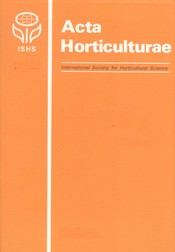
Review Article
Chinese jujube contains cAMP, a compound usually absent in plant cells, which may accelerate our understanding of plant cAMP metabolism.
Yuan Y, Liu ZG, Feng C, Liu MJ
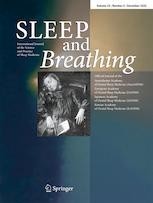
Systematic Review
Traditional Chinese Medicine (TCM) practitioners attributed OSAHS to turbid phlegm and blood stasis, offering various TCM treatments for different OSAHS categories.
Lv R, Zhao Y, Wang Z, Liu X, Wang Z, Li S, Yu Q, Yue H, Yin Q
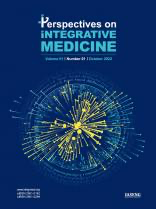
Practice Guideline
Acupuncture is safe and may be a cost-effective treatment for shoulder pain.
Birch S, Lee MS, Kim TH, Alraek T
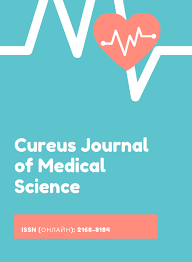
Systematic Review
Honey is effective in treating coughs in children above 12 months.
Mashat GD, Hazique M, Khan KI, Ramesh P, Kanagalingam S, Ul Haq Z, Victory Srinivasan N, Khan AI, Khan S

Review Article
Adzuki beans' high lysine content, antioxidative, antibacterial, and anti-inflammatory properties highlight their dual-use as a nutritious food source and a therapeutic agent for various diseases.
Wang Y, Yao X, Shen H, Zhao R, Li Z, Shen X, Wang F, Chen K, Zhou Y, Li B, Zheng X, Lu S

Systematic Review
Acupuncture coupled with traditional Chinese medicine may be more effective and safer than conventional Western medicine in treating chronic urticaria.
Lu Z, Zhou Q, Chai S, Yang H, Wang J, Luo H, Cao Y, Tao M

Systematic Review
The study found that acupuncture as an adjuvant therapy for frozen-thawed embryo transfer (FET) in infertile women had positive effects on pregnancy outcomes.
Zhu C, Xia W, Huang J, Zhang X, Li F, Yu X, Ma J, Zeng Q
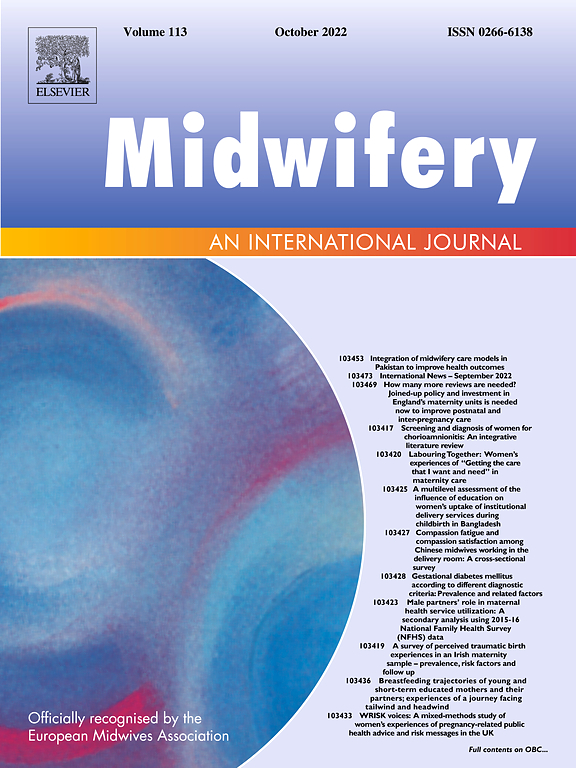
Systematic Review
It is vital that women are provided with evidence-based postnatal care strategies to enhance perineal healing and resumption of normal activities.
White C, Atchan M

Meta-Analysis
Patients with ulcerative colitis (UC) experienced greater clinical improvement and fewer adverse effects when treated with a combination of Traditional Chinese and Western medicine compared to Western medicine alone.
Chen S, Ji G, Liu X, Yang M, Zhang Y, Cao J, Pan Y
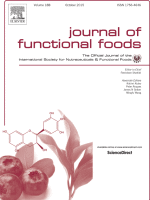
Review Article
Polysaccharides from natural food sources like fungi and plants can significantly enhance intestinal health and prevent ulcerative colitis (UC) through various physiological activities.
Pan X, Yin M, Guo M, Niu X, Han L
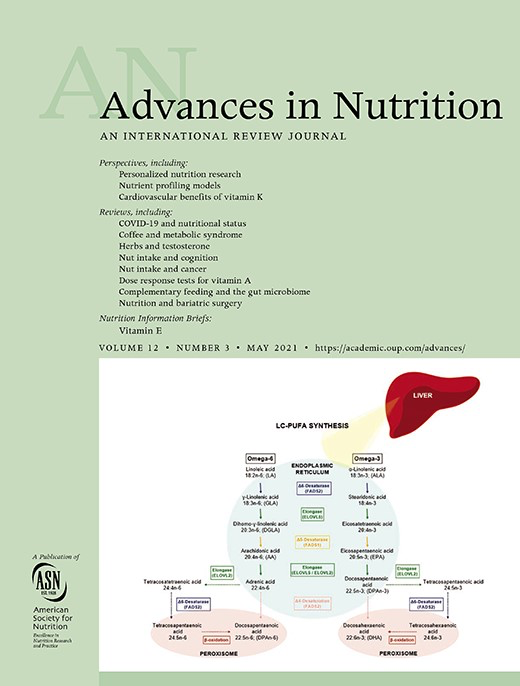
Systematic Review
Prunes demonstrate potential as a dietary intervention to protect against, prevent and even reverse bone loss in osteoporosis, particularly in postmenopausal women.
Damani JJ, De Souza MJ, VanEvery HL, Strock NCA, Rogers CJ

Review Article
Xiao Yao San has potential as an effective and safe alternative treatment for depression, offering multiple mechanisms of action for its antidepressant effects.
Chen J, Lei C, Li X, Wu Q, Liu C, Ma Q, Chen J.

Systematic Review
Vitamin D supplementation, particularly in doses greater than 2,000 IU/day, can help reduce depressive symptoms in adults.
Mikola T, Marx W, Lane MM, Hockey M, Loughman A, Rajapolvi S, Rocks T, O’Neil A, Mischoulon D, Valkonen-Korhonen M, Lehto SM, Ruusunen A

Systematic Review
Acupuncture, specifically electroacupuncture and bee venom acupuncture, shows promise as a growing therapeutic approach in the treatment of Parkinson's Disease.
Li X, Wei W, Wang Y, Wang Q, Liu Z
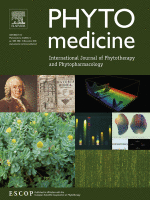
Review Article
Chinese Herbal Medicine Prescriptions (CHMPs) have demonstrated to be potentially effective in managing Inflammatory Bowel Disease (IBD) with a comprehensive, holistic approach.
Zhang S, Luo H, Tan D, Peng B, Zhong Z, Wang Y
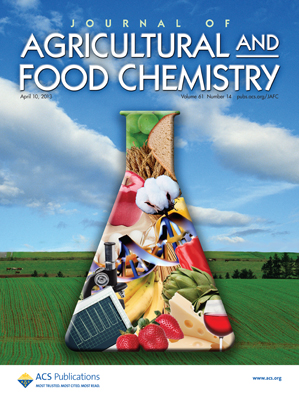
Review Article
Jujube nutrients may offer potential therapeutic benefits including antioxidant, antibacterial, anti-inflammatory functions, and improving sleep quality and learning.
Hua Y, Xu X, Guo S, Xie H, Yan H, Ma X, Niu Y, Duan JA

Systematic Review
Guizhi Shaoyao Zhimu Decoction was more effective and had fewer adverse reactions compared to the control group in the treatment of gout and the combined use of modified GSZD with other treatments showed decreased levels of C-reactive protein and erythrocyte sedimentation rate.
Liu H, Chi X, Zhang H, Shi H, Pan J, Wang Y, Xue X, Lu Y, Song X, Ma K
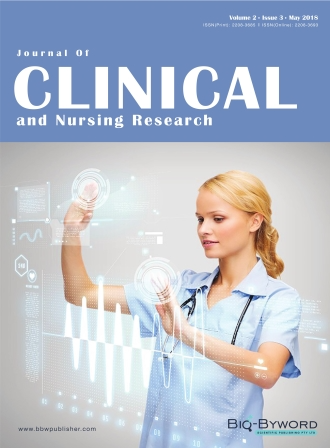
Review Article
Traditional Chinese medication, acupuncture, and their integration can be used effectively for the treatment of Retinitis Pigmentosa (RP) improving vision and visual field.
Yang Q, Zhang L, Cheng J, Tong J

Systematic Review
Acupuncture shows potential benefits in stroke rehabilitation, particularly for shoulder-hand syndrome post-stroke.
Choi TY, Jun JH, Lee HW, Yun JM, Joo MC, Lee MS

Review Article
Ellagic acid, commonly found in various plant foods, can enhance cancer treatment by boosting the effects of chemotherapy and radiotherapy while reducing their side effects.
Xue P, Zhang G, Zhang J, Ren L

Review Article
Acupuncture, particularly when used alongside antidepressants, can effectively alleviate various types of depression symptoms and reduce side effects of medication.
Yang, Na-Na; Lin, Lu-Lu; Li, Yue-Jie; Li, Hong-Ping; Cao, Yan; Tan, Chun-Xia; Hao, Xiao-Wan; Ma, Si-Ming; Wang, Lu; Liu, Cun-Zhi
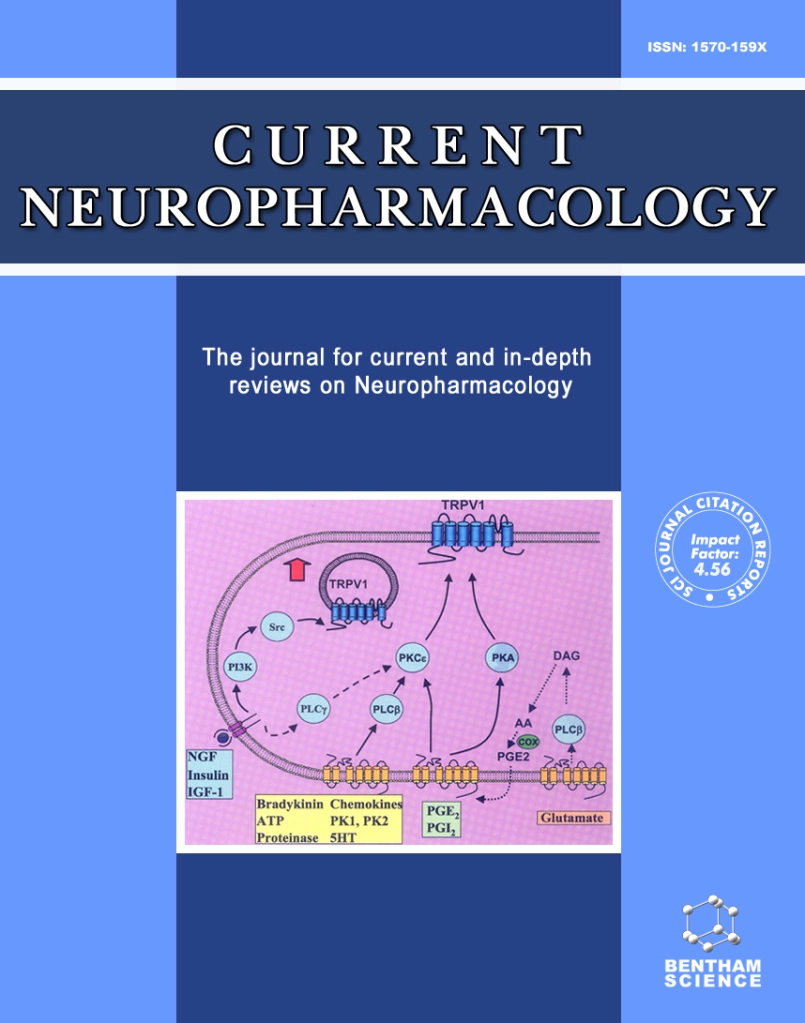
Review Article
Acupuncture could help manage different types of depression by increasing neuroplasticity, decreasing brain inflammation, and reducing side effects of conventional antidepressant treatment.
Yang NN, Lin LL, Li YJ, Li HP, Cao Y, Tan CX, Hao XW, Ma SM, Wang L, Liu CZ

Review Article
Modern extraction techniques improve the extraction of bioactive compounds from black soybeans, which have potential use in functional foods and nutraceutical components.
Kumar M, Suhag R, Hasan M, Dhumal S, Radha , Pandiselvam R, Senapathy M, Sampathrajan V, Punia S, Sayed AAS, Singh S, Kennedy JF

Systematic Review
Acupuncture may be effective and safe for short-term pain reduction and functional improvement in hand-and-wrist conditions.
Trinh K, Zhou F, Belski N, Deng J, Wong CY

Review Article
Morinda citrifolia (Noni) exhibits potential therapeutic activities for treating central nervous system disorders by targeting mainly receptors, enzyme transporters, and has neuroprotective activity.
Asiya Begum, Vijayapandi Pandy, Jithendra Chimakurthy, Rama Rao Nadendla

Review Article
Coconut water possesses unique compound profiles that imbue it with a broad spectrum of medical properties, incorporating aspects of nutrition, pharmacology, and disease prevention.
Rethinam P, Krishnakumar V
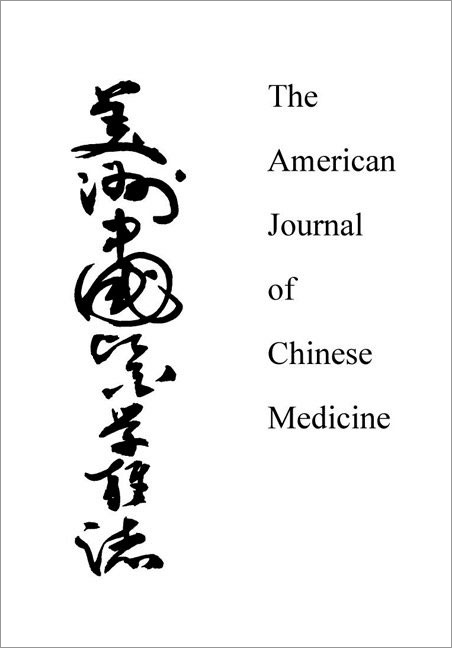
Systematic Review
Fresh and dried ginger displays key botanical, phytochemical and ethnopharmacological differences, which are fundamental for their specific clinical uses in treating gastrointestinal issues.
Lai W, Yang S, Lin X, Zhang X, Huang Y, Zhou J, Fu C, Li R, Zhang Z
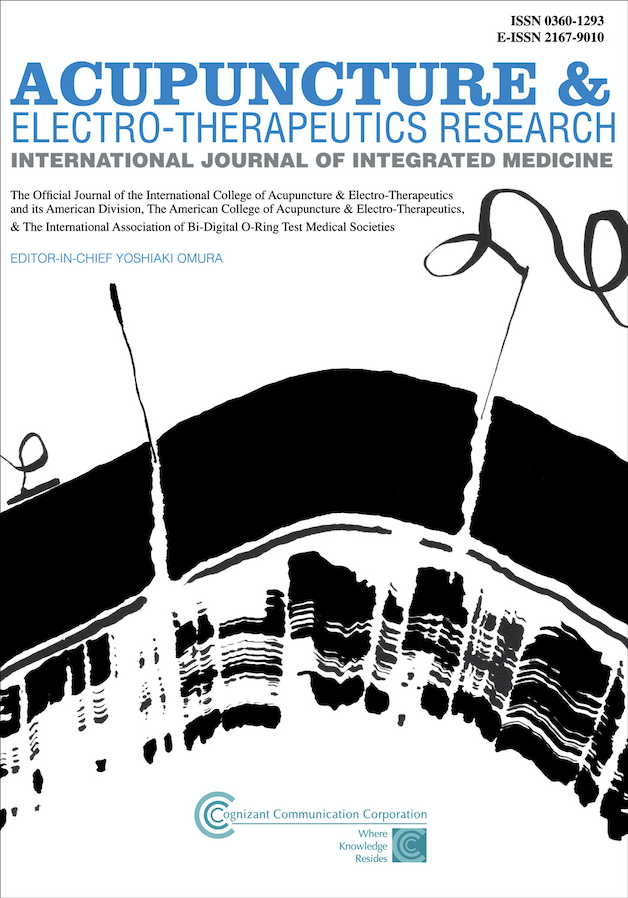
Systematic Review
Compared with conventional treatment, acupuncture as an adjuvant therapy can significantly reduce the incidence of post-stroke fatigue.
Chen Y, Peng M, Li Y
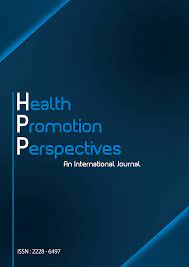
Systematic Review
Pomegranate has been confirmed to improve clinical features and reduce inflammatory, oxidative stress, and apoptosis markers in osteoarthritis.
Malek Mahdavi A, Javadivala Z

Network Pharmacology
Luteolin, a component of traditional Chinese medicine herb Zi Su Ye, has been found to alleviate kidney disease stage 3-5 by reducing renal tubular epithelial cell apoptosis.
Yong C, Zhang Z, Huang G, Yang Y, Zhu Y, Qian L, Tian F, Liu L, Wu Q, Xu Z, Chen C, Zhao J, Gao K, Zhou E

Randomised Controlled Trial
Date fruit consumption appears to be useful for promoting and increasing breast milk quantity in breastfeeding mothers. Date fruits may be an alternative galactagogue.
Modepeng T, Pavadhgul P, Bumrungpert A, Kitipichai W

Systematic Review
Traditional Chinese herbal medicine shows promising efficacy in improving clinical symptoms and reducing recurrence of multiple sclerosis.
Seo Y, Jin C, Cho S-Y, Park S-U, Jung W-S, Moon S-K, Park J-M, Ko C-N, Cho K-H and Kwon S
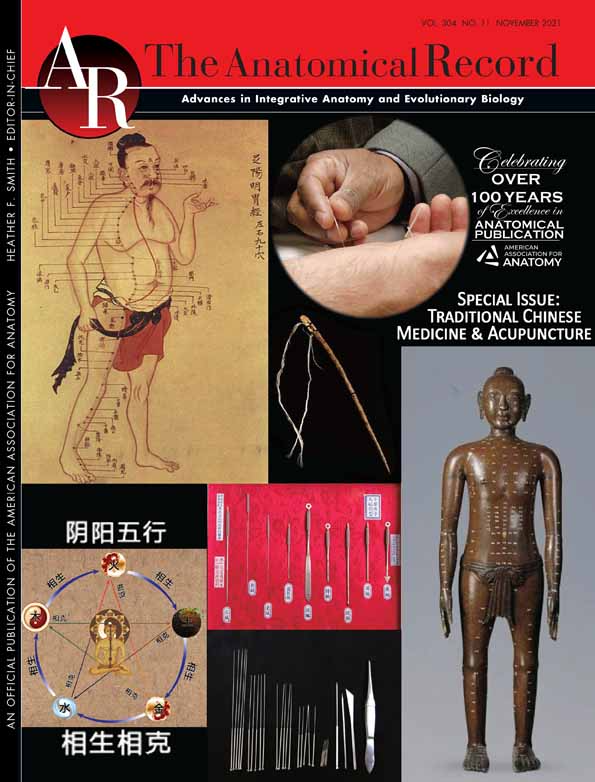
Systematic Review
Acupuncture, either alone or combined with antidepressants can effectively treat depression, and offers faster onset and longer-lasting efficacy compared to antidepressants.
Zhang Z, Li S, Meng H, Wang Y, Zhang Y, Wu M, Chen Y, Rong P, Wang Y
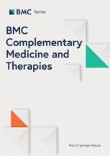
Meta-Analysis
Traditional Chinese Medicine may potentially be a viable treatment option for ulcerative colitis, but its effectiveness varies depending on the method of administration applied.
Sun YX, Wang X, Liao X, Guo J, Hou WB, Wang X, Liu JP, Liu ZL

Review Article
Yu Xing Cao, a traditional Asian medicine, demonstrates organ protection, immune regulation, and anti-tumour activity when analysed in modern research.
Wu Z, Deng X, Hu Q, Xiao X, Jiang J, Ma X, Wu M

Systematic Review
Chocolate and cocoa product consumption significantly improved lipid profiles, but had no significant effect on other heath aspects such as cognitive function and blood pressure.
Tan TYC, Lim XY, Yeo JHH, Lee SWH, Lai NM

Systematic Review
Treatment of rheumatoid arthritis using acupuncture with Western medicine was associated with higher efficacy and lower risks than treatment with Western medicine alone.
Huo X, Liang L, Ding X, Bihazi A, Xu H

Cohort Study
Stroke patients who received acupuncture had a lesser risk of insomnia across various demographic and medical variables.
Qiu X, Han NS, Yao JX, Yu FR, Lin YY, Zhuang X
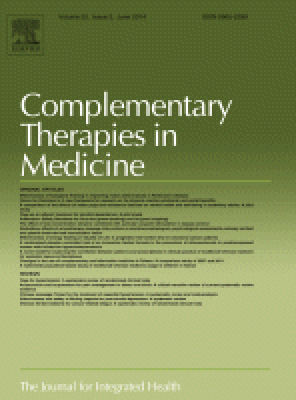
Experimental Study
The Licorice and Jujube formula is seen as commonly used and potentially effective for treating menopausal symptoms as per classical Chinese medicine.
Coyle ME, Liu J, Yang H, Wang K, Zhang AL, Guo X, Lu C, Xue CC
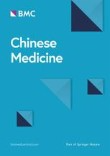
Systematic Review
A variety of Chinese herbal medicines have been reported to effectively prevent or treat nonalcoholic fatty liver disease by regulation of the gut microbiota and the gut-liver axis.
Yang XF, Lu M, You L, Gen H, Yuan L, Tian T, Li CY, Xu K, Hou J, Lei M
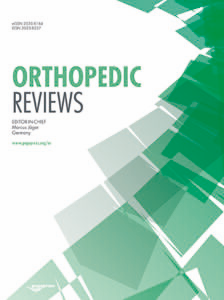
Review Article
Increasing evidence supports the use of acupuncture as part of multimodal approaches to the treatment of fibromyalgia with additive efficacy to traditional therapy.
Berger AA, Liu Y, Nguyen J, Spraggins R, Reed DS, Lee C, Hasoon J, Kaye AD
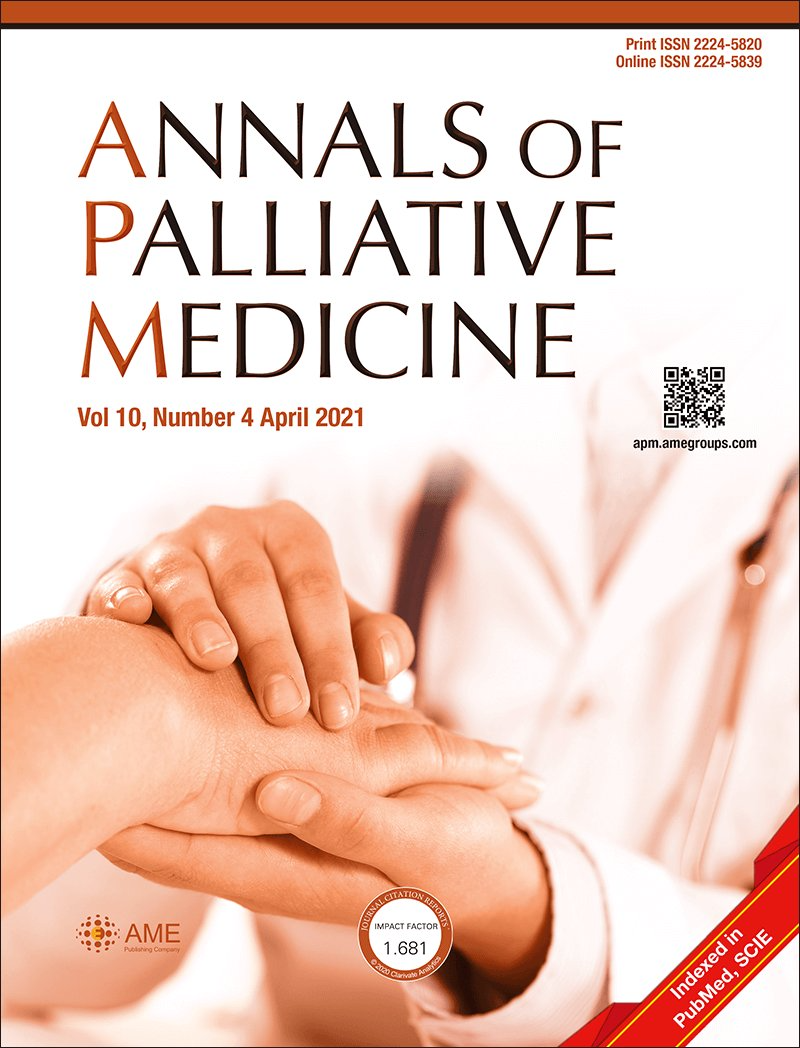
Systematic Review
Chinese medicine could effectively improve thyroid function and the clinical symptoms of patients with diabetic nephropathy.
Zhang X, Wu M, Zhou J, Zhou R, Luo Q, Yue R, Jin S.
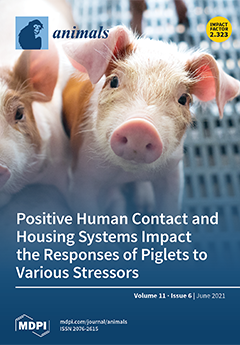
Animal Study
Goji berry supplementation in does' diet positively influences both their reproductive and productive performance, likely through adjustment of hormonal patterns and milk production.
Andoni E, Curone G, Agradi S, Barbato O, Menchetti L, Vigo D, Zelli R, Cotozzolo E, Ceccarini MR, Faustini M, Quattrone A, Castrica M, Brecchia G
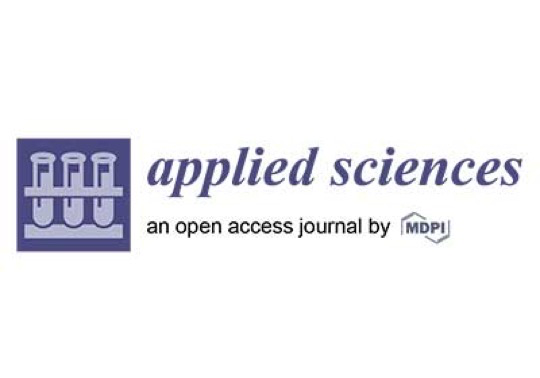
Review Article
There is a notable gap in scientific research on the potential health benefits and antioxidant activity of matcha tea compared to green tea.
Sivanesan I, Gopal J, Muthu M, Chun S, Oh JW

Review Article
Pomegranate has a variety of phytochemicals which possess wide-ranging activities including antioxidant, antimicrobial, anti-oncogenic properties, and resistance to cerebrovascular disease.
Ge S, Duo L, Wang J, GegenZhula , Yang J, Li Z, Tu Y

Systematic Review
Tai Chi has potential clinical value for treating many diseases, especially noncommunicable chronic diseases. The most common diseases were in the musculoskeletal system or connective tissue and the circulatory system.
Huang J, Wang D, Wang J

Review Article
The fresh rhizoma of Roscoe, a traditional Chinese medicine, has proven effects on the nervous and cardiovascular systems and has antibacterial, antitumor, and antioxidant properties.
Li X, Ao M, Zhang C, Fan S, Chen Z, Yu L
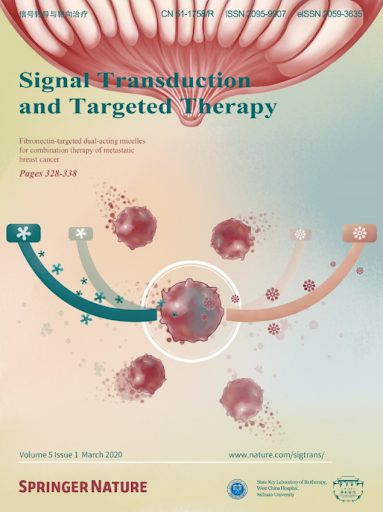
125 anti-COVID-19 traditional Chinese medicine formulae were identified with anti-inflammatory or immune-activating functions.
Qiao, L., Huang, W., Zhang, X. et al.

Systematic Review
Raspberry leaf for childbirth, highlighting the lack of robust evidence on its effects, safety, and efficacy during pregnancy, emphasizing the need for more comprehensive research.
Bowman R, Taylor J, Muggleton S, Davis D
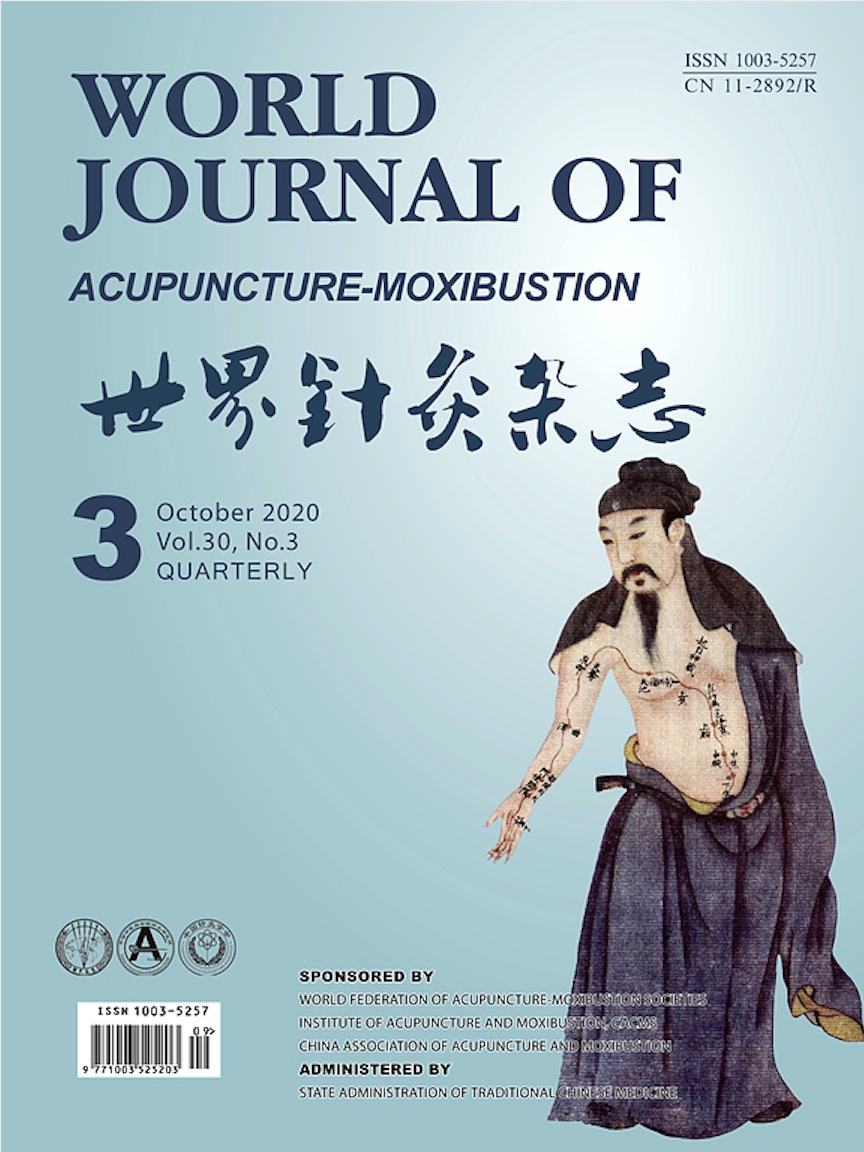
Review Article
Chinese medicine formulas for nonalcoholic fatty liver disease were superior to antioxidants in alanine aminotransferase normalization.
Dai L, Zhou WJ, Zhong LLD, Tang XD, Ji G
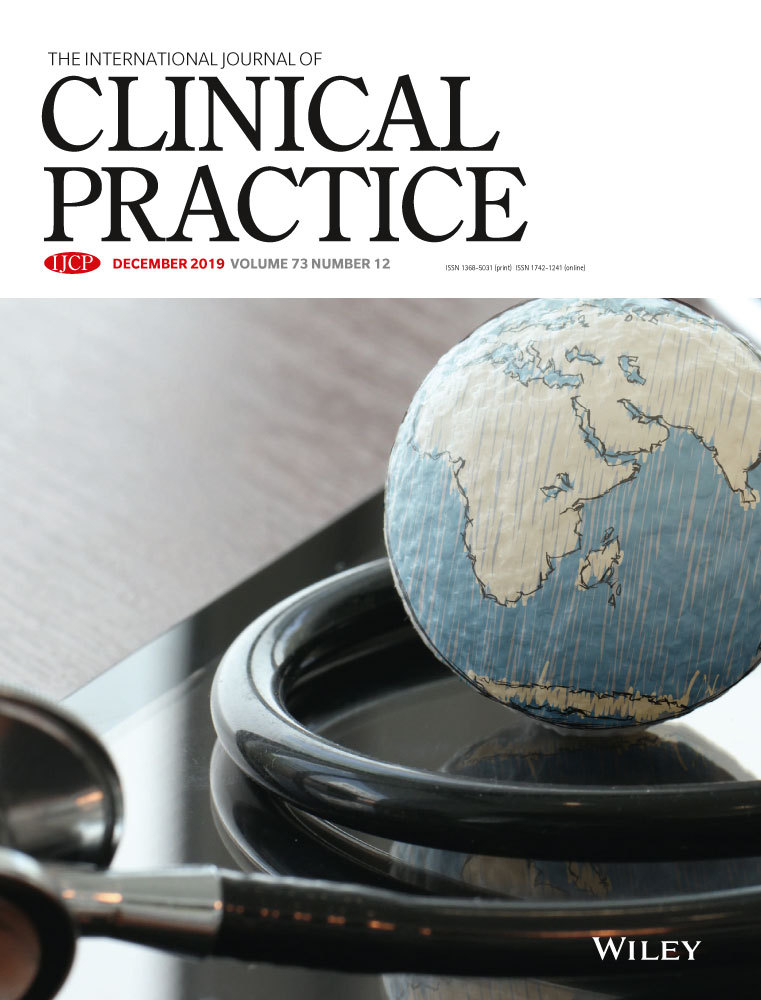
Systematic Review
Pomegranate consumption can effectively manage rheumatoid arthritis complications by reducing inflammation and oxidative stress without adverse effects.
Malek Mahdavi A, Seyedsadjadi N, Javadivala Z

Review Article
Coffee's bioactive compounds may exhibit various health benefits such as antioxidant and anti-inflammatory properties on the digestive tract and stimulating effects on motor function.
Iriondo-DeHond A, Uranga JA, del Castillo MD, Abalo R

Review Article
Isoflavones, mainly found in soy-derived products, show beneficial effects on bone health, potential cancer risk reduction, and alleviation of menopausal symptoms, but not on cardiovascular risk.
Gómez-Zorita S, González-Arceo M, Fernández-Quintela A, Eseberri I, Trepiana J, Portillo MP

Cohort Study
Depressed patients who received acupuncture treatment showed a significantly lower risk of developing Parkinson's disease.
Huang CH, Lin MC, Hsieh CL

Treatments according to traditional Chinese medicine syndrome differentiation can provide patients with individualized treatments for chronic fatigue syndrome.
Zhang X, Wang M, Zhou S
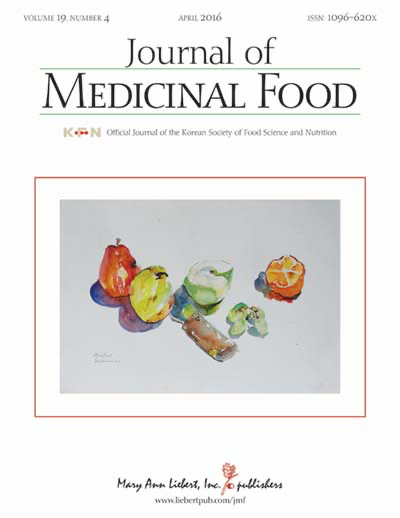
Randomised Controlled Trial
Daily consumption of tart cherry juice may reduce processes involved in accelerated atherogenesis, potentially decreasing the risk of cardiovascular diseases.
Johnson SA, Navaei N, Pourafshar S, Jaime SJ, Akhavan NS, Alvarez-Alvarado S, Proaño GV, Litwin NS, Clark EA, Foley EM, George KS, Elam ML, Payton ME, Arjmandi BH, Figueroa A

Systematic Review
Acupuncture can help relieve short-term pain and recover from dysfunction and has been used as a useful, noninvasive, and conservative modality for managing sports injuries such as lateral meniscus rupture, femoral acetabular impingement, ganglion cysts, and sports hernia.
Lee JW, Lee JH, Kim SY

Review Article
Juhua, the flower head of Chrysanthemum morifolium Ramat, possesses multiple medicinal properties and has a significant role in dietary herbal medicine in China.
Yuan H, Jiang S, Liu Y, Daniyal M, Jian Y, Peng C, Shen J, Liu S, Wang W

Review Article
Traditional Chinese medicine has unique advantages in relieving symptoms, shortening treatment time and reducing the development of severe viral pneumonia.
Xi S, Li Y, Yue L, Gong Y, Qian L, Liang T, Ye Y

Systematic Review
In many studies, acupuncture has been shown to be a safe, efficacious and readily available alternative therapy which may be beneficial to certain migraine patients.
Urits I, Patel M, Putz ME, Monteferrante NR, Nguyen D, An D, Cornett EM, Hasoon J, Kaye AD, Viswanath O.

Experimental Study
The major components of green tea and coffee, EGCG and CGA respectively, may have anti-cancer effects, though these effects seem to vary for different types of cancer.
Hayakawa S, Ohishi T, Miyoshi N, Oishi Y, Nakamura Y, Isemura M
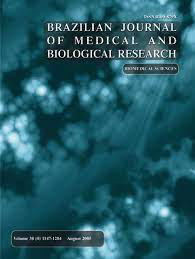
Systematic Review
Tai chi may be an exercise option for older adults, with a positive effect on overall quality of life and physical component.
Wang D, Wang P, Lan K, Zhang Y, Pan Y.
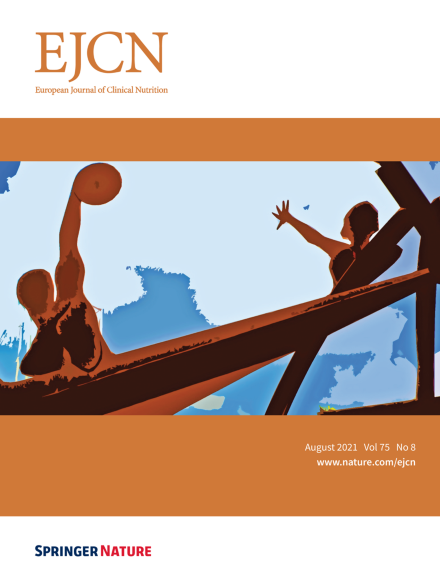
Review Article
TCM nutrition is an ancient but burgeoning discipline, and its main goal is to use food as a means to achieve balance and harmony within the body.
Zhao, X., Tan, X., Shi, H. et al

Systematic Review
The majority of studies concluded the superiority of short-term analgesic effects over various controls and suggested that acupuncture may be efficacious for chronic musculoskeletal pain.
Zhang YJ, Wang C

Review Article
Green tea polyphenols can potentially protect against neurodegenerative disorders like Parkinson's Disease through antioxidant, anti-inflammatory, and neuroprotective actions.
Malar DS, Prasanth MI, Brimson JM, Sharika R, Sivamaruthi BS, Chaiyasut C, Tencomnao T
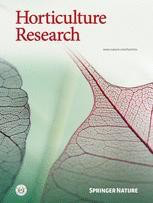
Review Article
In jujube fruit, the contents of sugar, vitamin C, and cyclic adenosine monophosphate (cAMP) are around 2, 100, and 1000 times those of apple, respectively.
Liu, M., Wang, J., Wang, L. et al.
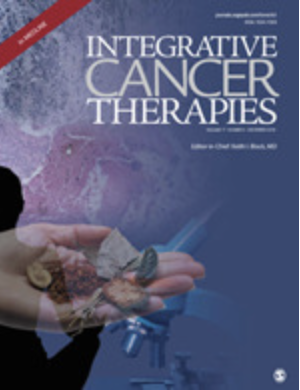
Systematic Review
The pooled results suggested that acupuncture led to moderate improvements in hot flashes, fatigue, and stiffness.
Yuanqing P, Yong T, Haiqian L, Gen C, Shen X, Dong J, Qi C, Miaomiao Q.
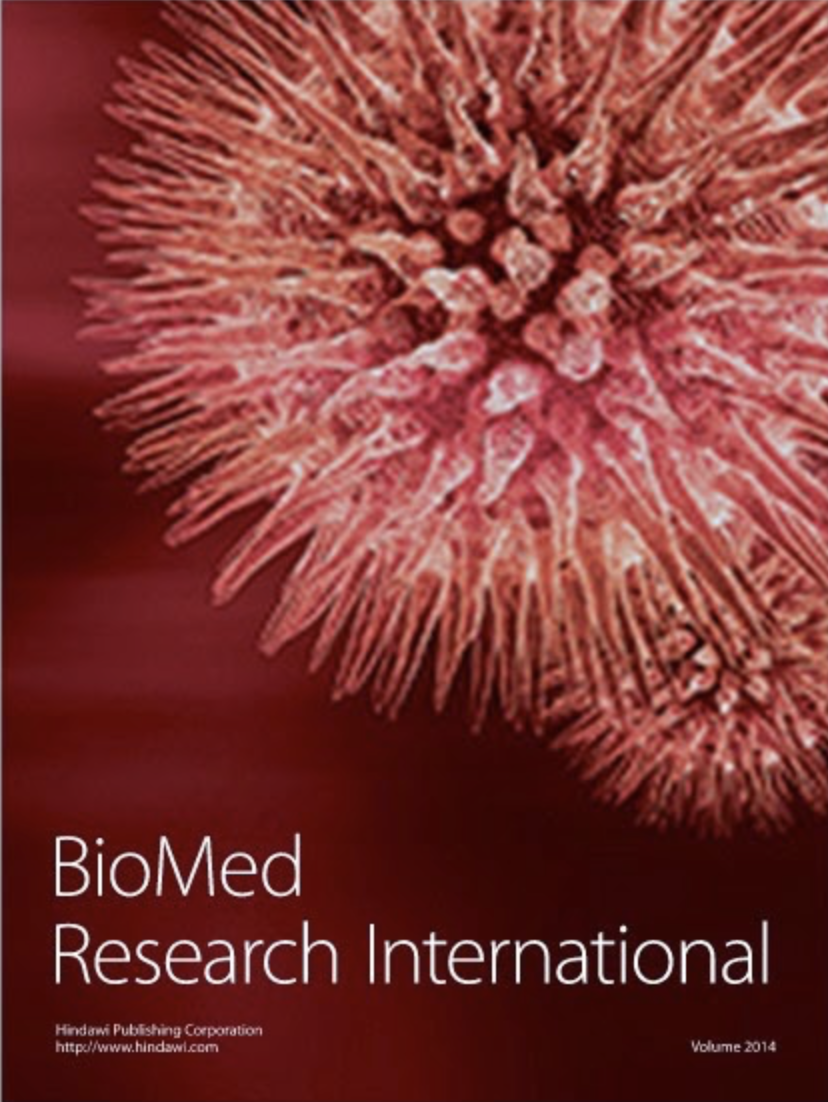
Review Article
Coffee consumption can significantly alter the absorption, distribution, metabolism, and excretion of many drugs, leading to varied therapeutic responses.
Belayneh A, Molla F

Systematic Review
In the treatment of chronic pain with depression, acupuncture could not only achieve better clinical efficacy, but also have higher safety compared with conventional mediation therapy.
Yan B, Zhu S, Wang Y, Da G, Tian G

Meta-Analysis
Chronic consumption of cranberry or cherry juice might considerably improve blood pressure levels.
Wang Y, Gallegos JL, Haskell-Ramsay C, Lodge JK

Positive effects of acupuncture and electroacupuncture were observed in regulating gastric motility, gastric accommodation, mental status, gastrointestinal hormones, and central and autonomic functions while improving dyspeptic symptoms and quality of life.
Guo Y, Wei W, Chen JD

Systematic Review
Coffee intake may have a variable effect on inflammation markers, with different responses noted between men and women and across various geographical regions.
Moua ED, Hu C, Day N, Hord NG, Takata Y
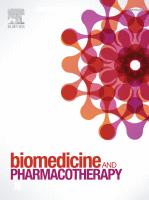
Systematic Review
Traditional Chinese medicine treatments can serve as promising auxiliary therapies for functional recovery of patients with spinal cord injury.
Yubao Lu, Jingjing Yang, Xuexi Wang, Zhanjun Ma, Sheng Li, Zhaoyang Liu, Xuegong Fan

Systematic Review
Apple vinegar consumption has potential health benefits, including weight loss and lower blood glucose levels, with seemingly insignificant side effects.
Launholt TL, Kristiansen CB, Hjorth P
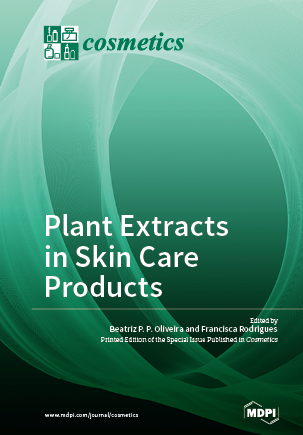
Review Article
Both facial acupuncture and facial exercises have the potential to improve the skin laxity, wrinkle length, muscle thickness, and pigmentary changes associated with aging.
M. Smith, A. Ferris, T. K. Nahar, V. Sharma, M.

Network Pharmacology
Chinese medicine herb Bai Zhu might combat chronic gastritis by influencing inflammatory response, amino acid synthesis and energy metabolism.
Yang S, Zhang J, Yan Y, Yang M, Li C, Li J, Zhong L, Gong Q, Yu H

Review Article
The Chrysanthemum indicum L. plant has been discovered to have multiple pharmacological capabilities including anti-inflammatory, antioxidation, antipathogenic, anticancer, immune regulation, and hepatoprotective effects.
Shao Y, Sun Y, Li D, Chen Y
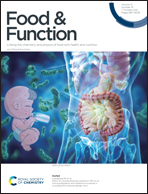
Review Article
Coffee and decaffeinated coffee appear to provide long-term protection against developing type 2 diabetes, potentially due to the influence of chlorogenic acids.
Williamson G
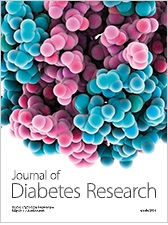
Review Article
Traditional Chinese medicine, especially Zuo Gui Wan, red raspberry leaves, and Orthosiphon stamineus, seems to control gestational diabetes effectively without reported toxicity.
Xu YXZ, Xi S, Qian X

Systematic Review
Acupuncture could be used as an adjunct in clinical settings to improve efficacy of western medicine for irritable bowel syndrome.
Zheng H, Chen R, Zhao X, Li G, Liang Y, Zhang H, Chi Z

Review Article
In 2017, dozens of Chinese proprietary medicines were employed as rheumatoid arthritis treatments and resulted in good outcomes, according to the National Health Insurance Directory of China.
Hu-DanPana, YaoXiao, Wan-YingWang, Ru-TongRen,Elaine Lai-Han,Leung, LiangLiua

Review Article
Avocado's nutritional and therapeutic properties show potential for novel drug discovery in prevention and treatment of prevalent diseases such as cancer, diabetes, and cardiovascular issues.
Bhuyan , Alsherbiny , Perera , Low , Basu , Devi , Barooah , Li , Papoutsis
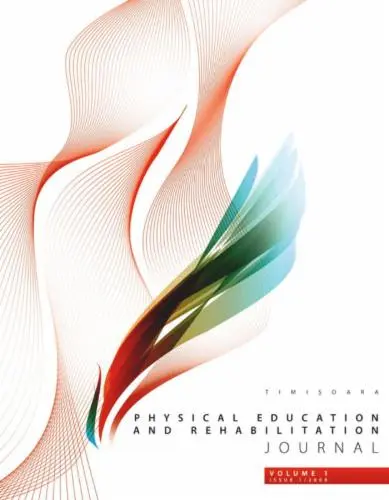
Systematic Review
The results of manual, traditional and non-invasive therapies are similar to those of surgical treatments, and even better in a very large number of cases.
Glazer C, Pantea C

Review Article
Honey, comprising mainly carbohydrates, particularly fructose and glucose, demonstrates potential performance benefits and immunological advantages when consumed around exercise, suggesting a role in exercise nutrition.
Hills , Mitchell , Wells , Russell

Systematic Review
According to high-quality outcomes, acupuncture had more total effective rate, short-term effective rate, and less adverse reactions than western medicine in treating knee osteoarthritis.
Li J, Li YX, Luo LJ, Ye J, Zhong DL, Xiao QW, Zheng H, Geng CM, Jin RJ, Liang FR

Systematic Review
Drinking certain types of mineral water can positively influence metabolic syndrome factors like blood pressure, cholesterol, and blood sugar levels.
Costa-Vieira D, Monteiro R, Martins MJ

Systematic Review
Acupuncture therapy seems effective for motor function, pain relief and activities of daily living in stroke patients with mild Shoulder-Hand Syndrome, when it is used in combination with rehabilitation.
Liu S, Zhang CS, Cai Y, Guo X, Zhang AL, Xue CC, Lu C
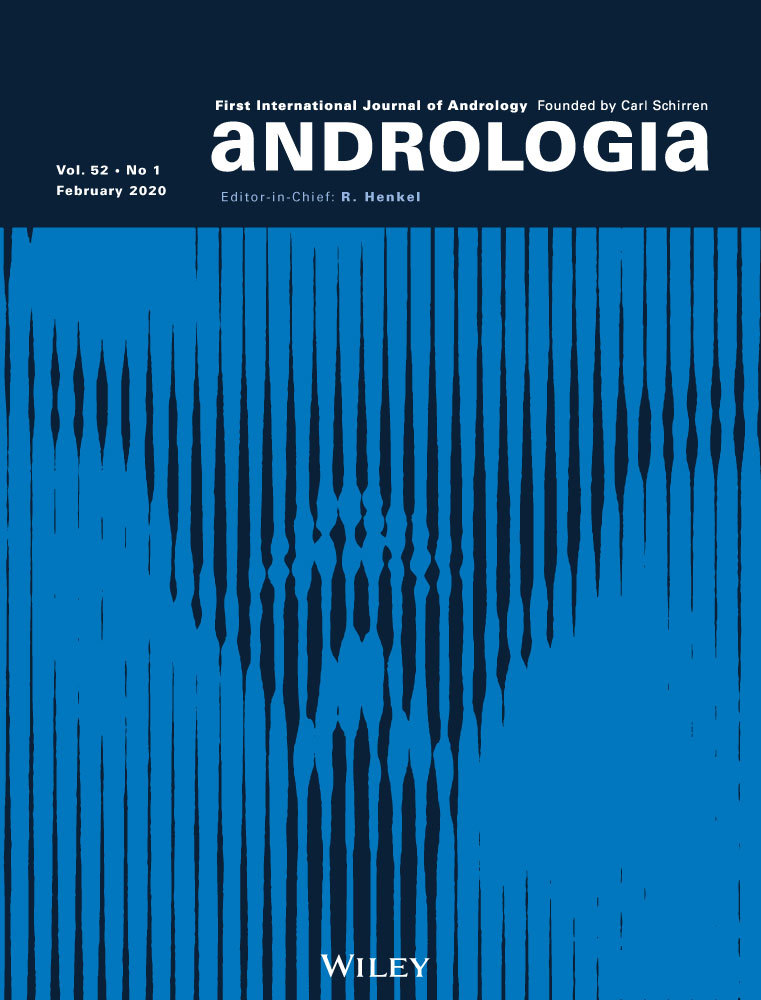
Systematic Review
Ginger enhances semen quality and improves sperm parameters, an impact linked to increased levels of gonadal hormones, decreased cell damage, and valued nutrients in ginger.
Banihani SA

Systematic Review
Acupuncture as an adjunctive therapy has antihypertensive effect.
Juan Li ,1 Mingsheng Sun ,2 Jing Ye,2 Yuxi Li ,2 Rongjiang Jin ,1 Hui Zheng ,2 and Fanrong Liang 2

Systematic Review
Coffee consumption shows a protective effect against colorectal and colon cancers, particularly among US subjects and European men.
Sartini M, Bragazzi N, Spagnolo A, Schinca E, Ottria G, Dupont C, Cristina M

Systematic Review
Results of the meta-analysis identified a significant benefit for citrulline compared to placebo treatments on indices of high-intensity exercise performance in healthy men and women.
Trexler, E.T., Persky, A.M., Ryan, E.D. et al.

Systematic Review
Acupuncture shows promise in improving endometrial receptivity and fertility outcomes in infertile women, but further high-quality research is needed to establish its effectiveness definitively.
Zhong, Y., Zeng, F., Liu, W. et al.
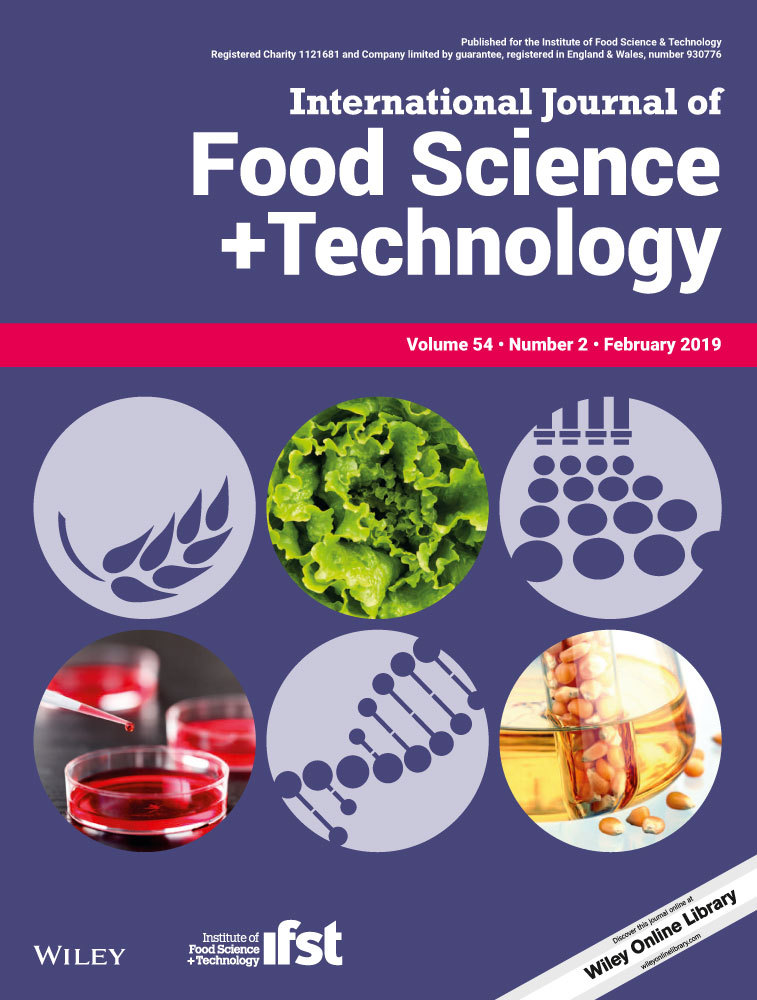
Animal Study
Pu-erh tea has a significant anti-hyperglycaemic effect, with its efficacy increasing over time and with higher dosages.
Lin, H.-C., Lee, C.-T., Yen, Y.-Y., Chu, C.-L., Hsieh, Y.-P., Yang, C.-S. and Lan, S.-J.
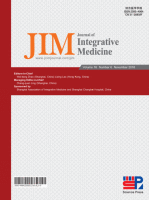
Systematic Review
Findings indicated reductions in patient symptoms and improvements in biomarkers where acupuncture was used alone or in combination therapy against thyroid-relevant illnesses.
Cheng FK
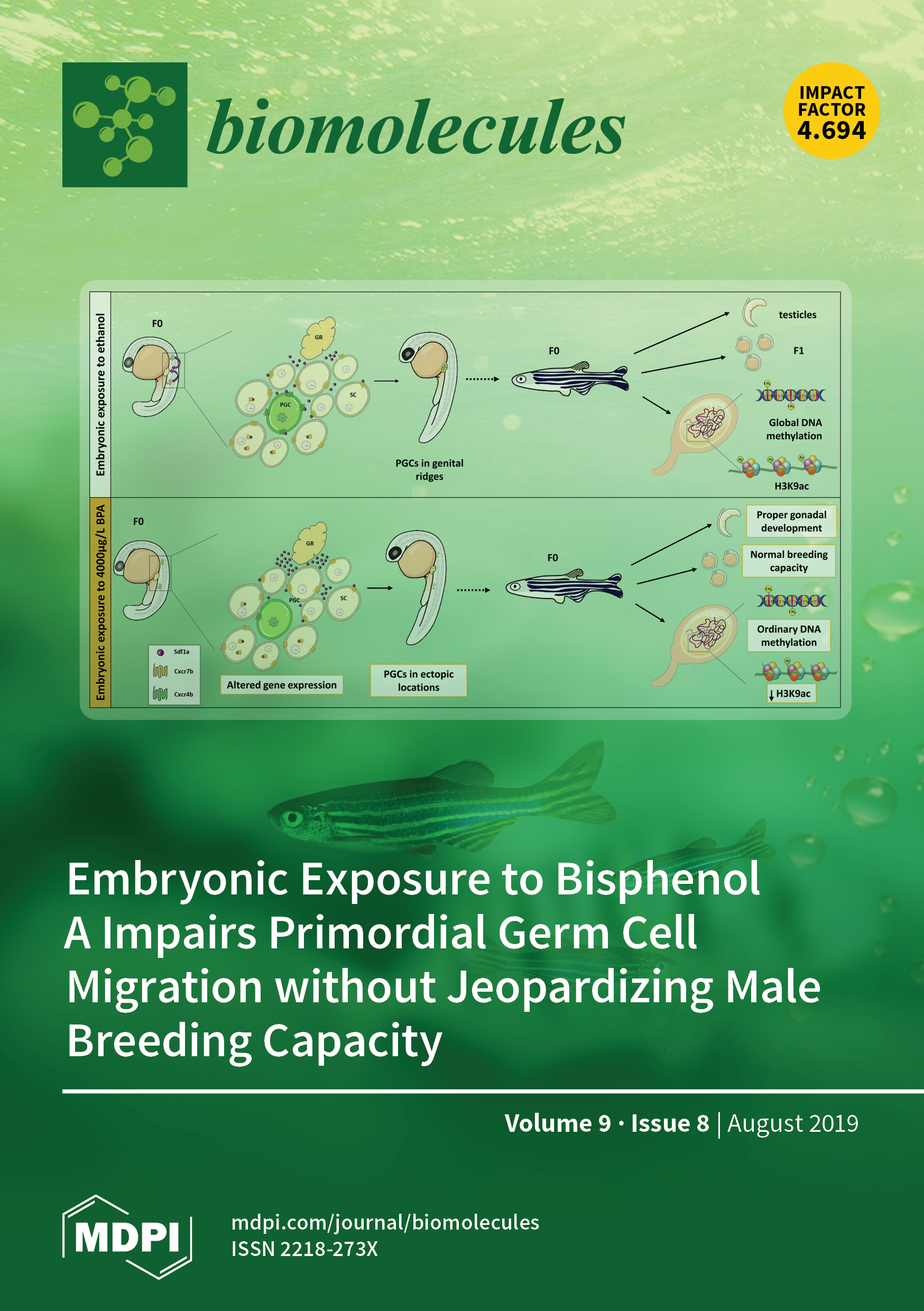
Systematic Review
Ginger supplementation enhances the production of testosterone in males by reducing oxidative stress and increasing luteinizing hormone production, cholesterol in testes, and blood flow to the testes.
Banihani SA

Review Article
(-)-Epigallocatechingallate (EGCG), a natural product, has potent anti-proliferation, anti-metastasis, and pro-apoptosis effects on cervical cancer cells, enhancing the effects of conventional drugs.
Wang YQ, Lu JL, Liang YR, Li QS

Systematic Review
Moxibustion was found to be an effective and safe treatment improving symptoms and quality of life in patients with Benign Prostatic Hyperplasia.
Bae G, Lee S, Hong J, Lee I, Kim S, Choi J, Han C, Yun Y, Park S, Kwon J
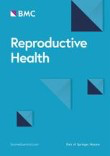
Review Article
Endometriosis, often seen as benign, is linked to infertility and metastatic cancer, and shows different risk factors and treatment responses in Asian and European-American women.
Dai Y, Li X, Shi J, Leng J
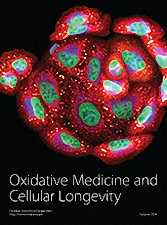
Review Article
Honey, a natural food supplement, emerges as a potent therapeutic antioxidant with diverse medicinal effects, including wound healing, antibacterial, anti-inflammatory, antifungal, antiviral, and antidiabetic properties, suggesting its potential as a novel antioxidant in managing oxidative stress-related diseases.
Ahmed S, Sulaiman SA, Baig AA, Ibrahim M, Liaqat S, Fatima S, Jabeen S, Shamim N, Othman NH

Experimental Study
Coffee consumption, particularly caffeinated coffee, predominantly exhibits anti-inflammatory effects, contrasting with caffeine's complex impact on inflammation.
Paiva CLRS, Beserra BTS, Reis CEG, Dorea JG, Da Costa THM, Amato AA

Systematic Review
Radish has been identified as having antidiabetic effects, making it favorable for those with diabetic conditions.
Saleem Ali Banihani
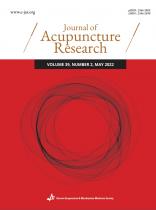
Systematic Review
Acupuncture, moxibustion, and laser acupuncture are effective as conservative therapies for the treatment of De Quervain's Stenosing Tenosynovitis.
Kong HJ, Kang JH, Yun GW, Oh SY, Lee H

Review Article
Kiwifruits can relieve constipation and irritable bowel syndrome, potentially through protease-activated signaling, modulation of microflora, changes in colonic methane, bile flux, or mediation of inflammatory processes.
Bayer SB, Gearry RB, Drummond LN
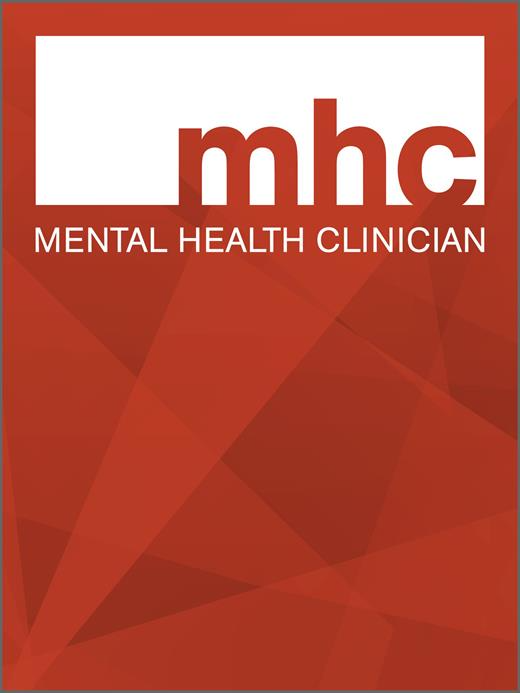
Experimental Study
Lavender essential oil, particularly its primary constituents linalool and linalyl acetate, may offer a beneficial anxiolytic effect through its interaction with certain neurological mechanisms.
Malcolm BJ, Tallian K
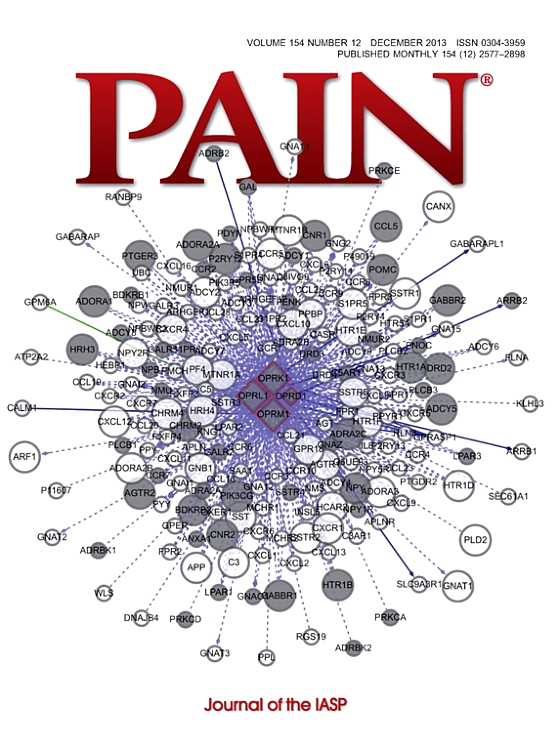
Systematic Review
Patients with chronic pain can generally be reassured that treatment effects persist after a course of treatment with acupuncture.
MacPherson, H; Vertosick, E.A; Foster, N.E; Lewith, G; Linde, K; Sherman, K.J; Witt, C.M; Vickers, A.J
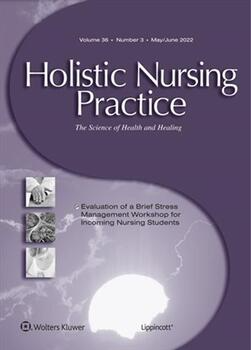
Animal Study
Curcumin's potential anxiolytic and antidepressant impacts do not significantly alter behavior or interact with the benzodiazepine site of the gamma-aminobutyric acid receptor A.
Ceremuga TE, Helmrick K, Kufahl Z, Kelley J, Keller B, Philippe F, Golder J, Padrón G

Systematic Review
Tai Chi could be an effective alternative and/or complementary approach to existing therapies for people with fatigue.
Yu Xiang, Liming Lu, Xiankun Chen, Zehuai Wen
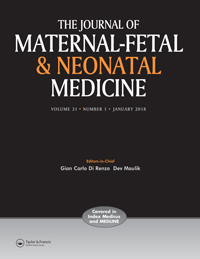
Case Report
Chamomile consumption may stimulate abundant milk production and increase lactogenesis in lactating women.
Silva FV, Dias F, Costa G, Campos MG
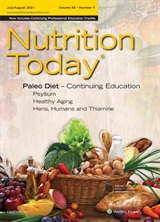
Review Article
Fenugreek can be beneficial as an adjunct in controlling high blood glucose and lipid levels in people with diabetes.
Singletary, Keith W.
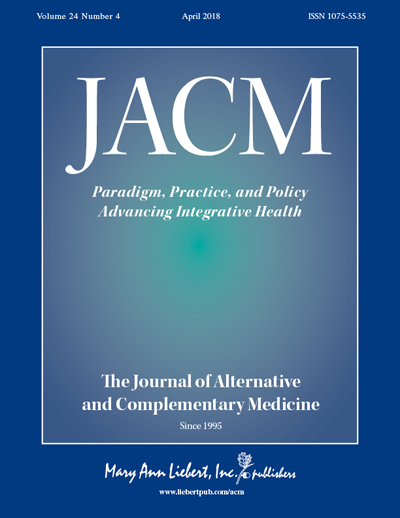
Systematic Review
The majority of randomised controlled trials showed benefit for acupuncture over control in the treatment of diabetic neuropathy, Bell's palsy, and carpal tunnel syndrome.
Alexandra Dimitrova, Charles Murchison, and Barry Oken.
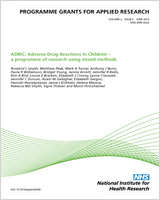
Systematic Review
The programme of research found that acupuncture was more effective than usual care and sham acupuncture for chronic pain, that it was one of the more clinically effective physical therapies for osteoarthritis and that it showed benefits in the treatment of depression.
MacPherson H, Vickers A, Bland M, et al.

Review Article
Coffee consumption, up to three cups a day, can reduce the risk of Type-2 diabetes and metabolic syndrome in adults.
Baspinar B, Eskici G, Ozcelik AO
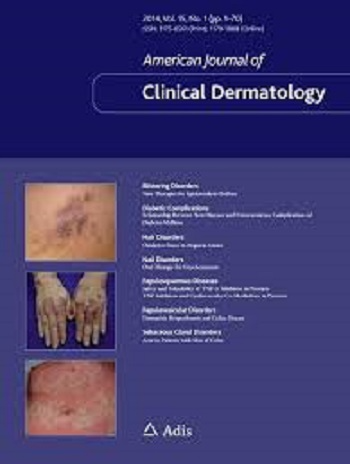
Systematic Review
There is at least some level I evidence to support the use of acupuncture and acupressure as adjuncts to conventional treatment of atopic dermatitis.
Vieira BL, Lim NR, Lohman ME, Lio PA.
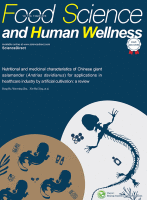
Experimental Study
Pu-erh tea water extracts could potentially enhance liver health and reduce oxidative stress in rats on a high-fat diet.
Jingjing Su, Xueqing Wang, Wenjun Song, Xiaoli Bai, Changwen Li

Randomised Controlled Trial
Acupuncture was a feasible intervention and reduced threatened miscarriage symptoms when compared to a touch intervention.
Betts D, Smith CA, Dahlen HG.

Systematic Review
Acupuncture may have beneficial effects on improving dependency, global neurological deficiency, and some specific neurological impairments for people with stroke in the convalescent stage, with no obvious serious adverse events.
Yang A, Wu HM, Tang JL, Xu L, Yang M, Liu GJ.
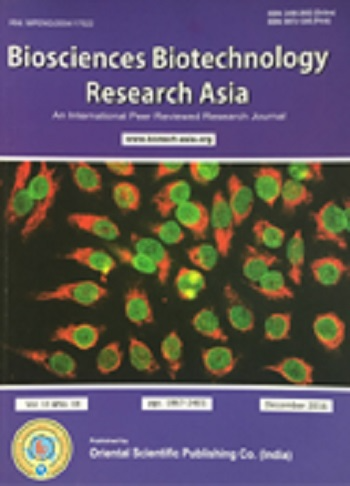
Review Article
The bioactive compounds in Chrysanthemums can be used to develop next generation, multi-functional drugs for various diseases including diabetes and prostate cancer.
Soo Cheon Chae
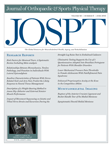
Systematic Review
Acupuncture, specifically needle-based and electroacupuncture, can potentially provide therapeutic benefits for carpal tunnel syndrome, Achilles tendinopathy, and shoulder injuries.
Cox, J., Varatharajan, S., Côté, P., & Optima Collaboration
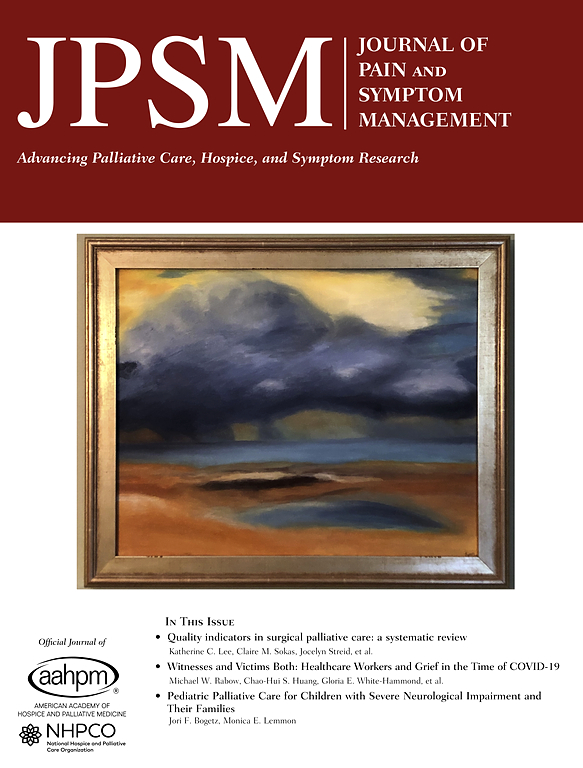
Systematic Review
A tentative conclusion can be reached that acupuncture, tuina, tai chi and qigong represent beneficial adjunctive therapies for cancer patients.
Wei-Wei Tao,Hua Jiang,Xiao-Mei Tao,Ping Jiang,Li-Yan Sha,Xian-Ce Sun
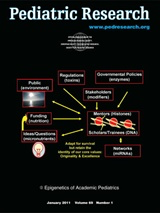
Systematic Review
The efficacy of acupuncture for some pediatric conditions is promising, such as for cerebral palsy, nocturnal enuresis, tic disorders, amblyopia, and pain reduction.
Chunsong Yang, Zilong Hao, Ling-Li Zhang & Qin Guo

Randomised Controlled Trial
Consuming dark chocolate every day for two weeks before menstruation significantly reduced symptoms of premenstrual syndrome in women aged 18-22, showing improvements in anxiety, fatigue, abdominal cramps, bloating, and other related symptoms.
Nurazizah E, Tih F, Suwindere W
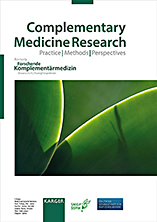
Systematic Review
Acupuncture therapies demonstrate some potential benefits in treating psoriasis vulgaris, despite conflictions in individual study results.
Coyle M, Deng J, Zhang AL, Yu J, Guo X, Xue CC, Lu C

Systematic Review
There are potential benefits of herbal medicine in addressing the complex symptoms of PCOS, supported by both pre-clinical and clinical evidence.
Susan Arentz, Jason Anthony Abbott, Caroline Anne Smith & Alan Bensoussan

Systematic Review
Saffron, derived from Crocus sativus flower, shows similar efficacy to antidepressant medications in treating major depression, potentially due to its variety of biochemical effects.
Lopresti AL, Drummond PD

Systematic Review
This meta-analysis suggests that acupuncture had positive effects on cognitive function after stroke.
Fang Liu, Zhuang-Miao Li, Yi-Jing Jiang, and Li-Dian Chen.
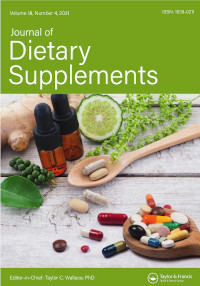
Systematic Review
Goji (Lycium spp.) has a consolidated safety and efficacy profile, based on scientific literature, clinical trials, expert opinions, history, pharmacology, interactions, adverse effects, toxicology, and dosing.
Ulbricht C, Bryan JK, Costa D, Culwell S, Giese N, Isaac R, Nummy K, Pham T, Rapp C, Rusie E, Weissner W, Windsor RC, Woods J, Zhou S
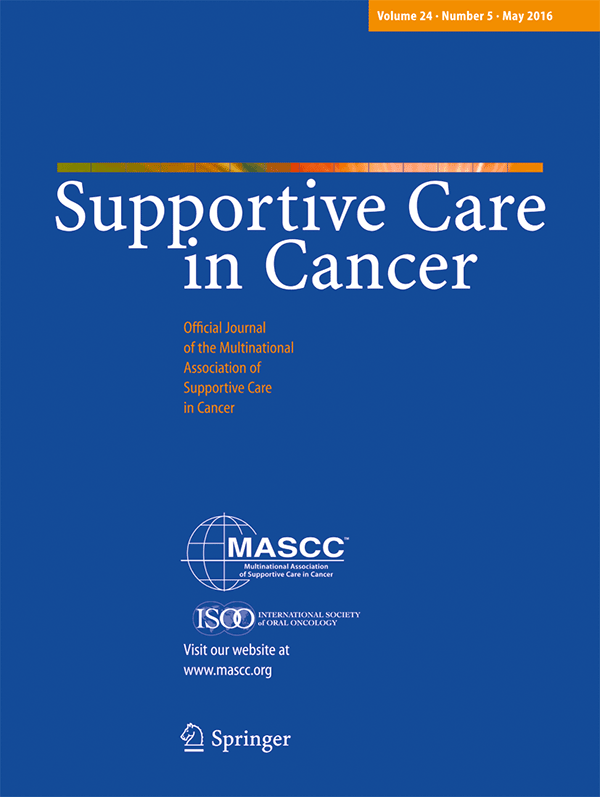
Systematic Review
Acupuncture can be tried based on the available data in the treatment of xerostomia in cancer patients.
Hanchanale S, Adkinson L, Daniel S, Fleming M, Oxberry SG.

Systematic Review
Acupuncture and herbal medicine show promise in alleviating premenstrual syndrome and premenstrual dysphoric disorder symptoms, with over 50% relief and proven safety.
Jang SH, Kim DI, Choi MS
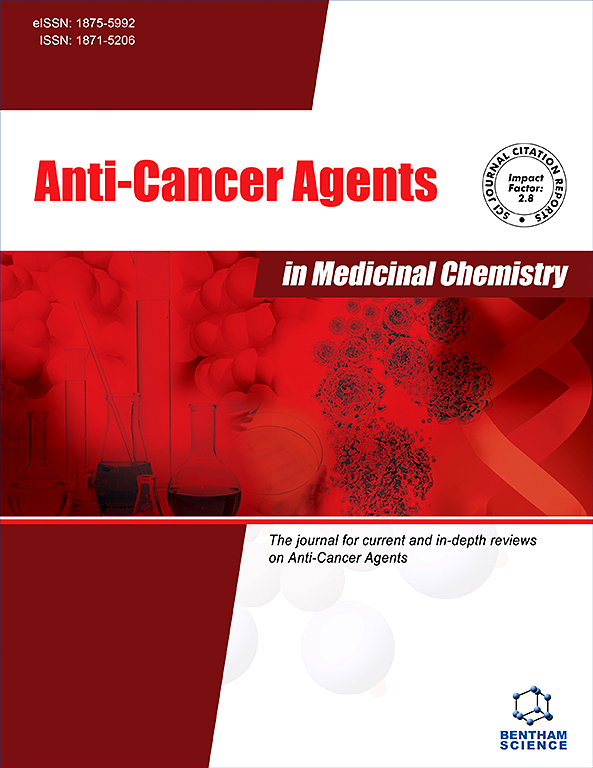
Review Article
Blueberries, due to their phenolic compounds, show potential as both dietary and supplemental anti-cancer agents by inhibiting cancer cell growth and promoting apoptosis.
Johnson S, Arjmandi B
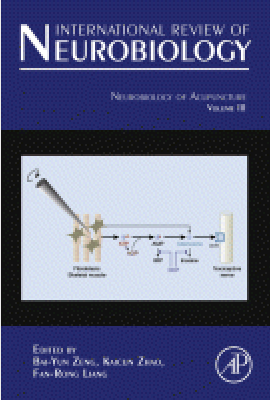
Systematic Review
The clinical efficacy of acupuncture appeared to be supported by evidence obtained from basic neuroendocrinological studies.
Kaicun Zhao
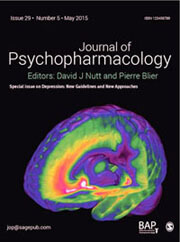
Review Article
Curcumin, a component of Indian spice turmeric, presents a potential natural treatment for depression, influencing neurotransmitters and protecting against several biological systems compromised in depression.
Lopresti AL, Hood SD, Drummond PD

Systematic Review
Most studies suggest that acupuncture can modulate the activity within specific brain areas, and the evidence based on meta-analyses confirmed some of these results.
Huang, W., Pach, D., Napadow, V., Park, K., Long, X., Neumann, J., Maeda, Y., Nierhaus, T., Liang, F., & Witt, C. M.

Complementary and alternative medicine (CAM) therapies have the potential to provide supportive care for women presenting with threatened miscarriage.
Betts D, Smith CA, Hannah DG.

Review Article
It is frequently stated that it takes an average of 17 years for research evidence to reach clinical practice.
Morris ZS, Wooding S, Grant J
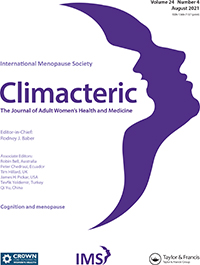
Randomised Controlled Trial
Pumpkin seed oil supplementation may increase good cholesterol levels, lower diastolic blood pressure, and alleviate menopausal symptoms in postmenopausal women.
Gossell-Williams M, Hyde C, Hunter T, Simms-Stewart D, Fletcher H, McGrowder D, Walters CA
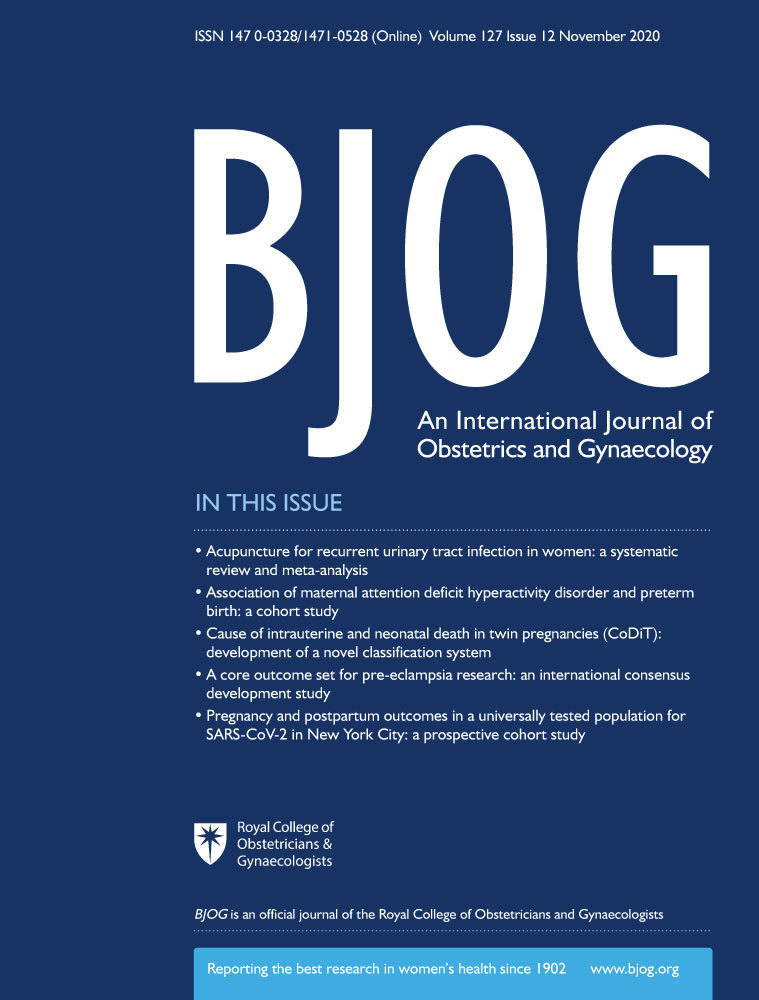
Systematic Review
Acupuncture ineffective for labour pain relief:
S-H Cho, H Lee, E Ernst
Executive Summary
Write an executive summary in the form of a blog article on the topic of "Research into Chinese medicine treatment for Research" summarising the research below and using language that can be easily understood by patients and avoiding medical jargon using a professional and caring tone of voice.
Write an executive summary in the form of a blog article on the topic of "Researched Chinese medicine treatments for Research" summarising the research below in an objective and easy to understand way, and using language that can be easily understood by patients. Group the article into Chinese medicine treatments first, followed by nutrition and other treatments. Avoid using medical jargon and use a professional and caring tone of voice.
Write me a concise but easy to understand executive summary on the topic of "Chinese medicine treatments for Research" based on the following research that I will give you. Your summary should be 2 paragraphs long in Australian English spelling and include references to the studies.
A Systematic Review published in 2024 in the journal Food Science & Nutrition found that Eating plums, especially dried plums, significantly lowers LDL levels and total cholesterol levels, particularly in adults with existing health issues. The researchers conducted a systematic review and meta-analysis using keyword searches on databases such as PubMed, Scopus, and ISI Web of Science up to a specified date. They were on a mission to find eligible trials that would help ascertain the benefits of plum consumption on adult lipid profiles. In their observation of the collected data, they concluded that plum, specifically dried plum consumption, had a noteworthy impact on LDL levels, mainly when the subjects were in an unhealthy state. This consumption led to a significant decrease in total cholesterol levels in the unhealthy subjects. Nevertheless, the study couldn't establish major changes in triglycerides and HDL concentrations as a result of the plum consumption.
A Review Article published in 2024 in the journal The Natural Products Journal found that Pumpkin seeds are recognised for their medicinal, nutritional, and cosmetic benefits, including anti-diabetic, heart disease prevention, anti-cancer, and antioxidant qualities. The review article undertakes a comprehensive exploration of the nutraceutical importance of pumpkin seeds. The methodology includes an examination of the various known substances in the seeds, such as phytoestrogens, unsaturated fatty acids, and vitamin E. The study then delves into the different benefits and therapeutic uses of these components stretching from medicinal to nutritional to cosmetic applications. The results of this research are diverse and impressive, with implications for several major health sectors. Their potential anti-diabetic and hypoglycemic properties could suggest a significant role in the management and prevention of diabetes. Meanwhile, the seeds' potential in cardiovascular disease prevention could help to address one of the most pressing global health issues. Moreover, potential anti-cancer properties imply that these seeds could even have a part to play in cancer prevention. The review also described potential additional qualities, such as antidepressant, anti-helminthic (parasite-removing), and antioxidant effects.
A Review Article published in 2024 in the journal Pharmaceuticals found that Lemongrass essential oil can effectively treat periodontitis, gingivitis, oral malodour, skin aging, and dandruff, and it is comparable to certain established treatments. The methodology used in the research followed a scoping review design, which was aimed at identifying, summarizing, and synthesizing existing literature related to the clinical applications of lemongrass essential oil. Three databases, namely PubMed, Web of Science, and Scopus, were utilized, following the PRISMA-ScR guidelines, to find articles published within approximately a 10-year timeframe. The results of the review suggest that patients have received noticeable therapeutic benefits from treatments that were primarily administered oromucosally and topically. It can be deduced that the efficacy of lemongrass essential oil in treating periodontitis, gingivitis, and oral malodour is similar to that of chlorhexidine and doxycycline. Moreover, the oil has demonstrated potential in treating skin conditions such as pityriasis versicolor, preventing skin aging, and having anti-dandruff effects. The diverse range of applications of the oil and its efficacy when compared to established treatments highlight its potential for clinical applications.
A Review Article published in 2024 in the journal Foods found that Jujube, a Chinese native plant with numerous active components, exhibits calming effects, nourishes blood, and strengthens the spleen and stomach, alongside promising neuroprotective and cardiovascular benefits. This study statistically evaluated and tracked the research status of Jujube over the past two decades. The research observed, among other things, the plant's traditional use in calming nerves, nourishing blood, and strengthening the spleen and stomach in traditional Chinese medicine. The study found that the Jujube has numerous effective components, including polysaccharides, phenols, and triterpene acids. The study delved into understanding how these components can provide a variety of pharmacological activities. Such activities include neuroprotection, as well as the prevention and treatment of cardiovascular diseases. The study also expounded comprehensively the molecular mechanisms and efficacies of Jujube. The research, therefore, provides an exhaustive appraisal of the pharmacological potentials of the Jujube plant and its prospective industrial relevance in food and pharmaceutical industries.
A Meta-Analysis published in 2023 in the journal Critical Reviews in Food Science and Nutrition found that Consuming carrots can significantly decrease the risk of cancer. The methodology used in this research involved examining the links between carrot intake and the incidence of cancer. The scope was broad, examining all studies published before June 2022 that offered risk estimates connecting cancer incidence with either carrot consumption, α-carotene intake, or α-carotene plasma levels. Possible sources of such studies included those found via digital searches, manually identified within other studies, or garnered from existing reviews. Analysis was carried out comparing the highest and lowest reported intakes from prospective studies, estimating summary relative risks using a random-effects model. The study's results indicated a strong correlation between carrot consumption and a notable reduction in cancer risk. This conclusion was derived from the analysis of 198 observational studies, 50 of which were prospective studies involving a total of 52,000 cases that specifically recorded carrot intake. Comparatively, on the correlation between α-carotene plasma levels and cancer risk, analysis from 30 prospective studies with 9,331 cases indicated that a higher presence of α-carotene also resulted in decreased cancer risk. Despite a moderate variance between studies, these findings serve as significant evidence in support of the anticancer benefits of carrots.
A Systematic Review published in 2023 in the journal Phytotherapy Research found that Pomegranate can significantly enhance women's health during and after menopause by reducing hot flashes severity and other menopause symptoms. The study aimed at understanding the impacts of pomegranate on women's health through and following menopause. To gather data, a rigorous search was conducted on various academic platforms, including PubMed, Web of Science, Cochrane, Scopus, and Google Scholar, up to the end of 2022. All forms of clinical research studies, from randomized clinical trials to case series, were considered for review. The material was evaluated using the Cochrane RoB 2.0 tool specifically for quality assessment of randomized clinical trials. To quantify the effects of the pomegranate intervention, standardized mean differences were calculated using a random effect model. It was found that pomegranate significantly reduces the severity of hot flashes in menopausal women, improves their high-density lipoprotein levels, and reduces the Follicle-Stimulating Hormone (FSH). However, no significant improvement was noticed in the low-density lipoprotein, body mass index, and body weight. Despite these findings, the study recognized that the results' conclusiveness was hampered due to small sample sizes and the lack of study design elements such as blinding and randomization.
A Systematic Review published in 2023 in the journal Medicine found that Kidney tonic herbs may enhance bone density and reduce fracture risk in patients with primary osteoporosis. This research gathered and analyzed data from 43 randomized controlled trials involving 4349 participants, selected through extensive scrutiny conducted by two researchers. The aim was to evaluate the effectiveness and safety of Kidney tonic herbs in the treatment of primary osteoporosis. A comprehensive search of literature across eight electronic databases was performed up to September 30, 2022. The main focus of these trials was changes in bone mineral density of the lumbar area. The results, obtained through meta-analyses using RevMan 5.3 and Stata 16, indicated that kidney tonic herbs significantly increased bone mineral density in various anatomic sites. Examples of these are the lumbar area, femoral neck, and femoral trochanter. Moreover, the research found a decrease in fracture incidence, with no serious side effects reported. The herbs also showed superior pain relief potential. However, the impact of these herbs on fall incidence needs further exploration.
A Meta-Analysis published in 2023 in the journal PLOS One found that Oral Chinese herbal medicines appear to enhance recovery when used as supplements to conventional treatment after sinus surgery. This study systematically reviews and conducts a meta-analysis of randomised controlled trials, gathered from a wide range of nine databases and clinical trial registries, to evaluate the impact of orally administered Chinese herbal medicines (CHMs) on the post-surgical management of chronic rhinosinusitis. The participants across these trials included adults and children diagnosed with sinusitis or rhinosinusitis, who had undergone surgery. The added interventions were orally consumed CHMs post-surgery in tandem with traditional post-surgery management. The control groups received only the conventional management without CHMs. The results from a variety of measures including Sino-Nasal Outcome Test, visual analogue scales, various computed tomography scores, and mucociliary transport rates showed greater improvements in the group consuming oral CHMs in addition to the post-surgery treatment, versus the control. Particularly, enhancements were noticeable at follow-up stages after the end of treatment. However, the reporting of adverse events was incomplete across the trials. The study also found that the quality of the studies and their reporting varied, with many studies not being blinded and some results showing substantial heterogeneity.
A Systematic Review published in 2023 in the journal Autoimmunity Reviews found that Intermittent fasting may potentially influence autoimmune diseases like type 1 diabetes and rheumatoid arthritis, by reducing inflammation and supporting cellular repair mechanisms. Extensive research was done through several electronic databases such as PubMed, Scopus, Embase, and Web of Science. Rigorous inclusion criteria were applied to filter the most relevant studies on the effects of intermittent fasting on autoimmune diseases. No reference to further research trials was mentioned in the methodology. The results indicate a potential link between intermittent fasting and the management of certain autoimmune diseases. Autoimmune diseases like type 1 diabetes, rheumatoid arthritis, and systemic lupus erythematosus exhibited improvements owing to the reduction in inflammatory markers, improvement in gut microbiota, and enhanced cellular repair resulting from autophagy induced by intermittent fasting. However, results concerning other autoimmune diseases like multiple sclerosis, systemic lupus erythematosus, thyroid diseases, and psoriasis were inconclusive.
A Review Article published in 2023 in the journal Chinese Herbal Medicines found that Chinese herbal medicines (CHMs) possess multiple advantages, including multiple targets, pathways, and low toxicity, for the treatment of prostate cancer. The research team undertook an in-depth review of experimental research and clinical practices related to the use of CHMs for prostate cancer treatment, with the data being sourced from PubMed, Embase, and Web of Science. The focus of the review was on recent studies published within the last five years. The research identified five CHM formulas and six single CHM extracts, along with 12 CHM-derived compounds. The research findings demonstrated that CHMs induced apoptosis, autophagy, and cell cycle arrest in prostate cancer cells, and concurrently suppressed angiogenesis, proliferation, and cell migration. The CHMs also displayed efficacy in overturning drug resistance and in enhancing anti-tumor immunity. The modes of action were identified as the phosphatidylinositol 3-kinase/protein kinase-B/mammalian target of rapamycin, androgen receptor, epidermal growth factor receptor, and Wnt/beta-catenin signaling pathways which are known to play key roles in the development of prostate cancer. Additionally, the researchers discussed the benefits of CHMs in treating hormone-sensitive and castration-resistant prostate cancer.
A Systematic Review published in 2023 in the journal Nutrients found that Natural calcium-rich mineral waters offer a bioavailable calcium source, beneficial for bone health, cardiovascular function, weight management, and overall well-being. This systematic review analyzed peer-reviewed articles, clinical trials, and experimental studies from the past decade. It focused on the health benefits of calcium-rich mineral waters, especially for individuals with lactose intolerance or on plant-based diets. The review process assessed the contribution of these waters to daily calcium intake and their bioavailability compared to other calcium sources. The review found that natural mineral waters high in calcium can significantly enhance calcium intake, with improved absorption rates. These waters show promise in promoting bone health and cardiovascular function, including potential reductions in blood pressure and cardiovascular disease risk. Some evidence suggests benefits in weight management. However, the review highlighted the need for further research on interactions with other dietary components, effects on specific health conditions, and long-term consumption impacts. Despite these gaps, calcium-rich mineral waters are recognized as a valuable dietary calcium source for a diverse population.
A Systematic Review published in 2023 in the journal Current Sleep Medicine Reports found that There is evidence to support significant improvements to total sleep time and sleep efficiency with the ingestion of tart cherries. We identified a total of 277 unique records, from which 8 studies of low-moderate methodological quality were included in the systematic review. Meta-analysis of subjectively recalled sleep efficiency (SE) and total sleep time (TST) were not significant. Objective SE, however, was significantly higher in the cherry cohort when compared to placebo with an effect size of 0.63 (95% CI 0.29–0.97, P < 0.01). There was low associated heterogeneity (I2 = 0%). Objective TST was significantly higher in the cherry cohorts, with a pooled effect size of 1.21 (95% CI 0.83–1.58, P < 0.01). There was high associated heterogeneity (I2 = 81.5%).
A Review Article published in 2023 in the journal Antioxidants found that Pomegranate and its components could offer considerable potential as dietary supplements or supports in treatment for cardiovascular and non-cardiovascular diseases. The review examines a myriad of recent preclinical and clinical studies focusing on pomegranate. To harness the health benefits of pomegranate, different components were extracted and studied. These include juice from the fruit's edible arils, oil from the seeds, and bioactive products from the typically discarded peel. The research also considers advances in encapsulation and green extraction techniques to optimize the use of waste pomegranate products. The studies suggest promising beneficial effects of pomegranate in diverse areas. Though challenges remain, such as limited oral bioavailability and uncertainty concerning the role of active metabolites, the collective findings offer crucial insight into the significant potential of pomegranate as a dietary supplement or co-therapy for a range of diseases, especially cardiovascular and non-cardiovascular ones.
A Review Article published in 2023 in the journal Food Science & Nutrition found that Eating apples and apple products can enhance health by protecting the cardiovascular system, combating cancer and cognitive impairment, and improving hair growth, among other beneficial effects. The study took a comprehensive approach to evaluate the health benefits of apples and apple products by conducting a literature review of relevant clinical, epidemiological, in vitro, and in vivo studies. It involved an exhaustive search of the PubMed database for a ten-year period, sourcing studies that reported on the effects of different apple products: juices, purees, pomaces, dried apples, and extracts rich in apple bioactives. The findings indicate that the consumption of apples and their derivations contributes to multiple aspects of human health. These products exhibited a range of protective effects against diseases such as cardiovascular conditions and cancer. Moreover, they were associated with enhanced cognitive function, facilitated hair growth, the healing of burn wounds, and improved oral health. The use of apples and apple-based products also helped to reduce UV-induced skin pigmentation, alleviated the symptoms of atopic dermatitis and cedar hay fever, and even prevented skin flushing caused by niacin. The beneficial impacts of apple consumption can be attributed to a variety of mechanisms including, but not limited to, vascular endothelial protection, blood lipid regulation, anti-inflammatory and antioxidant effects, as well as anti-invasion and antimetastatic tendencies. These results provide a significant reference point for various fields, including medicine and nutrition, contributing to their development and application.
A Systematic Review published in 2023 in the journal International Journal of Environmental Research and Public Health found that Consumption of natural mineral water increases diuresis in both humans and animals, evident sometimes after just one intake. This systematic review, adhering to PRISMA guidelines, evaluated the diuretic effects of natural mineral water on healthy individuals. Comprehensive searches were conducted in PubMed, Scopus, Web of Science, and Cochrane Library up to November 2022, including both human and animal studies. A total of 12 studies were identified, predominantly from Italy and one from Bulgaria, covering publications from 1962 to 2019 for human studies and 1967 to 2001 for animal studies. All included studies consistently reported an increase in diuresis following the consumption of natural mineral water, with some studies observing this effect after a single administration. However, the quality of these studies, especially the older ones, was noted to be suboptimal. The review underscores the need for newer clinical studies with improved methodological approaches and advanced statistical data processing to validate these findings more robustly.
A Theoretical Article published in 2023 in the journal Sleep Medicine Clinics found that Acupuncture may enhance the effectiveness of cognitive-behavioral therapy for people suffering from insomnia and related conditions. The research methodology used in this paper is mainly a theoretical analysis and discussion of the potential synergistic effects of combining cognitive-behavioral therapy for insomnia (CBT-I) and acupuncture. This involves analysis of the current evidence base for the efficacy of acupuncture in treating insomnia and related conditions, along with examination of the practical, logistical, and regulatory aspects of combining these two treatments. In the discussion of their results, the researchers found that there is a growing body of evidence that supports the potential benefit of acupuncture in treating insomnia and its comorbidities, enhancing the current standard treatment approach of CBT-I. This appears to be an innovative approach that could potentially enhance the treatment effectiveness and outcomes for those struggling with insomnia, though it concurrently raises complex issues in terms of its practical and regulatory implementation.
A Randomised Controlled Trial published in 2023 in the journal Frontiers in Public Health found that Acupuncture can improve both perimenopausal depression and insomnia with short-medium term effects while being a safe treatment. The experiment involved seventy eligible participants who were randomly assigned to either a real-acupuncture (RA) or a sham-acupuncture (SA) group. They were given 17 sessions of either RA or SA treatments over an 8-week timeframe. The primary outcomes for mood and sleep were evaluated using the 17-item Hamilton Depression Rating Scale and the Pittsburgh Sleep Quality Index scores. Secondary outcomes included an evaluation of anxiety symptoms, perimenopausal symptoms, and quality of life. Also, participants' experiences and overall satisfaction with treatment were assessed. Blood samples were collected as well to measure reproductive hormone levels. Reports indicate that 65 participants completed all treatment sessions while 54 and 41 participants completed the 8-week and 16-week follow-ups respectively. The results showed the RA group to have a bigger reduction of Pittsburgh Sleep Quality Index scores at post-treatment and 8-week follow-up compared to the sham-acupuncture group. Although, the change in the Hamilton Depression Rating Scale scores for the RA group wasn’t significantly different from the sham group. There were no significant mean differences for the Hamilton Depression Rating Scale or the Pittsburgh Sleep Quality Index between the two groups from the beginning to the 16th-week follow-up, nor were any differences noted in serum reproductive hormone levels among the groups. No major adverse events were reported.
A Review Article published in 2023 in the journal Frontiers in Aging Neuroscience found that Honey exhibits multifaceted benefits for brain health, acting as a memory booster, neuroprotective agent, anti-stress, and anti-nociceptive substance, fostering potential therapeutic applications to enhance overall cognitive well-being. This review scrutinizes 34 original articles exploring the impact of honey on brain health. Honey, traditionally known as a natural sweetener, emerges as a versatile substance with applications in nutrition, health supplementation, and brain health enhancement. The analysis identifies four key benefits: memory enhancement, neuroprotection, stress reduction, and pain alleviation. The review emphasizes the growing interest in understanding the mechanisms that underlie these effects, paving the way for potential therapeutic roles of honey in promoting cognitive well-being. The literature review underscores the significant role of honey in brain health research, shedding light on its diverse benefits, including memory improvement, neuroprotection, stress mitigation, and pain relief. The emphasis on unraveling the underlying mechanisms reflects a broader interest in establishing honey's therapeutic potential for enhancing overall brain health. This comprehensive exploration of honey's effects on cognition opens avenues for developing novel therapeutic strategies harnessing honey's natural properties.
A Randomised Controlled Trial published in 2023 in the journal Journal of Tropical Pharmacy and Chemistry found that The combination of dark chocolate with herbs could be one of the therapies for period pain. This test was conducted on 30 respondents who were divided into three groups, namely the positive control group (K), dark chocolate (C), and a combination of dark chocolate with herbs (C+H). Dark chocolate was combined with herbal ingredients consisting of turmeric, red ginger, moringa, sambiloto extract, and honey as a beverage 250 mL. The study is quantitative research with quasi-experimental method. Pain measurement using the Numeric Rating Scale (NRS) sheet was given before and 2 hours after treatment. The data was analyzed using paired t-test. State the results of the values obtained the combination of dark chocolate and herbs showed a significant reduction in pain before and after treatment (p<0.05).
A Cohort Study published in 2023 in the journal Current Research in Food Science found that The Mediterranean diet, rich in organic vegetables, fruits, whole grains, and healthy fats, can markedly improve male fertility by increasing testosterone levels and reducing sperm DNA fragmentation. The study designed a dietary regimen for 50 subfertile men, modifying their diets primarily with organic foods and a low-carb Mediterranean style approach, emphasized on consuming high amount of vegetables and fruits rich in various nutrients and antioxidant substances. The participants introduced whole grains, low glycemic load options, removed refined carbohydrates, ate green leafy vegetables and red fruits daily, reduced or eliminated dairy products, consumed primarily grass-fed meat and wild caught seafood, and replaced saturated fats with healthy fats such as olive oil, avocado, and nuts. After following the modified meal plan for three months, there were considerable increases in testosterone levels observed in the subjects. Alongside this, the study also noted a decrease in sperm DNA fragmentation, particularly in individuals who reduced their carbohydrate intake by 35%. These findings demonstrate the direct effects a specifically modified diet can have on improving male fertility.
A Systematic Review published in 2022 in the journal PLOS One found that Chinese Herbal Medicines may help with chronic sinusitis and acute rhinosinusitis symptoms with LDXGT and modified CEZS working well, especially for CRS. The review assessed the effectiveness of Chinese herbal medicines (CHMs) in treating chronic rhinosinusitis (CRS) and acute rhinosinusitis (ARS). It found that certain CHMs showed potential in improving CRS symptoms and measures related to sinus health, with the best evidence for LDXGT and modified CEZS formulas. However, more blinded randomized controlled trials are needed to confirm these findings.
A Randomised Controlled Trial published in 2022 in the journal European Journal of Integrative Medicine found that Both dark chocolate and music medicine significantly reduced menstrual pain and anxiety in young women with period pain. Mean menstrual pain intensity and mean anxiety level in the dark chocolate and music group decreased significantly after the intervention. No significant difference was observed in the control group. The difference between menstrual pain intensity and anxiety levels of the groups was tested by analysis of variance, and the standardized effect size calculated at 95% confidence level, and α = 0.05 was 0.35 and 0.42, respectively.
A Theoretical Article published in 2022 in the journal European Journal of Haematology found that The hepcidin-ferroportin iron regulatory pathway prevents iron overload, creating an inherent limit on gastrointestinal iron absorption, and hence affects the efficacy of oral iron supplementation. The methodology adopted in this study involved investigating the pathophysiology of iron absorption alongside reviewing existing evidence relating to different preparations of oral iron. Different dosing protocols were compared, including daily low dose and every other day protocols, in an attempt to bypass the limitations imposed by the body's own regulatory systems and maximize absorption while minimizing side effects. The formulation, dosing strategy, and patient selection for oral vs. intravenous iron supplementation were also studied. The results demonstrated that the body's inherent iron regulation pathway, named the hepcidin-ferroportin pathway, has evolved to prevent iron overload, which subsequently places an inherent limit on gastrointestinal iron uptake; this has significant implications for the efficacy of oral iron supplementation. Furthermore, excess unabsorbed iron proved to be responsible for various side effects often associated with oral iron supplementation, such as dyspepsia and constipation. This underlines the challenges posed by the body's own iron management system when dealing with iron deficiency through oral iron supplements.
A Animal Study published in 2022 in the journal Nutraceuticals found that A. lappa (burdock root) benefits diabetic rodents by reducing blood glucose and improving lipids, but human effects are uncertain This study analyzed the effects of A. lappa (burdock root) and related compounds on diabetic rodents. Results showed that these substances can lower blood glucose levels and improve triglyceride and cholesterol levels in these animals, depending on factors like the type of diabetes model used. However, it's essential to remember that these findings are based on animal studies, and we need more research to know if they apply to humans and prolonged use may have adverse effects.
A Review Article published in 2022 in the journal Acta Horticulturae found that Chinese jujube contains cAMP, a compound usually absent in plant cells, which may accelerate our understanding of plant cAMP metabolism. The research process involved the separation and measurement of the cAMP compound in Chinese jujube fruit. Various techniques were applied to determine changes in cAMP content throughout fruit development. In addition, the researchers differentiated the cAMP concentration among various cultivars. The findings of the study indicated that cAMP, usually absent in plant cells, is present in the fruits of Chinese jujube. This was determined by identifying subtle variations in the cAMP content during fruit development and across different cultivars. Furthermore, potential adenylate cyclase genes were identified, providing a new perspective to the study of cAMP metabolism in plants.
A Systematic Review published in 2022 in the journal Sleep and Breathing found that Traditional Chinese Medicine (TCM) practitioners attributed OSAHS to turbid phlegm and blood stasis, offering various TCM treatments for different OSAHS categories. This content discusses the historical records of Obstructive Sleep Apnea and Hypopnea Syndrome (OSAHS) in ancient China dating back to 770-221 BCE. Traditional Chinese Medicine (TCM) physicians identified turbid phlegm and blood stasis as contributing factors to OSAHS and proposed TCM treatments based on different etiologies and pathogenesis categories.
A Practice Guideline published in 2022 in the journal Perspectives on Integrative Medicine found that Acupuncture is safe and may be a cost-effective treatment for shoulder pain. There were 131 statements recommending the use of acupuncture for shoulder pain across 12 subtypes of shoulder pain. The most common statements were for non-specific ‘shoulder pain.’ There were 11 statements against the use of acupuncture for shoulder pain and three subtypes of shoulder pain. The level of evidence in studies of acupuncture treatment for shoulder pain is low, therefore, further research is needed. Recommendations for the use of acupuncture for shoulder pain are increasing but lag behind those for other pain problems such as low back pain.
A Systematic Review published in 2022 in the journal Cureus Journal of Medical Science found that Honey is effective in treating coughs in children above 12 months. The researchers undertook a systematic review of literature across five databases, using a Medical Subject Heading strategy, keywords, and defined inclusion and exclusion criteria to identify relevant studies. This review incorporated a range of study types, including systematic reviews, meta-analyses, randomized controlled trials, observational studies and cross-sectional studies. Those articles without a clear methodology section were excluded. The quality of the remaining literature was appraised using a specific checklist. Following the review, it was found that honey is effective in treating coughs in children older than 12 months. Cold and cough medications were also found to be safe, if given at therapeutic doses. However, a note of caution was highlighted for the use of these medications in children under two years, as fatalities have been recorded in some cases; although further studies are recommended to establish a clear safety profile.
A Review Article published in 2022 in the journal Molecules found that Adzuki beans' high lysine content, antioxidative, antibacterial, and anti-inflammatory properties highlight their dual-use as a nutritious food source and a therapeutic agent for various diseases. The study methodology involved comprehensive analysis of the nutritional profile and health benefits offered by adzuki beans. Different varieties of the beans were tested to assess disparities in the contents and compositions of starch, protein, fat, polysaccharides, and polyphenols. The processing characteristic components such as isolated protein and heated flavor were also examined to aid in the development of adzuki bean-based food products. The results showed that adzuki beans have diverse benefits both in terms of nutrition and health. Their proteins were found to be rich in lysine, an essential amino acid, compensating for its shortage in the everyday diet typically containing cereals. The antioxidant, antibacterial, and anti-inflammatory properties are capable of enhancing human health in multiple ways. Adzuki beans and their extracts were found to hold potential in preventing and treating conditions like diabetes, kidney disease, obesity, and even cognitive decline from a high-fat diet. This discovery highlighted the usefulness of adzuki beans as not just food but also a practical ingredient in medicinal treatments.
A Systematic Review published in 2022 in the journal Medicine found that Acupuncture coupled with traditional Chinese medicine may be more effective and safer than conventional Western medicine in treating chronic urticaria. To compare the efficacy of acupuncture with traditional Chinese medicine to conventional Western medicine, several databases, including Pubmed, Embase, Cochrane Library, CNKI, Wanfang, CQVIP, and CBM, were searched until August 2021. The criterion for inclusion were randomized control trials where the experimental group was treated with acupuncture and traditional Chinese medicine, and the control group with conventional Western medicine. Studies were excluded if they were repeated publications, lacked full text, incomplete in information, or incapable of data extraction. Animal experiments, reviews, and systematic reviews were also disregarded. Data analysis was conducted using STATA 15.1 software. The analyzed results revealed that the total effective rate of the group treated with acupuncture and traditional Chinese medicine was noticeably higher than those treated with conventional Western medicine. Additionally, this group showed considerably lower Urticaria Activity Scores and pruritus scores compared to those treated with Western medicine. However, there was no substantial difference shown in the wheal score between both groups. Significantly, the recurrence rate and the incidence rate of adverse events in the group treated with acupuncture and traditional Chinese medicine were markedly lower than the other group. This highlights the greater effectiveness and safety of the combination of acupuncture and traditional Chinese medicine for chronic urticaria compared to Western medicine.
A Systematic Review published in 2022 in the journal Frontiers in Public Health found that The study found that acupuncture as an adjuvant therapy for frozen-thawed embryo transfer (FET) in infertile women had positive effects on pregnancy outcomes. The study investigates the effects of acupuncture as supplementary therapy for frozen-thawed embryo transfer (FET) in infertile women. It finds significant positive impacts on clinical pregnancy rate, biochemical pregnancy rate, endometrial thickness, and pattern. However, the evidence quality is considered unsatisfactory, prompting a call for more robust research and refined acupuncture protocols.
A Systematic Review published in 2022 in the journal Midwifery found that It is vital that women are provided with evidence-based postnatal care strategies to enhance perineal healing and resumption of normal activities. This critical narrative review focuses on the postnatal management of perineal trauma, encompassing topics such as analgesic medication, suturing techniques, cryotherapy, use of antibiotics, ultrasound, physiotherapy, and complementary therapies. The review includes 19 systematic reviews, most of which pertain to the early or acute postnatal period. The findings are varied, with acknowledged limitations due to factors like small sample sizes and a low number of randomized controlled trials. The review highlights a scarcity of high-quality research addressing the management of perineal injuries beyond the acute postnatal phase. It emphasizes the need for further research, especially for women experiencing ongoing symptoms, and suggests incorporating women's satisfaction and wellbeing as crucial outcome measures in future clinical trials. The review underscores the importance of providing evidence-based postnatal care strategies to facilitate perineal healing and a return to normal activities for women.
A Meta-Analysis published in 2022 in the journal Pharmacological Research - Modern Chinese Medicine found that Patients with ulcerative colitis (UC) experienced greater clinical improvement and fewer adverse effects when treated with a combination of Traditional Chinese and Western medicine compared to Western medicine alone. With an aim to assess the effectiveness and safety of combined Traditional Chinese and Western medicine (referred as ITCMWM hereafter) in treating ulcerative colitis, a systematic review was conducted following a registered protocol. Data was sourced from numerous databases including PubMed, Cochrane Library, Embase, the Chinese Biomedical Literature Database (CBM), the China National Knowledge Infrastructure (CNKI), and Wanfang Data. The review incorporated only randomized controlled trials comparing ITCMWM with stand-alone Western medicine. A total of 3957 patients from 38 studies, equally divided into the ITCMWM group and control group, were considered, and the risk ratios were calculated. The results from the aggregated studies show that patients in the ITCMWM group reported a significantly better clinical outcome and witnessed fewer adverse events when compared to patients on stand-alone Western medicine. It was observed that the combination of both Traditional Chinese and Western treatments clearly outperformed Western medicine treatment alone in terms of overall effectiveness on ulcerative colitis. Additionally, the safety level was nearly equal for both treatment methods.
A Review Article published in 2022 in the journal Journal of Functional Foods found that Polysaccharides from natural food sources like fungi and plants can significantly enhance intestinal health and prevent ulcerative colitis (UC) through various physiological activities. The study primarily focused on the role of natural food polysaccharides in promoting intestinal health. Derived from sources like edible fungi and plants, these substances exhibit remarkable potential in preventing UC, a common inflammatory bowel disease. The researchers have investigated their action mechanism which mainly involved promoting beneficial bacteria, reducing harmful bacteria, increasing Short Chain Fatty Acids (SCFA) content, and exerting prebiotic effects. The polysaccharides' ability to prevent UC by blocking certain cellular pathways, regulating tight junctions, repairing the intestinal barrier function, inhibiting oxidative stress, and mitigating oxidative damage to the colon tissue was also explored. The structure of these polysacaccharides and their relationship to the prevention of UC were however not covered fully in the study. The obtained results deliver a profound understanding of the preventive effects of natural food polysaccharides on UC. Their capacity to promote beneficial bacteria while reducing the harmful species has been emphasized. They were also found to increase the content of SCFAs and act as prebiotics. Additionally, their role in blocking certain signaling pathways and thus preventing oxidative stress and damage further presents them as effective defense agents against UC. The observations related to the relationship between the structure of these polysaccharides and the prevention of UC were less conclusive. This study, however, did note a lacking of clear connection between the molecular weight of polysaccharides and their preventive effects, leaving room for future extensive study in this area.
A Systematic Review published in 2022 in the journal Advances in Nutrition found that Prunes demonstrate potential as a dietary intervention to protect against, prevent and even reverse bone loss in osteoporosis, particularly in postmenopausal women. Using sixteen preclinical trials with in vivo rodent models of osteopenia or osteoporosis, researchers investigated the effect of dietary supplementation with prunes. The research shows prunes' osteoprotective capabilities, preventing, reversing bone loss, and exerting anti-inflammatory and antioxidant effects. The prunes or their polyphenol extracts showed properties that decreased malondialdehyde and NO secretion and increased antioxidant enzyme expression. Two clinical trials further investigated prune consumption (50-100 g/d for 6-12 months) on bone health in postmenopausal women. The results of the studies revealed the promising outcome of improved bone mineral density and bone biomarker due to the consumption of dried plums. However, the effect of prunes on oxidative stress and inflammatory mediators remains less understood. The study hence emphasizes the need to investigate prunes' role in modulating the inflammatory and immune pathways related to bone health.
A Review Article published in 2022 in the journal Frontiers in Pharmacology found that Xiao Yao San has potential as an effective and safe alternative treatment for depression, offering multiple mechanisms of action for its antidepressant effects. The article discusses the use of Xiaoyaosan, a traditional Chinese medicine formulation, in the treatment of depression. It reviews recent evidence from animal and clinical studies, highlighting the pharmacological mechanisms and effective components involved in the antidepressant effects of Xiaoyaosan. The review explores various factors such as neurotransmitters, neuroplasticity, inflammatory response, gut-brain axis, oxidative stress, and autophagy that contribute to its therapeutic effects. The article emphasizes the potential of Xiaoyaosan as an alternative therapy for depression and provides an overview of its mechanisms of action.
A Systematic Review published in 2022 in the journal Critical Reviews in Food Science and Nutrition found that Vitamin D supplementation, particularly in doses greater than 2,000 IU/day, can help reduce depressive symptoms in adults. In the methodology, a comprehensive database search (including Medline, PsycINFO, CINAHL and The Cochrane Library) was performed to identify English language articles relating to the impact of Vitamin D on depression in adults, published before April 2022. This meta-analysis considered both general and clinical populations and also included studies of individuals suffering from systemic diseases, but excluded studies involving light therapy, co-supplementation (except calcium), and bipolar disorder. During the assessment of the work, the Cochrane risk-of-bias tool (RoB 2) and GRADE standards were employed to appraise the validity of each study. The results revealed a positive effect of Vitamin D on alleviating depressive symptoms. Despite the presence of high heterogeneity within included studies and with the majority having concerns related to risk of bias, it was found overall that Vitamin D supplementation, particularly when administered at doses about 2,000 IU/day, could serve as a valuable solution in reducing depressive conditions. This offers an interesting angle for mental health treatment, suggesting the supplement could be a useful addition to standard therapeutic procedures for clinical depression.
A Systematic Review published in 2022 in the journal Frontiers in Neurology found that Acupuncture, specifically electroacupuncture and bee venom acupuncture, shows promise as a growing therapeutic approach in the treatment of Parkinson's Disease. To explore global trends in acupuncture research for Parkinson's Disease over recent decades, data was gathered from the Web of Science Core Collection database. The analysis period covered 2000 through 2021, with the use of CiteSpace and VOSviewer software to review key factors such as the number of publications, countries offering significant contributions, key institutions and researchers, and recurring research keywords. Five years of research indicated a general upward trend in publications dedicated to this subject. It was observed that China, South Korea, and the USA are the predominant contributors, with Kyung Hee University and Capital Medical University recognized as the most productive institutions. Hi-Joon Park has significantly contributed to the field of study, with an emphasis on "electroacupuncture" and "bee venom acupuncture" as emerging research focus points. An analysis of the gathered information revealed that acupuncture therapy for Parkinson's Disease has an upward trajectory in scientific interest and research. Within the body of global research, specific therapeutic approaches such as electroacupuncture and bee venom acupuncture have gained prominence. It became clear that collaboration and open communication across different nations and organizations could benefit the global development and application of these promising treatments. The non-motor symptoms of Parkinson's Disease, the development of models that accurately reflect these symptoms in humans, and the efficacy of potential therapies have taken center stage in the realm of acupuncture research.
A Review Article published in 2022 in the journal Phytomedicine found that Chinese Herbal Medicine Prescriptions (CHMPs) have demonstrated to be potentially effective in managing Inflammatory Bowel Disease (IBD) with a comprehensive, holistic approach. In their methodology, the authors reviewed both preclinical and clinical researches to evaluate the effectiveness of CHMPs in treating IBD. They performed screenings of articles that highlighted the use of CHMP as a treatment option for IBD, giving them an insight into the complexity of the disease and the sophistication of CHMP treatments. Subsequently, they conducted an umbrella review of multiple meta-analyses linked to CHMPs to comprehend the efficacy of these herbal prescriptions in a clinical setting; they narrowed down from 1174 records to 12 substantial references for the review. In discussing their results, the authors analyzed a variety of 14 CHMPs that have a historical usage background and discussed their respective mechanisms of action. They delve into the inherent characteristics of the herbs used to provide a comprehensive understanding of the CHMPs. Recognizing the holistic nature being integral to CHMP, the authors discussed how the implementation of omics, studying the gut microbiome, and network pharmacology can enhance the understanding of CHMPs' bioactions in treating IBD.
A Review Article published in 2022 in the journal Journal of Agricultural and Food Chemistry found that Jujube nutrients may offer potential therapeutic benefits including antioxidant, antibacterial, anti-inflammatory functions, and improving sleep quality and learning. The methodology used for this study involves a comprehensive review of existing research about Wild jujube, giving particular focus on its phytonutrients, biological functions, metabolism of bioactive compounds, and applications. The study does not seem to detail a specific experimental procedure, but instead bases its conclusions on existing literature. Various parts of the wild jujube plant, such as the fruits, seeds and leaves, were examined for their potential role as food, medicine, or health care aids. The results from the review suggest that the different parts of the wild jujube plant play many roles. The fruits have been noted for their antioxidant, antibacterial, and anti-inflammatory properties, and as ingredients preventing aging. The mature seeds have been found to have potential beneficial effects on central nervous system diseases, particularly in the treatment of insomnia and the enhancement of learning and memory.
A Systematic Review published in 2022 in the journal Pharmacological Research - Modern Chinese Medicine found that Guizhi Shaoyao Zhimu Decoction was more effective and had fewer adverse reactions compared to the control group in the treatment of gout and the combined use of modified GSZD with other treatments showed decreased levels of C-reactive protein and erythrocyte sedimentation rate. This meta-analysis of 22 randomized controlled trials showed that Guizhi Shaoyao Zhimu Decoction (GSZD) was more effective and had lower adverse reactions compared to the control group for gout, and the combined use of modified GSZD with other treatments showed significant decreases in C-reactive protein and erythrocyte sedimentation rate levels.
A Review Article published in 2022 in the journal Journal of Clinical and Nursing Research found that Traditional Chinese medication, acupuncture, and their integration can be used effectively for the treatment of Retinitis Pigmentosa (RP) improving vision and visual field. Methodologies used in the study include treating RP patients with various Traditional Chinese Medicine preparations such as Ziyin Mingmu pill, Zhujing pill, Mingmu Dihuang decoction, Ginkgo Mingmu prescription, and Yiqi Mingmu pill. These preparations aimed to treat the syndrome of deficiency and excess by improving vision and visual field and enhancing blood supply to the eyes. Acupuncture techniques including the “two dragons playing with pearls” method and fire needling on the Fengchi point were also explored. Finally, various combinations of acupuncture and medication were tested for their efficacy in improving RP symptoms. In terms of results, the studies found noticeable clinical effects and therapeutic outcomes. Most of the investigated treatments showed improvement in visual acuity and visual field, contributing to a high total effective rate. The effectiveness of the remedies was compared with western medication, with the integrated Traditional Chinese Medicine approaches demonstrating superior results. Each Traditional Chinese Medicine treatment method, acupuncture technique, or their combination demonstrated a significant enhancement in visual functions and patient symptoms.
A Systematic Review published in 2022 in the journal Frontiers in Neurology found that Acupuncture shows potential benefits in stroke rehabilitation, particularly for shoulder-hand syndrome post-stroke. Systematic review papers evaluating the effectiveness of any stroke rehabilitation intervention were identified by comprehensive searches across PubMed, EMBASE, CDSR, six Korean databases, and two Chinese databases, as performed up until October 2021. Specific quality assessment tools (AMSTAR 2) were employed to determine the fitness of systematic reviews for inclusion. Furthermore, graphic representations like bubble plots were utilized to effectively visualize and organize scientific evidence on different clinical topics, number of articles, patient inclusion, confidence, and demonstrated effectiveness of interventions. The research paper scrutinizes 48 carefully-selected systematic reviews, performed between 2015 and 2021. These reviews either concentrate on post-stroke cognitive impairment (four systematic reviews) or primarily address post-stroke motor function (forty-four systematic reviews). 19 different interventions from traditional Chinese medicine, with acupuncture being the most prevalent, are methodically inspected. The study notes that the quality of the selected systematic reviews was overall low or very low. Despite this, most reviews did indicate that traditional Chinese medicine interventions, such as acupuncture, appear to possess potential benefits for stroke rehabilitation, particularly with shoulder-hand syndrome.
A Review Article published in 2022 in the journal Phytomedicine found that Ellagic acid, commonly found in various plant foods, can enhance cancer treatment by boosting the effects of chemotherapy and radiotherapy while reducing their side effects. The presented review compiled in vitro and in vivo experimental evidence of the synergistic effect of Ellagic acid (EA) in cancer therapy from multiple databases including PubMed, Web of Science, and Google Scholar. The focus was on the use of EA in conjunction with conservative treatment methods such as chemotherapy and radiotherapy. The results suggest that EA, a polyphenolic compound found in various plant foods, has the potential to enhance the effectiveness of these treatment methods. It was found to improve treatment outcomes when combined with a low dosage of therapeutic drugs or optimized radiation levels. Additionally, EA appears to have a preventative effect against the adverse reactions normally associated with chemotherapy, possibly due to its antioxidant and anti-inflammatory properties. This makes it a promising candidate as a drug adjuvant in cancer treatment.
A Review Article published in 2022 in the journal Frontiers in Pharmacology found that Acupuncture, particularly when used alongside antidepressants, can effectively alleviate various types of depression symptoms and reduce side effects of medication. This review set out to summarize the available data regarding the mechanisms behind, and clinical efficacy of, acupuncture in treating depression, and to compare it with pharmacological interventions. The investigation analyzed studies conducted on animal models of depression and patients diagnosed with this disorder. These studies have indicated that acupuncture has the potential to promote neuroplasticity in the hippocampal region and other neural networks, and may mitigate brain inflammation, which could in turn reduce depressive symptoms. The overall conclusions from clinical studies were that acupuncture could offer relief from symptoms in cases of primary depression, particularly milder ones. It has also been found to be beneficial in managing post-stroke depression, depression related to pain, and postpartum depression. Perspectives on the use of acupuncture alone and as a complimentary therapeutic approach were also considered in this review. The findings suggest that combining acupuncture with pharmacological antidepressant treatments can enhance symptom improvement and decrease the side effects of the drugs, which often contribute to high patient dropout rates in pharmaceutical-based treatments.
A Review Article published in 2022 in the journal Current Neuropharmacology found that Acupuncture could help manage different types of depression by increasing neuroplasticity, decreasing brain inflammation, and reducing side effects of conventional antidepressant treatment. The study under review examines the possible mechanisms and clinical effectiveness of acupuncture in the treatment of different forms of depression. To do this, the researchers examined existing studies and evidence involving both human patients and animal models. A significant aspect of the investigation involved assessing how acupuncture influences neuroplasticity within the hippocampus and neural networks, along with probing the role of this non-pharmaceutical therapy in modulating brain inflammation, which had potential implications for alleviating depressive disorders. The discussions of the results indicated that acupuncture showed considerable promise in the relief of primary depression, especially in milder cases. It was also found useful in the management of post-stroke depression, pain-related depression, and post-partum depression. The study noted positive outcomes both when acupuncture was offered as a stand-alone treatment, and when combined with conventional pharmacological treatments. It was observed that the combination of acupuncture and anti-depressant drugs not only improved primary and secondary depressive symptoms but also managed to reduce the side-effects often associated with medication regimens, which are frequent contributors to high dropout rates in pharmacological treatments.
A Review Article published in 2022 in the journal Critical Reviews in Food Science and Nutrition found that Modern extraction techniques improve the extraction of bioactive compounds from black soybeans, which have potential use in functional foods and nutraceutical components. These modern extraction techniques involve the application of technologies such as microwaves, ultrasounds, and enzymes. Contrary to traditional methods that depend on simple yet toxic solvents, these contemporary options yield higher amounts of bioactive substances from black soybeans, are quicker, and are less damaging to the environment. The exact bioactive compounds extracted include anthocyanins, phenolic acids, isoflavones, and flavones, among others. Researchers discovered that black soybeans, and specifically their seed coat, are rich in various bioactive compounds. These compounds have been reported to possess numerous health benefits, showing antioxidant, anti-cancer, anti-diabetic, anti-obesity, anti-inflammatory, cardio and neuroprotective activities. The study also explores how these soybean extracts have been used in the manufacture of food products like noodles, in the development of biodegradable films with pH sensitivity, and in therapeutic applications such as promoting wound healing and alleviating inflammation. The comprehensive review, therefore, serves as a handy reference for food manufacturers and scientists, showcasing the vast potential of black soybeans in the development of functional foods and nutraceuticals.
A Systematic Review published in 2022 in the journal Medical Acupuncture found that Acupuncture may be effective and safe for short-term pain reduction and functional improvement in hand-and-wrist conditions. In the 10 included RCTs (622 participants), 6 had a low risk of bias. For cryotherapy-induced pain, 1 trial showed significant pain reduction post treatment. For rheumatoid arthritis, 1 trial shown significant pain reduction and function improvements post treatment and short-term. For carpal tunnel syndrome, 1 trial showed significant pain reduction and functional improvements intermediate-term, while 3 trials suggested no significant difference. For tenosynovitis, 1 trial showed significant pain reduction and function improvements short-term. For poststroke impairments, 1 trial showed significant function improvements post treatment and at short-term, while another trial suggested no significant difference. No significant improvements were noted for trapezio-metacarpal joint osteoarthritis. In 2 trials, adverse effects occurred in patients with carpal tunnel syndrome; yet acupuncture appeared to be relatively safe.
A Review Article published in 2022 in the journal Journal of Pharmaceutical Negative Results found that Morinda citrifolia (Noni) exhibits potential therapeutic activities for treating central nervous system disorders by targeting mainly receptors, enzyme transporters, and has neuroprotective activity. The research involved gathering existing scholarly literature across databases such as ResearchGate, Medline, and Wikipedia. It focused on the impact of the Noni plant on receptors, enzyme transporters, and the various methods for evaluating CNS disorders. The antidepressant effects of the Morinda citrifolia fruit were assessed in vitro using Monoamine Oxidase (MAO) A and B bioassays. The antipsychotic activity was determined by measuring the degree of inhibition of dopaminergic receptors by the Methanolic extract of Noni. In the discussion of the results, the findings suggested that Morinda citrifolia fruit has potential therapeutic benefits. The Noni fruit appears to work synergistically due to its constituent active compounds that inhibit MAOA and MAOB enzymes, displaying antidepressant activity. Moreover, it showed an antipsychotic activity attributed to the Methanolic extract of Noni inhibiting dopaminergic receptors. Other notable activities include anti-craving for alcohol dependence, judged by CPP test, anxiolytic activity exhibited by the administration of benzodiazepine and MMC in mouse models, and also neuroprotective ability by reducing brain impairment caused by reperfusion injury.
A Review Article published in 2022 in the journal Reference Series in Phytochemistry found that Coconut water possesses unique compound profiles that imbue it with a broad spectrum of medical properties, incorporating aspects of nutrition, pharmacology, and disease prevention. The study utilized comprehensive analysis to assess the chemical profile of coconut water, identifying a range of components including phytohormones, enzymes, antioxidant compounds, vitamins, minerals, and phenolic compounds. These components are known to contribute to the water's biological activity and pharmacological effects, thereby enabling a raft of medicinal properties inherent to coconut water. The water was found to feature anti-microbial, anti-bacterial, anti-inflammatory, anti-hypertensive, rejuvenating, hepatoprotective, hypolipidemic, and diuretic properties. An examination of the therapeutic effects of coconut water revealed a significant impact on gastric dysfunction, dysentery, and child malnutrition alongside notable capabilities to manage hypertension. The water was found to promote exercise performance, reduce swelling, dissolve kidney stones, improve kidney function, improve digestion, relieve constipation, reduce the risk of heart disease, lower high blood pressure, and improve cholesterol levels. Consumption of tender coconut water was specifically found to reduce the risk of heart disease, help prevent Alzheimer’s disease pathologies and prevent osteoporosis in experimental animals. The unique nutritional profile of coconut water was also found to provide it with the capacity to balance body chemistry and fight cancer.
A Systematic Review published in 2022 in the journal The American Journal of Chinese Medicine found that Fresh and dried ginger displays key botanical, phytochemical and ethnopharmacological differences, which are fundamental for their specific clinical uses in treating gastrointestinal issues. The methodology used in the research involved a retrospective comparison between Sheng Jiang (SJ, meaning fresh ginger) and Gan Jiang (GJ, meaning dried ginger), two traditional Chinese herbs. The comparison was undertaken specifically considering aspects of botany, phytochemistry, and ethnopharmacology. The research also delved into exploring the traditionally attributed use of ginger, in both its fresh and dried forms, for the treatment of gastrointestinal disorders, and its relationship with human gut microbiota - an aspect that hasn't been considered extensively previously. The results displayed notable differences between fresh and dried ginger in terms of botany, phytochemical, and ethnopharmacological properties. Fresh and dried ginger are cultivated differently and display distinct physical appearances. This research proposed that these differences lay the foundation for how these two forms of ginger are applied clinically. Furthermore, discussing the pharmacology of gut microbiota-related gastrointestinal benefits, it is suggested that fresh and dried ginger could present innovative and potent avenues for preventing and treating gastrointestinal disorders.
A Systematic Review published in 2021 in the journal Acupuncture & Electro-Therapeutics Research found that Compared with conventional treatment, acupuncture as an adjuvant therapy can significantly reduce the incidence of post-stroke fatigue. A total of 6 RCTs were included in this study, including 426 cases (213 cases in the treatment group and 213 cases in the control group). Our systematic review and meta-analysis suggests that acupuncture combined with conventional rehabilitation therapy is an effective therapy for patients suffering from post-stroke fatigue, which is suitable for clinical promotion and use. However, due to methodological weakness and limited number of RCTs, the results should be interpreted cautiously. Further clinical trials with large sample sizes and a rigorous design are needed.
A Systematic Review published in 2021 in the journal Health Promotion Perspectives found that Pomegranate has been confirmed to improve clinical features and reduce inflammatory, oxidative stress, and apoptosis markers in osteoarthritis. In the methodology, a systematic review was conducted using established databases like Scopus, PubMed, Embase, WOS, ProQuest, and Google Scholar up until February 2021. Both MESH and non-MESH keyword searches were performed in the title, abstract, and keywords. The review considered full-text clinical, animal, and in vitro studies in all languages and specifically excluded review articles, book chapters, conference abstracts, and research related to pomegranate in health problems other than osteoarthritis. A manual search was performed to examine the references or citations of eligible papers as well as grey literature to discover potential researches. The results of the systematic review included twenty-three articles which all showed the beneficial impact of pomegranate across human, animal, and in vitro studies. These showed improvements in clinical presentations and reductions in inflammatory, oxidative stress, and apoptosis markers in osteoarthritis. This demonstrated the therapeutic potential of pomegranate for easing the effects of osteoarthritis.
A Network Pharmacology published in 2021 in the journal Frontiers in Pharmacology found that Luteolin, a component of traditional Chinese medicine herb Zi Su Ye, has been found to alleviate kidney disease stage 3-5 by reducing renal tubular epithelial cell apoptosis. By using network pharmacology, the research identified the active components of a traditional Chinese medicine herb used for treating chronic kidney disease stages 3-5. Active components were analyzed using high performance liquid chromatography and enriched for substantial analysis. Thereafter, critical components were verified using molecular docking and experimentations. The key therapeutic targets were observed from a constructed PPI network, and further focused on five core nodes: AKT1, TP53, IL6, TNF, and MAPK1. In discussing the results, it was revealed that 19 active components were recognized, interlinking with 108 targets of chronic kidney disease stages 3-5. The potential regulation of various biological functions by these targets was suggested. Specifically, apoptosis, T cell receptor, and PI3K-AKT signaling pathways would be modulated. Molecular docking supported the premise that active components dock successfully with corresponding targets. Luteolin emerged as the most effective component in managing adriamycin-induced renal tubular apoptosis by affecting oxidative stress and downgrading the MAPK and p53 pathways.
A Randomised Controlled Trial published in 2021 in the journal Breastfeeding Medicine found that Date fruit consumption appears to be useful for promoting and increasing breast milk quantity in breastfeeding mothers. Date fruits may be an alternative galactagogue. Breastfeeding mothers who received 10 date fruits/day had an 11% increase in breast milk quantity from baseline to week 2, and a 23% increase from baseline to week 4, (both p < 0.05). The breast milk quantity of the breastfeeding mothers who received date fruits was significantly higher than that of the control group (p < 0.05). However, there were no differences in infant nutritional status.
A Systematic Review published in 2021 in the journal Frontiers in Neurology found that Traditional Chinese herbal medicine shows promising efficacy in improving clinical symptoms and reducing recurrence of multiple sclerosis. In the methodological process for this research, a scoping review was conducted using the Arksey and O'Malley framework, focusing on studies related to the use of herbal medicine treatments for MS patients. The researchers carried out the investigation in March 2020, by reviewing articles published until 2019 found in six databases which include PubMed, Embase, Cochrane, KoreaMed, NDSL, and OASIS. In the findings, 14 studies were identified out of the 1,445 articles and were analysed in line with the study's questions. Predominantly, these were single and serial case reports, with the majority of the studies being conducted in China. It was noted that a total of 20 prescriptions which contained 95 types of herbs were used in intervention and observational studies. The results of the research revealed that herbal medicines were successful in improving clinical symptoms of MS and reducing recurrence rates, with oxidative stress identified as the main presumed cause of MS.
A Systematic Review published in 2021 in the journal The Anatomical Record found that Acupuncture, either alone or combined with antidepressants can effectively treat depression, and offers faster onset and longer-lasting efficacy compared to antidepressants. A thorough literature search has been facilitated via the PubMed bibliographic search engine to assess the safety and effectiveness of acupuncture therapy in treating depression. The process examined the study designs, intervention methods, control groups, as well as the results and safety of the acupuncture trials. Acupuncture showed significant positive impact on patients' depressive symptoms whether used alone or as an adjunct to antidepressants. It proved to have a rapid onset speed and enduring efficacy, surpassing that of antidepressants. The relief from depression symptoms was evident even in the augmentation of antidepressants. Furthermore, qualifications of the acupuncturist, choice of acupoints, and use of intervention measures seem to be key factors dictating efficacy and safety of acupuncture in the treatment of depression.
A Meta-Analysis published in 2021 in the journal BMC Complementary Medicine and Therapies found that Traditional Chinese Medicine may potentially be a viable treatment option for ulcerative colitis, but its effectiveness varies depending on the method of administration applied. The authors conducted an extensive electronic literature search across six databases to find systematic reviews about the use of various Chinese medicine therapies for ulcerative colitis. They evaluated the reviews based on the methodology used for assessing their quality. Nine interventions fit the eligibility criteria from the 73 systematic reviews used for the study. It was found that the disease stages of patients with ulcerative colitis ranged greatly and therefore, influenced the outcomes of various treatment approaches. The authors found that the results mostly favored the method of intervention used, with oral administration combined with an enema being the most widely preferred administration route. Notably, many of the reviews didn't report essential factors such as the disease's location, the classification, and the intervention's route of administration. The current evidence indicates that while TCM could be a treatment for UC, it should be applied cautiously due to these inconsistencies.
A Review Article published in 2021 in the journal Frontiers in Pharmacology found that Yu Xing Cao, a traditional Asian medicine, demonstrates organ protection, immune regulation, and anti-tumour activity when analysed in modern research. The methodology used in this review began by harnessing key search terms such as 'H. cordata and lung', 'H. cordata and heart', 'H. cordata and liver', and 'H. cordata and inflammation' to query research databases including PubMed, Web of Science and ScienceDirect. The focus was on articles published within the past decade that aligned significantly with the chosen keywords. Contents, disease models and research methods from these articles were analysed to form a comprehensive understanding of H. cordata's therapeutic effects. Results from the review found that H. cordata contained a variety of chemical constituents common to medicinal plants, including flavonoids and volatile oils, identified as the main active components. The plant demonstrated a range of pharmacological activities including organ protection, where it reduced the release of inflammatory factors to alleviate lung injury. The immunity regulation aspect enhanced immune barriers in the vagina, oral cavity, and intestinal tract, reducing pathogen infection due to its combined antibacterial and antiviral activity. It was also observed to have anti-inflammatory and anti-tumour properties, with a noted effect on lung, liver, colon, and breast tumours.
A Systematic Review published in 2021 in the journal Nutrients found that Chocolate and cocoa product consumption significantly improved lipid profiles, but had no significant effect on other heath aspects such as cognitive function and blood pressure. A systematic search was performed on academic databases such as MEDLINE, EMBASE, and the Cochrane Central Register of Controlled Trials. The researchers utilized a precise search strategy and keywords to gather the most relevant studies and evidence. The studies focused on a variety of health effects related to the consumption of chocolate and cocoa products, like their effects on skin, cardiovascular health, anthropometry, cognitive function, blood glucose levels, and overall quality of life. The research revealed considerable improvements in lipid profiles (particularly in triglycerides) among those who consumed chocolate or cocoa products, compared to controls. However, there were no significant differences observed in other outcome parameters related to skin health, blood pressure, cognitive function, anthropometry, blood glucose levels, and quality of life between the chocolate/cocoa consumption group and the control group. The subjects generally accepted chocolate well, with gastrointestinal disturbances and unpalatability reported as their main concerns.
A Systematic Review published in 2021 in the journal Acupuncture & Electro-Therapeutics Research found that Treatment of rheumatoid arthritis using acupuncture with Western medicine was associated with higher efficacy and lower risks than treatment with Western medicine alone. In total, 9 RCTs involving 698 patients were included for analysis. VAS, ESR, CRP, and RF were all shown to favor the combination of acupuncture with Western medicine compared to Western medicine alone. ST36 (Zusanli), EX-UE9 (Baxie), Ll11 (Quchi), GB34 (Yanglingquan), TE14 (Jianliao) and TE4 (Yangchi) were frequently used in 9 clinical trials.
A Cohort Study published in 2021 in the journal Frontiers in Aging Neuroscience found that Stroke patients who received acupuncture had a lesser risk of insomnia across various demographic and medical variables. The study data was derived from the case database of a Chinese hospital, featuring stroke patients diagnosed between 2010 and 2019. These patients were sorted into two groups: one which received acupuncture and one which did not. The sorting was performed using a propensity score matching technique. Comparisons were made between the two groups using the incidence of insomnia as the primary indicator, with Cox regression analysis and the Kaplan-Meier method serving as the main analytical tools. The results indicated that stroke patients who underwent acupuncture treatments were less susceptible to insomnia as compared to counterparts who didn't receive acupuncture treatment. This decrease in the incidence of insomnia was observed across various categories such as genders, age groups, stroke types and stroke locations, with the acupuncture group displaying a significantly lesser cumulative incidence of insomnia.
A Experimental Study published in 2021 in the journal Complementary Therapies in Medicine found that The Licorice and Jujube formula is seen as commonly used and potentially effective for treating menopausal symptoms as per classical Chinese medicine. The methodology of this study involved exploring classical Chinese medicine textbooks to find the most frequent herbal mix used for symptoms similar to menopause. The approach taken was to sort and identify the formulas from the Encyclopedia of Traditional Chinese Medicine, a comprehensive resource in this field. Following this, a thorough review of randomized controlled trials was performed in order to determine the efficacy of the most common formula. In terms of results, it was discovered that the Licorice and Jujube formula (LJF) was the most commonly found, mentioned in 36% of the analyzed references. The review of controlled trials revealed that the LJF might be effectively utilized for the improvement of sleep-related symptoms. Additionally, experimental studies hinted at potential benefits of the LJF, including sedative, antidepressant-like, estrogenic, and antiprogestogenic effects.
A Systematic Review published in 2021 in the journal Chinese Medicine found that A variety of Chinese herbal medicines have been reported to effectively prevent or treat nonalcoholic fatty liver disease by regulation of the gut microbiota and the gut-liver axis. The key roles of CHMs in the regulation of gut microbiota and the gut-liver axis along with their mechanisms (such as modulating intestinal permeability, reducing the inflammatory response, protecting liver cells, improving lipid metabolism, and modulating nuclear receptors), were well summarized. All the knowledge and information presented here will be very helpful for researchers to better understand the applications and mechanisms of CHMs for treatment of NAFLD.
A Review Article published in 2021 in the journal Orthopedic Reviews found that Increasing evidence supports the use of acupuncture as part of multimodal approaches to the treatment of fibromyalgia with additive efficacy to traditional therapy. Given the positive evidence in most studies examining the use of acupuncture as an adjunct to exercise, physical therapy, or pharmacological treatment, and in light of the safety and availability of the treatment, there seems to be increasing evidence supporting the incorporation of acupuncture as part of multi-modality treatment plans for fibromyalgia.
A Systematic Review published in 2021 in the journal Annals of Palliative Medicine found that Chinese medicine could effectively improve thyroid function and the clinical symptoms of patients with diabetic nephropathy. A meta-analysis conducted to evaluate the thyroid function of patients with DN found that it was impaired to varying degrees. Analysis of the clinical efficacy of TCM intervention in the treatment of DN showed that TCM could effectively improve the clinical symptoms of patients and improve the treatment effect. However, due to the small sample size, only the curative effect after the treatment was analyzed, and the long-term efficacy of TCM intervention in the treatment of DN remains unknown. Follow-up research of a higher quality involving larger samples, and multi-center RCT trials should be carried out to supplement the deficiencies of this research, and more accurately evaluate the clinical efficacy of TCM intervention in the treatment of DN.
A Animal Study published in 2021 in the journal Animals found that Goji berry supplementation in does' diet positively influences both their reproductive and productive performance, likely through adjustment of hormonal patterns and milk production. In the methodology, this study involved an experiment with 105 nulliparous does divided into three groups two months prior to artificial insemination. The groups were distinguished by their diet: the commercial diet and those supplemented with either 1% or 3% of goji berry. They focused on assessing the effects on hormonal profile and the animals' receptive, productive, and reproductive performance. The results shed light on increasing receptivity in the group that was supplemented with 1% goji berry over the commercial diet group. Departures noted between both goji-supplemented groups with regard to hormonal concentration, specifically LH, with G1 showing slight edge. There was also a significant interaction effect observed in estrogen concentrations. Additionally, the 1% goji-supplemented group showed higher litter weight than the commercial diet group at both birth and weaning stages, along with a larger litter size at weaning. This group also exhibited the highest average milk production. The study concluded that goji berry supplementation potentially has a positive impact on reproductive and productive performance, possibly through the modulation of hormonal patterns and milk production in rabbits.
A Review Article published in 2021 in the journal Applied Sciences found that There is a notable gap in scientific research on the potential health benefits and antioxidant activity of matcha tea compared to green tea. The strategy used in this study was a literature review that critically evaluated existing research publications on both green tea and matcha tea. This focused primarily on the concentration and potential benefits of their bioactive components and polyphenols. Key areas of comparison included antioxidant activity and potential health benefits in each tea variety. The comparison was made simultaneously considering the scarcity of studies specifically focused on matcha tea. The discussion of the results became apparent that there is a significant discrepancy in the volume of scientific literature available on green tea compared to that on matcha. Despite matcha tea being rich in bioactive components and polyphenols, the lack of research has left its potential health benefits and antioxidant activity largely unexplored. This discrepancy emphasizes the immediate need to address the gap between public usage and awareness of matcha tea's benefits with scientific approval and understanding.
A Review Article published in 2021 in the journal Journal of Ethnopharmacology found that Pomegranate has a variety of phytochemicals which possess wide-ranging activities including antioxidant, antimicrobial, anti-oncogenic properties, and resistance to cerebrovascular disease. The paper presents an overview of the traditional medicine theories of pomegranate, its origin and spread along the Silk Road, ethnopharmacological uses, chemical compositions, pharmacological activities, toxicology, and the involved pathways. Information was collected from various published sources like ancient and modern texts, medicinal plant monographs, pharmacopoeias and diverse electronic databases. Pomegranates, being widely cultivated in Central Asia and having spread throughout China via the Silk Road, have had significant usage in many traditional medical systems over time. They are identified to contain a vast array of phytochemicals like tannins, organic acids, flavonoids, alkaloids, and volatile oils. These compounds are observed to have extensive activities such as antioxidant, antimicrobial and anti-oncogenic properties, and also provide resistance to cerebrovascular disease. The research additionally presents a summary of the promising pharmacological pathways linked with pomegranate.
A Systematic Review published in 2021 in the journal Evidence-Based Complementary and Alternative Medicine found that Tai Chi has potential clinical value for treating many diseases, especially noncommunicable chronic diseases. The most common diseases were in the musculoskeletal system or connective tissue and the circulatory system. Tai Chi exercise has been widely regarded as an effective method for health promotion, adjuvant treatment for chronic diseases, and a form of rehabilitation therapy during the recovery period from diseases. In this systematic review, the effects of Tai Chi on improving health-related parameters in both healthy populations and diseased populations were examined comprehensively. A total of 139 RCTs were included in this systematic review; 44 studies focused on the effects of Tai Chi on the physical function, cognitive function, quality of life, balance ability, and psychological indicators in healthy middle-aged and elderly people and the effects of Tai Chi in preventing falls. Besides, 95 studies focused on the effects of Tai Chi on different diseases. We have summarized several styles of Tai Chi interventions and their uses in the treatment of various diseases. Tai Chi has potential clinical value for treating many diseases, especially noncommunicable chronic diseases. The most common diseases were in the musculoskeletal system or connective tissue and the circulatory system. This may be due to the physiological and biomechanical that are influenced by Tai Chi training.
A Review Article published in 2021 in the journal Evidence-Based Complementary and Alternative Medicine found that The fresh rhizoma of Roscoe, a traditional Chinese medicine, has proven effects on the nervous and cardiovascular systems and has antibacterial, antitumor, and antioxidant properties. The methodology for this comprehensive review encompased the exploration of the botany, ethnopharmacology, phytochemistry, pharmacology, and toxicology of Zingiberis Rhizoma Recens. This involved studying over 100 chemical compounds found in the fresh rhizoma of Roscoe, including gingerols, essential oils, and diarylheptanoids among others. Various modern scientific methods and principles were employed in order to establish a broad understanding of the medicinal properties and potential applications of the herb. The results of the review demonstrated the multitudinous health benefits of Zingiberis Rhizoma Recens. In particular, it has thoroughly documented pharmacological effects on the nervous and cardiovascular systems. Moreover, it has been shown to have antiemetic, antibacterial, antitumor, anti-inflammatory, and antioxidant effects. The study reinforced the wide usage of the herb in traditional Chinese medicine and underscored the versatility of its applications. However, it also revealed disparities in the evaluation standards of the herb's quality and clinical efficacy.
A published in 2021 in the journal Signal Transduction and Targeted Therapy found that 125 anti-COVID-19 traditional Chinese medicine formulae were identified with anti-inflammatory or immune-activating functions. Our research suggested a good approach for evaluating the efficacy of anti-COVID-19 TCM formulae based on their immunoregulatory effects on a macrophage model. The state council of the People’s Republic of China recommended three patented medicines and three TCM formulae for the treatment of COVID-19 which have shown good anti-COVID-19 effects in clinical practice. Our system indicated that five of six formulae and medicines mentioned above possessed a negative normalized enrichment score (NES), including Qingfei Paidu Decoction (ranking 1/98), Lianhua Qingwen Capsule (ranking 6/98), Xuanfei Baidu Formula (ranking 14/98), Huashi Baidu Formula (ranking 20/98), and Jinhua Qinggan Granule (ranking 45/98). The remaining one, Xuebijing Injection (ranking 26/26), had a positive NES.
A Systematic Review published in 2021 in the journal BMC Complementary Medicine and Therapies found that Raspberry leaf for childbirth, highlighting the lack of robust evidence on its effects, safety, and efficacy during pregnancy, emphasizing the need for more comprehensive research. This study aims to assess the evidence regarding the effects, safety, and efficacy of raspberry leaf in pregnancy-related contexts. The systematic integrative review analyzes 13 studies, spanning animal and human research, showcasing raspberry leaf's biophysical impact on uterine muscle. While evidence is limited, human studies indicate no significant harm or benefit, though one suggests a potential reduction in second stage labor duration and labor augmentation. Further research is warranted to better understand raspberry leaf's effectiveness in pregnancy.
A Review Article published in 2021 in the journal World Journal of Acupuncture-Moxibustion found that Chinese medicine formulas for nonalcoholic fatty liver disease were superior to antioxidants in alanine aminotransferase normalization. Seven systematic reviews were ultimately included. All systematic reviews were conducted based on randomized controlled trials and published in the last decade. According to the AMSTAR 2 tool, one systematic review was judged as having a moderate confidence level, whereas the other studies were rated as having a low or extremely low level of confidence. The ROBIS tool showed that the included systematic reviews all had a high risk of bias due to insufficient consideration of identified concerns. According to the GRADE system, only two outcomes were determined as high quality; namely, TCM formulas with the HuoXueHuaYu principle were better than conventional medications in ultrasound improvement, and TCM formulas were superior to antioxidants in alanine aminotransferase normalization. Other outcomes were downgraded to lower levels, mainly because of heterogeneity among studies, not meeting optimal information sample size, and inclusion of excessive numbers of small sample studies. Nevertheless, the evidence quality of extracted outcomes should be further downgraded when applying to clinical practice due to indirectness.
A Systematic Review published in 2021 in the journal International Journal of Clinical Practice found that Pomegranate consumption can effectively manage rheumatoid arthritis complications by reducing inflammation and oxidative stress without adverse effects. The methodology involved in this review systematically examined available evidence related to pomegranate's impact on rheumatoid arthritis (RA). This study involved an extensive search of electronic databases such as PubMed, WOS, Cochrane Library, Scopus, Embase, and Google Scholar until March 2020, alongside search alert services for recent publications. Included were relevant clinical, animal, and in vitro studies, while review papers, conference abstracts, book chapters, or articles considering the effects of pomegranate in combination with other plants or its effects on other illnesses were excluded. The results pointed towards the beneficial effects of pomegranate. It was observed across human, animal, and in vitro studies that pomegranate significantly impacted clinical symptoms, inflammatory and oxidative factors in RA patients. Further, it was found that pomegranate helped manage RA complications by mitigating the inflammation and oxidative stress involved, and no severe unfavorable results were reported concerning pomegranate consumption.
A Review Article published in 2020 in the journal Nutrients found that Coffee's bioactive compounds may exhibit various health benefits such as antioxidant and anti-inflammatory properties on the digestive tract and stimulating effects on motor function. The methodology involved a narrative review of the impact of coffee; its by-products; and its bioactive components on the gastrointestinal system and the brain-gut axis. The gastrointestinal mucosa's reactions, mainly involving permeability, secretion, and proliferation, the neural and non-neural elements of the gut wall contributing to its motor function, and the brain-gut connection were all elements of critique and consideration. The results from the in vitro, in vivo, and epidemiological studies demonstrated that coffee induces various effects on the digestive system. For instance, it might act as an antioxidant, have anti-inflammatory effects, and act against cell overgrowth in the mucosa. In addition, coffee seems to promote motor functions in the gastrointestinal tract's external muscle layers. Nonetheless, despite these affirmed possible effects, much about coffee's accurate and detailed influence remains largely unexplored.
A Review Article published in 2020 in the journal Nutrients found that Isoflavones, mainly found in soy-derived products, show beneficial effects on bone health, potential cancer risk reduction, and alleviation of menopausal symptoms, but not on cardiovascular risk. The study examined the potential uses of isoflavones, phenolic compounds mostly found in soy-derived foods and several vegetables. Isoflavones are seen as potential alternative therapies for hormone-dependent disorders due to their near-identical chemical structure to estradiol. These disorders include certain cancers, cardiovascular diseases, and menopausal symptoms. The investigation involved reviewing existing scientific evidence to evaluate the potential effects of isoflavones on these diseases and health concerns. In assessing the results, the review found evidence suggesting that isoflavones could have a beneficial effect on postmenopausal women's bone health, contributing to osteoporosis prevention and treatment. However, observed study results were not entirely conclusive due to discrepancies among study designs. Contrarily, there appeared to be no significant protective effect against cardiovascular risk with soy isoflavones. In terms of cancer, preliminary observations suggested that isoflavones may reduce some types of cancer risks, such as breast and endometrial cancer. Lastly, isoflavones showed a potential role in reducing hot flushes associated with menopause. Concerning safety, most common adverse effects were mild and observed at the gastrointestinal level.
A Cohort Study published in 2020 in the journal Frontiers in Aging Neuroscience found that Depressed patients who received acupuncture treatment showed a significantly lower risk of developing Parkinson's disease. The study was retrospective in nature and was based on data sourced from Taiwan's National Health Insurance Research Database. An equal number of patients (9,189), with and without acupuncture treatment, were selected from the total 48,981 patients newly diagnosed with depression between 2000 and 2012. These study participants were matched 1:1 using the propensity score method. The incidence of Parkinson's disease in these two groups was compared using the Kaplan-Meier method and the difference was examined with a log-rank test. The severity of depression and specific acupoints used were not indicated. The results indicated a significantly lower risk of developing Parkinson's disease in patients who had undergone acupuncture treatment. Differences in age, sex, insurance amount, geographic region, urbanization levels, comorbidities, and drugs were taken into account. The cumulative effect was such that the incidence was significantly lower in the acupuncture cohort as compared to the non-acupuncture cohort.
A published in 2020 in the journal Evidence-Based Complementary and Alternative Medicine found that Treatments according to traditional Chinese medicine syndrome differentiation can provide patients with individualized treatments for chronic fatigue syndrome. Currently, there are many methods for treating CFS with TCM, showing its advantages. On one hand, treatments according to syndrome differentiation are diverse and involve herbal decoctions and proprietary Chinese medicines. External treatments include moxibustion, acupuncture, tuina, cupping, and other treatments. Combination therapies include two or more external treatments combined and internal and external treatments combined, which are often better than monotherapies and can remedy deficiencies. However, the clinical manifestations of CFS are different. Although fatigue is the main manifestation, there are individual differences in the appearance of insomnia or muscle pain in some patients. Treatments according to syndrome differentiation can provide patients with individualized treatments. On the other hand, TCM often has the advantages of simplicity, effectiveness, convenience, and a lower cost.
A Randomised Controlled Trial published in 2020 in the journal Journal of Medicinal Food found that Daily consumption of tart cherry juice may reduce processes involved in accelerated atherogenesis, potentially decreasing the risk of cardiovascular diseases. In this randomized, single-blind, placebo-controlled, parallel-arm pilot clinical trial, 19 men and women aged between 20 to 60 years who have metabolic syndrome participated. They were assigned to consume either 240ml of tart cherry juice or an isocaloric placebo-control drink twice daily for a period of 12 weeks. Initial evaluations on arterial stiffness (determined through pulse wave velocity), brachial and aortic blood pressures, wave reflection or augmentation index, and blood markers for cardiovascular and metabolic health were established as their baseline values. Despite observing no significant alterations in hemodynamics, arterial stiffness, or other assessed blood biomarkers, there was a noted decrease in oxidized low-density lipoprotein and soluble vascular cell adhesion molecule-1 levels in the tart cherry juice group compared to the control group at the end of 12 weeks. In addition, there was a trending lower total cholesterol level in the tart cherry group versus the control at the end of the trial. These results suggest that daily tart cherry juice consumption may help decrease processes involved in the rapid progression of atherogenesis.
A Systematic Review published in 2020 in the journal International Journal of Environmental Research and Public Health found that Acupuncture can help relieve short-term pain and recover from dysfunction and has been used as a useful, noninvasive, and conservative modality for managing sports injuries such as lateral meniscus rupture, femoral acetabular impingement, ganglion cysts, and sports hernia. In addition, acupuncture has been suggested as a treatment worth trying for diseases such as yips and delayed onset muscle soreness. The included cases showed some potential of acupuncture in the treatment of various types of sports injuries, beyond pain control in musculoskeletal disorders. However, considering that this review was based on case reports/series, a limited understanding of the clinical value of acupuncture in athletes is required. In the future, more specific research questions and hypotheses should be addressed to generate evidence based on experimental research.
A Review Article published in 2020 in the journal Journal of Ethnopharmacology found that Juhua, the flower head of Chrysanthemum morifolium Ramat, possesses multiple medicinal properties and has a significant role in dietary herbal medicine in China. The study gathers information about Chinese dietary herbal medicine and flower-derived medicine, focusing on Juhua, from varied sources such as government reports, classic books of Traditional Chinese medicine, doctoral and master's theses, and various databases. The methodology includes summarizing all flower-originated crude medicines listed in Chinese pharmacopeia and their applications for the first time, retracing the edible history and development of flowers in China, discussing the theory of Chinese dietary herbal medicines, and examining flowers as dietary herbal medicines. Discussion of the results highlights applications in Traditional Chinese medicine and diet, cultivars, phytochemistry, quality control, and pharmacology of Juhua. A safety evaluation of Juhua, along with an overview of chrysanthemum breeding and biotechnology, are included in the findings. The study determines that many herbal flowers, particularly Juhua, have considerably contributed to the prevention and treatment of various diseases in China.
A Review Article published in 2020 in the journal Frontiers in Pharmacology found that Traditional Chinese medicine has unique advantages in relieving symptoms, shortening treatment time and reducing the development of severe viral pneumonia. In the treatment of viral pneumonia through syndrome differentiation, traditional Chinese medicine (TCM) plays a variety of roles in inhibiting the proliferation, replication, adsorption and membrane penetration of the virus, promoting the expression of interferon in vivo, inhibiting inflammatory reaction, enhancing immunity, etc., which is one of the theoretical bases for the clinical application of TCM in the prevention and treatment of viral pneumonia. Traditional Chinese herbal medicine and compound medicinals are characterized by multi-component, multi-pathway and multi-pathway complex networks. Therefore, drug resistance is relatively rare in the clinical practice of TCM. Moreover, in the process of diagnosis and treatment of TCM, treatment based on differentiation of symptoms and signs, especially treatment based on classification of symptoms and signs, can best reflect the overall concept of TCM. TCM has precise therapeutic activity and less adverse reactions. Accumulating evidence has demonstrated the competent therapeutic effects of TCM against viral pneumonia with a prominent safety profile.
A Systematic Review published in 2020 in the journal Neurology and Therapy found that In many studies, acupuncture has been shown to be a safe, efficacious and readily available alternative therapy which may be beneficial to certain migraine patients. Migraines are difficult to treat, and current treatment options have many unwanted side effects, such as exacerbating headache pain in those with chronic migraine. Therefore, while the primary treatment for migraines is drug therapy, acupuncture is gaining increasing attention as a viable addition to the treatment management of migraine patients due to its measurable effects on both the duration and frequency of migraine attacks. Many studies suggest that acupuncture is a safe, helpful and available alternative therapy that may be beneficial to certain migraine patients. Nevertheless, further large-scale RCTs are warranted to further consolidate these findings and provide further support for the clinical value of acupuncture.
A Experimental Study published in 2020 in the journal Molecules found that The major components of green tea and coffee, EGCG and CGA respectively, may have anti-cancer effects, though these effects seem to vary for different types of cancer. Studies were conducted across cell-based and animal trials to explore the health benefits, particularly in anticancer effects, of epigallocatechin gallate (known as EGCG) and chlorogenic acid (CGA), the predominant elements in green tea and coffee, respectively. It was observed that the results were inconsistent due to possible confounding factors. A conceivable mechanism suggested, a part of those shared between EGCG and CGA, was related to the alterations in reactive oxygen species. However, the variance in the anti-cancer effects may be attributed to the different target molecules of EGCG and CGA, signifying the site-specific differences of anti-cancer effects observed in human studies.
A Systematic Review published in 2020 in the journal Brazilian Journal of Medical and Biological Research found that Tai chi may be an exercise option for older adults, with a positive effect on overall quality of life and physical component. Tai chi exercise is a safe, economical, and beneficial exercise that is easy to learn. According to this systematic review, Tai chi exercise can be considered a sport to improve the QoL of older adults. However, before recommending Tai chi exercise, healthcare professionals should make different recommendations based on the situation and diagnosis of older adults. Future randomized controlled trials should provide more rigorous research procedures, in particular measures to reduce bias, so that more accurate assessments of quality and intervention effectiveness can be achieved.
A Review Article published in 2020 in the journal European Journal of Clinical Nutrition found that TCM nutrition is an ancient but burgeoning discipline, and its main goal is to use food as a means to achieve balance and harmony within the body. Compared with modern nutrition, it has unique beneficial concepts, such as the holism, diet suggestions based on syndrome differentiation, the idea that the spleen–stomach is the “root” of post-heaven, and the homology of medicine and food.
A Systematic Review published in 2020 in the journal Current Rheumatology Reports found that The majority of studies concluded the superiority of short-term analgesic effects over various controls and suggested that acupuncture may be efficacious for chronic musculoskeletal pain. We examined 16 review articles and 11 randomized controlled trials published in the last 5 years on the clinical efficacy of acupuncture in adults with CMP conditions. The available evidence suggests that acupuncture does have short-term pain relief benefits for patients with symptomatic knee osteoarthritis and chronic low back pain and is a safe and reasonable referral option. Acupuncture may also have a beneficial role for fibromyalgia. However, the available evidence does not support the use of acupuncture for treating hip osteoarthritis and rheumatoid arthritis.
A Review Article published in 2020 in the journal Molecules found that Green tea polyphenols can potentially protect against neurodegenerative disorders like Parkinson's Disease through antioxidant, anti-inflammatory, and neuroprotective actions. The study synthesized existing research on the potential neuroprotective benefits of green tea polyphenols, particularly in Parkinson's disease. The papers highlighted were drawn from numerous sources and focused on the antioxidant, anti-inflammatory, and neuroprotective attributes of these compounds. Green tea's potential protection against free radicals, inflammation, and neuro-damage were considerable points of interest. The analysis also took into account the complex physiological, social, and cultural factors that could influence the effectiveness of green tea polyphenols in human subjects. Through the evaluation of numerous in vivo studies, researchers came to intriguing conclusions about the overall mechanism of green tea. The studies assessed explored how green tea consumption could mitigate neurodegenerative disorders like Parkinson's. In these analyses, investigators refined their understanding of how green tea and its polyphenols function from a neuroprotective standpoint. This information helps us better understand the advantages of green tea consumption and its potential role in preventing neurodegeneration.
A Review Article published in 2020 in the journal Horticulture Research found that In jujube fruit, the contents of sugar, vitamin C, and cyclic adenosine monophosphate (cAMP) are around 2, 100, and 1000 times those of apple, respectively. The fruit is particularly rich in nutrients, and its contents of sugar, vitamin C and B, cyclic nucleotide, proline, triterpenic acid, potassium, iron, and zinc are the highest among many fruits. The contents of sugar, vitamin C, and cyclic adenosine monophosphate (cAMP) are around 2, 100, and 1000 times those of apple, respectively. The fruit is also a rich source of polysaccharides, triterpenic acids, flavonoids, alkaloids, polyphenols, and pigments.
A Systematic Review published in 2020 in the journal Integrative Cancer Therapies found that The pooled results suggested that acupuncture led to moderate improvements in hot flashes, fatigue, and stiffness. Evidence for outcome indicators of symptom management were downgraded by the GRADE system for inconsistency, indirectness, and imprecision in the included RCTs. Nonetheless, acupuncture is a moderately appropriate alternative therapy for hormone therapy–related side effects in breast cancer patients. However, it still lacks large-sample, multicenter, prospective RCTs. Future research should focus on standardizing comparison groups and treatment methods, be at least single-blinded, assess biologic mechanisms, have adequate statistical power, and involve multiple acupuncturists.
A Review Article published in 2020 in the journal BioMed Research International found that Coffee consumption can significantly alter the absorption, distribution, metabolism, and excretion of many drugs, leading to varied therapeutic responses. The methodology involved a comprehensive review of research findings, clinical case reports, and expert panels from various reputable sources. These sources ranged from dedicated scientific databases such as Scopus, PubMed, Hindawi, OVID, Embase, and the Cochrane Library, to the broader database of Google Scholar, and the research-intensive Web of Science. In terms of results, it was found that the simultaneous consumption of coffee significantly impacts the pharmacokinetics of many drugs. This can result in a heightened therapeutic response, a failure of the therapeutic response, or even toxic reactions. As a result, it's suggested that the concurrent consumption of coffee and medications that interact significantly with coffee should be avoided. It's advised that there should be an appropriate time gap between drug intake and coffee based upon the specific properties of the drug. Both pharmacists and clinicians should be aware of these potential risks of drug-coffee interaction.
A Systematic Review published in 2020 in the journal Evidence-Based Complementary and Alternative Medicine found that In the treatment of chronic pain with depression, acupuncture could not only achieve better clinical efficacy, but also have higher safety compared with conventional mediation therapy. Acupuncture has a promising application prospect due to its unique advantages for the treatment of chronic pain with depression comorbidity, which can be used in patients suffering from some certain chronic pain with depression comorbidity with poorer response to the conventional medication or suffering from serious side effects.
A Meta-Analysis published in 2020 in the journal European Journal of Nutrition found that Chronic consumption of cranberry or cherry juice might considerably improve blood pressure levels. The review involved a comprehensive search across several databases including PubMed, Web of Science, Scopus, and psycARTICLES from the beginning until January 2020. The search results included forty-five randomized controlled trials that lasted at least a week, assessing the effects of berries, citrus, and cherries on different cardiovascular disease risk indicators. These indicators were endothelial function, blood pressure, lipid status, and inflammatory biomarkers. Different preparations of berries including juice of barberry, cranberry, grape, pomegranate, blueberry powder, grape, raspberry and freeze-dried strawberry were studied. The resulting reports showed improvements in endothelial function, inflammation markers, lipid status, and blood pressure. Among the interventions, cranberry juice and cherry juice were notably associated with a potential decrease in systolic and diastolic blood pressure. Consumption of berries led to a significant increase in the levels of sVCAM-1, a protein that is usually found higher in people with cardiovascular risk. However, no significant improvements were observed for other specified fruits in this research.
A published in 2020 in the journal World Journal of Gastroenterology found that Positive effects of acupuncture and electroacupuncture were observed in regulating gastric motility, gastric accommodation, mental status, gastrointestinal hormones, and central and autonomic functions while improving dyspeptic symptoms and quality of life. In this systematic review, we pooled randomized controlled trials with mechanistic investigations of acupuncture or electroacupuncture in improving dyspeptic symptoms, and illustrated the existing results that may provide potential explanations for the therapeutic effects. The findings of included studies in this review suggest that acupuncture and electroacupuncture can improve gastric motility and accommodation, regulate gastrointestinal hormones and mental status, and alter certain central and autonomic functions in patients with functional dyspepsia. However, due to limitations in the included articles, high-quality studies with well-planned designs and multiregional investigations are necessary to provide more convincing and credible evidence.
A Systematic Review published in 2020 in the journal Nutrients found that Coffee intake may have a variable effect on inflammation markers, with different responses noted between men and women and across various geographical regions. The researchers carried out a systematic review and dose-response meta-analysis on the relationship between coffee intake and C-reactive protein (CRP) levels, an inflammation biomarker. They studied eleven previous studies involving a total of 61,047 participants from three different continents. These studies were chosen using the PubMed database. The selected studies had different findings: some showed a negative relationship between coffee and CRP levels, others showed a positive relationship while some showed no significant associations. The researchers analyzed the data from these studies using mixed-effects meta-regression models, with the volume of coffee consumed as the metric. Regarding the discussion of results, there revealed to be considerable variation between the individual studies included in the meta-analysis. In three of the largest studies, it was found that the relationship between coffee consumption and CRP levels appeared to be different depending on the gender of the participant and their location. Women from Europe and the United States, as well as Japanese men, showed a decrease in CRP levels with increased coffee consumption. However, European men showed an increased inflammation marker. When all studies were considered together, no significant relationship between coffee consumption and CRP levels was found among all participants or when the data was stratified by gender or geographical location, showing the contradictory nature of the results noted in individual studies.
A Systematic Review published in 2020 in the journal Biomedicine & Pharmacotherapy found that Traditional Chinese medicine treatments can serve as promising auxiliary therapies for functional recovery of patients with spinal cord injury. The literature search identified a total of 652 articles regarding traditional Chinese medicine for spinal cord injury. Twenty-eight treatments (16 active ingredients, nine herbs, and three compound prescriptions) were selected from these articles; the treatments have been used for the prevention and treatment of SCI. In general, these treatments involved antioxidative, anti-inflammatory, neuroprotective, and/or antiapoptotic effects of TCM compounds. This paper showed that TCM treatments can serve as promising auxiliary therapies for functional recovery of patients with SCI. These findings will contribute to the development of diversified treatments for SCI.
A Systematic Review published in 2020 in the journal European Journal of Nutrition found that Apple vinegar consumption has potential health benefits, including weight loss and lower blood glucose levels, with seemingly insignificant side effects. The researchers performed a systematic search of multiple databases such as PubMed, PsycInfo, CINAHL, and Embase to locate relevant articles about the effects and side effects of consuming apple vinegar on metabolic parameters and body weight. They assessed papers that had both primary outcomes (glycated hemoglobin, postprandial glucose, and other terms for blood glucose) and secondary outcomes (waist circumference, visceral fat, high-density lipoprotein, low-density lipoprotein, triglycerides, and total cholesterol), including studies performed on both humans and animals. Each included human study was evaluated for risk bias using a version of the Cochrane Collaboration's tool. Out of the 487 papers identified, 13 human studies and 12 animal studies were included. The results indicate that consuming apple vinegar may have beneficial health effects, and the side effects appear to be of little concern when ingested in recommended quantities and manners.
A Review Article published in 2020 in the journal Cosmetics found that Both facial acupuncture and facial exercises have the potential to improve the skin laxity, wrinkle length, muscle thickness, and pigmentary changes associated with aging. While injectables, lasers, and surgical interventions have traditionally been used to reverse the changes associated with facial aging, other alternative therapies such as facial acupuncture and facial exercises are now being studied for facial rejuvenation. In this paper, we both summarize the concepts of facial acupuncture and facial exercises, and review seven studies that evaluate the efficacy of these modalities. Data from these studies suggest that both facial acupuncture and facial exercises have the potential to improve the skin laxity, wrinkle length, muscle thickness, and pigmentary changes associated with aging. Patients frequently reported improvement and experienced very few side effects. However, further research is necessary before these modalities are widely accepted as effective by the medical community, though the results of these studies may ultimately make providers less hesitant when patients seek out these services.
A Network Pharmacology published in 2020 in the journal Frontiers in Pharmacology found that Chinese medicine herb Bai Zhu might combat chronic gastritis by influencing inflammatory response, amino acid synthesis and energy metabolism. Methodology: Network pharmacology was employed to study the active ingredients, drug targets, and critical pathways of AMK in treating chronic gastritis. Initially, four databases were scoured to single out 77 candidate ingredients of AMK, reducing that to 27 active ingredients identified for CG treatment. Furthermore, 25 overlapping gene symbols linked to CG and drugs were procured from GeneCards and OMIM databases. The construction of a protein-protein interaction network and TCM comprehensive network followed this, resulting in 528 Gene Ontology terms and 26 pathways obtained through GO pathways and KEGG pathways enrichment analyses. Results: The investigation focused on the interleukin-17 signaling pathway, C-type lectin receptor signaling pathway, tumor necrosis factor signaling pathway, and AGE-RAGE signaling pathway in diabetic complications as crucial points and leading pathways for treating chronic gastritis. The study suggests that AMK potentially impacts the inflammatory response, amino acid synthesis, and energy metabolism. These influential active ingredients and targets have been experimentally validated for reliability, offering new insights into the systematic exploration of the traditional Chinese medicine mechanism of action.
A Review Article published in 2020 in the journal The American Journal of Chinese Medicine found that The Chrysanthemum indicum L. plant has been discovered to have multiple pharmacological capabilities including anti-inflammatory, antioxidation, antipathogenic, anticancer, immune regulation, and hepatoprotective effects. In their study, the researchers undertook an extensive review of Chrysanthemum indicum L., a longstanding staple of traditional Chinese medicine. They examined the botany, phytochemistry, and pharmacology of the plant, integrating historical records relating to traditional medicinal usage with modern scientific analyses. In the discussion of their findings, they made note of the plant's impressive pharmacological portfolio. More than 190 chemical compounds have been identified within the plant, including flavonoids, terpenoids, phenylpropanoids, and phenolic acids. These contribute to a variety of medical benefits - illustratively, its extracts show anti-inflammatory and anti-oxidation properties, and compounds isolated from the plant suggest potential anticancer, antipathogenic microorganism, immune regulation, and hepatoprotective effects.
A Review Article published in 2020 in the journal Food & Function found that Coffee and decaffeinated coffee appear to provide long-term protection against developing type 2 diabetes, potentially due to the influence of chlorogenic acids. This research observes a considerable protective effect of coffee and decaffeinated coffee over the long term against the onset of type 2 diabetes, discovered through epidemiological studies. A complex mechanism associated with chlorogenic acids is proposed, with the theory examining their potential impact on blood sugar levels. Interestingly, the effects of decaffeinated coffee on post-meal blood sugar and insulin, if consumed with carbohydrates, is minimal, although these substances might be impacting incretin hormones. The potential effects of chlorogenic acids are examined from the perspective of not directly affecting carbohydrates digestion, but perhaps influencing glucose absorption and subsequent utilisation. Different factors, such as metabolites derived from endogenous pathways or the influence of the gut microbiota, are considered. The study proposes a need for chronic intervention studies on decaffeinated coffee, in sync with more focused in vitro studies using realistic concentrations of relevant chlorogenic acid metabolites, to further understand this protective property of coffee.
A Review Article published in 2019 in the journal Journal of Diabetes Research found that Traditional Chinese medicine, especially Zuo Gui Wan, red raspberry leaves, and Orthosiphon stamineus, seems to control gestational diabetes effectively without reported toxicity. The study initiated a systematic search across PubMed, Web of Science, and Embase databases to pinpoint research discussing the impact of traditional Chinese medicine on pregnancy. The results were then further narrowed down to focus on any correlation with all forms of diabetes mellitus. The primary thread that emerged was the beneficial effect of three main herbal remedies: Zuo Gui Wan, red raspberry leaves, and Orthosiphon stamineus. Based off of the results from this search, a focal review of these herbal elements and their associations with type 2 diabetes mellitus was undertaken. Across the board, these remedies demonstrated positive effects on metabolic health, especially among women dealing with gestational diabetes. No experimental models reported any toxicity or harmful side effects associated with these herbal treatments. The report calls out that current studies on both conventional and alternative interventions for gestational diabetes are immensely lacking, emphasizing the need for a standardized protocol to evaluate the efficacy of these herbal medicines.
A Systematic Review published in 2019 in the journal Pain Research and Management found that Acupuncture could be used as an adjunct in clinical settings to improve efficacy of western medicine for irritable bowel syndrome. Taken together, for improvement of IBS symptoms and quality of life, no difference was found in acupuncture relative to sham controls studies, while some studies indicated positive results of acupuncture in alleviating IBS symptoms, reflective of a larger potential for treating IBS by true acupuncture. Acupuncture seemed to be superior over western medicine, but the placebo effects couldn’t be ignored for all the studies were conducted in China. Acupuncture might be used as an adjunct to western medicine, herbal medicine and tuina for a better clinical effect. Future high-quality and large-sample studies with adequate stimulation amounts need to be conducted for further testing.
A Review Article published in 2019 in the journal Engineering found that In 2017, dozens of Chinese proprietary medicines were employed as rheumatoid arthritis treatments and resulted in good outcomes, according to the National Health Insurance Directory of China. Based on the expert consensus in treating RA in China, YiShenJuanBi Pill and WangBi Electuary were recommended as treatments for patients with RA in the inactive stage, and have been listed in the guidelines since 2013. According to several clinical studies, YiShenJuanBi Pill markedly improves clinical symptoms and relieves bone erosion in patients with RA, and is particularly effective in patients with early-stage or age-related RA. WangBi Electuary alleviates the symptoms of patients with RA in a relatively short time when combined with MTX, and the efficacy of this combined therapy has been shown to be better than the combined therapy of MTX and LEF. TongBi Capsule and HanShiBi Pill are highly recommended for patients with RA presenting with cold-dampness syndrome. Moreover, TongBi Capsule has been used to treat age-related RA when combined with MTX, and shows better effectiveness and fewer side effects than the MTX monotherapy. HanShiBi Pill is more suitable for long-term treatment courses because it exerts fewer gastrointestinal effects while simultaneously producing good effects on arthritis. For patients diagnosed with heat-dampness syndrome, TCM doctors may select BiZhongXiao Decoction, ShiReBi Pill, or ReBiKang Capsule.
A Review Article published in 2019 in the journal Antioxidants found that Avocado's nutritional and therapeutic properties show potential for novel drug discovery in prevention and treatment of prevalent diseases such as cancer, diabetes, and cardiovascular issues. The methodology utilized in this review was an extensive summary and assessment of research conducted in recent decades with emphasis on avocado's nutritional and therapeutic properties, along with its unique biochemical profile. Special focus was given to the major metabolites of avocado, their antioxidant properties, as well as their bioavailability and pharmacokinetic features. The discussion of results involved highlighting the potential of avocado in novel drug discovery for the prevention and treatment of a variety of diseases like cancer, microbial, inflammatory, diabetes, and cardiovascular diseases. Emanating from the unique bioactive compounds and antioxidant contents of avocado, it’s clear that the fruit has much more to offer in terms of medicinal value than is currently explored today.
A Systematic Review published in 2019 in the journal Timisoara Physical Education and Rehabilitation Journal found that The results of manual, traditional and non-invasive therapies are similar to those of surgical treatments, and even better in a very large number of cases. In the current context of medicine and therapy, statistics indicate a tendency to approach the carpal tunnel syndrome by surgical treatment, to the detriment of approaching the pathology through a non-invasive technique. The relevant specialized articles selected for this study, and published in the past 10 years, prove that alternative medicine, physical therapy, electrotherapy, and the natural evolution of untreated patients or of patients exposed to the placebo effect, may significantly improve the symptoms of the carpal tunnel syndrome.
A Review Article published in 2019 in the journal Nutrients found that Honey, comprising mainly carbohydrates, particularly fructose and glucose, demonstrates potential performance benefits and immunological advantages when consumed around exercise, suggesting a role in exercise nutrition. This review assessed nine articles, extracted from 273 results of online database searches (PubMed, MEDLINE, SPORTDiscus), focusing on the effects of honey consumption combined with exercise in humans. Methodological variations existed across studies regarding exercise stimulus, population, and nutritional interventions. Studies reported biochemical variables, with four examining honey's impact on exercise performance and five on perceptual responses. Acute supplementation around a single exercise session showed comparable responses to other carbohydrate sources, with potential performance benefits observed relative to carbohydrate-free comparators. Prolonged honey consumption may mitigate exercise-induced immunological perturbations and enhance markers of bone formation. The synthesis of diverse studies underscores honey's potential in exercise nutrition. Acute supplementation exhibited similarities in performance, perceptual, and immunological responses to other carbohydrates, with some advantages over carbohydrate-free comparators. Prolonged honey consumption showed promise in mitigating exercise-induced immunological disturbances and enhancing markers of bone formation. However, the review highlights the need for more well-controlled research to fully understand honey's role in a food-first approach to exercise nutrition.
A Systematic Review published in 2019 in the journal Medicine found that According to high-quality outcomes, acupuncture had more total effective rate, short-term effective rate, and less adverse reactions than western medicine in treating knee osteoarthritis. Firstly, this overview provides the latest evidence on acupuncture for knee osteoarthritis based on the findings of systematic reviews, which indicated that acupuncture may have more total effective rate, short-term effective rate, and less adverse reactions in treating knee osteoarthritis than western medicine. Secondly, this overview is predesigned, which helps restrict the likelihood of biased decisions in reviewing. Thirdly, comprehensive search strategies were conducted for a wide range of data. Fourthly, independent reviewers were engaged in searching, screening, and assessing the potential studies and there was a high consistency among the reviewers.
A Systematic Review published in 2019 in the journal Nutrients found that Drinking certain types of mineral water can positively influence metabolic syndrome factors like blood pressure, cholesterol, and blood sugar levels. This review examined 20 studies sourced from PubMed, Scopus, and Google Scholar on how mineral water consumption affects metabolic syndrome (MetSyn) features. The studies varied in their approach, including the type and composition of mineral water, the amount consumed, dietary factors, and study duration. Both human and animal studies were included, with diverse population sizes and characteristics. The research focused on several MetSyn aspects: blood pressure (BP), total triglycerides, HDL-cholesterol, glucose levels, and waist circumference (WC). The review found that certain types of mineral water had beneficial effects on blood pressure, total triglycerides, HDL-cholesterol, and glucose levels, although no significant influence on waist circumference was reported. The presence of specific minerals, elements, and active ions or molecules in the water, along with their pH levels, appeared crucial in counteracting metabolic dysfunctions and the increased acid load in diets associated with MetSyn. The studies discussed various molecular and physiological mechanisms behind these effects. However, further research is needed to fully understand the mechanisms by which mineral water consumption might protect against MetSyn features.
A Systematic Review published in 2019 in the journal Frontiers in Neurology found that Acupuncture therapy seems effective for motor function, pain relief and activities of daily living in stroke patients with mild Shoulder-Hand Syndrome, when it is used in combination with rehabilitation. This systematic review shows that adding acupuncture to routine rehabilitation can improve clinical outcomes (pain and motor function) for people with mild post-stroke SHS. However, the evidence was assessed as “low” by GRADE due to the methodological limitations and heterogeneity of included studies, which made our certainty in recommending acupuncture for this condition in clinical practice as “low.” Well-designed placebo-controlled RCTs with a long treatment duration and follow up, as well as standardized reporting, are needed to support acupuncture's safe and effective use in the management of post-stroke SHS.
A Systematic Review published in 2019 in the journal Andrologia found that Ginger enhances semen quality and improves sperm parameters, an impact linked to increased levels of gonadal hormones, decreased cell damage, and valued nutrients in ginger. In the methodological approach, this study conducted a systematic review of original research articles listed on Scopus and PubMed. The search terms applied were "ginger," "sperm," and "semen," to find studies published in English from August 2004 to February 2019 that explored the biological effects of ginger or ginger extracts on semen quality and sperm parameters. In the discussion of the results, the main conclusion was that there is clear evidence that ginger betters semen quality and advances primary sperm attributes such as concentration, viability, motility, and morphology. This enhancement is presumably due to increased levels of gonadal hormones, particularly testosterone and luteinising hormone, reduced oxidative damage to cells, increased production of nitric oxide, hypoglycaemic response of ginger, and the presence of valuable nutrients in ginger such as manganese.
A Systematic Review published in 2019 in the journal International Journal of Hypertension found that Acupuncture as an adjunctive therapy has antihypertensive effect. The mechanism of acupuncture for hypertension is related to RAAS, vascular endothelium, oxidative stress, the neuroendocrine system, and other factors; also, there is cross-talk between multiple systems and multiple targets. In addition, the functional images, genes, metabolism, etc. change with antihypertensive effect. Acupuncture can protect target organs in addition to reducing BP. Overall, based on the mechanism research acupuncture may be an effective intervention for management of hypertension.
A Systematic Review published in 2019 in the journal Nutrients found that Coffee consumption shows a protective effect against colorectal and colon cancers, particularly among US subjects and European men. A systematic review and meta-analysis of 26 prospective studies was conducted to explore the relationship between coffee consumption and the risk of colorectal cancer. The studies included in the review were appraised for their quality using the Newcastle-Ottawa Quality Assessment Scale for Cohort studies, with only one study deemed to be of low quality. The analysis was stratified by ethnicity to determine if this variable could explain the heterogeneity of the studies. In the discussion of the results, it was found that while coffee consumption didn't show a significant relationship with colorectal cancer overall, when stratified for ethnicity, a protective effect emerged in US subjects. This effect was especially pronounced when looking at colon cancer, with coffee showing a protective effect in men and women combined, and in men alone. When examined by ethnicity, there was a significant protective impact in European men and Asian women. However, there was no significant association found with rectal cancer. Decaffeinated coffee also exhibited a protective effect against colorectal cancer in both men and women combined.
A Systematic Review published in 2019 in the journal Sports Medicine found that Results of the meta-analysis identified a significant benefit for citrulline compared to placebo treatments on indices of high-intensity exercise performance in healthy men and women. Twelve studies, consisting of 13 total independent samples (n = 198 participants), met the inclusion criteria. Between-study variance, heterogeneity, and inconsistency across studies were low, and no funnel plot asymmetry was present. Results of the meta-analysis identified a significant benefit for citrulline compared to placebo treatments, with a small pooled standardized mean difference. The effect size was small (0.20), and confidence intervals for each individual study crossed the line of null effect. However, the results may be relevant to high-level athletes, in which competitive outcomes are decided by small margins.
A Systematic Review published in 2019 in the journal BMC Complementary Medicine and Therapies found that Acupuncture shows promise in improving endometrial receptivity and fertility outcomes in infertile women, but further high-quality research is needed to establish its effectiveness definitively. This systematic review aimed to assess the effectiveness of acupuncture in improving endometrial receptivity (ER) based on randomized controlled trials (RCTs). The review included RCTs of infertile women with low ER and excluded other causes of infertility or non-RCTs. The researchers conducted an extensive search through various databases up to August 2018 without language restrictions. After analyzing the collected data, they found evidence indicating that acupuncture may enhance pregnancy rate, embryo transfer rate, trilinear endometrium, endometrial thickness, and decrease resistive index, pulse index, and peak systolic velocity/end-diastolic blood velocity when compared with medication, sham acupuncture, or physiotherapy. However, the overall level of evidence was mostly very low or low. Despite the statistically significant results, the authors emphasize the need for more large-scale, long-term RCTs with robust methodologies to further validate the efficacy and safety of acupuncture for women with low ER
A Animal Study published in 2019 in the journal International Journal of Food Science & Technology found that Pu-erh tea has a significant anti-hyperglycaemic effect, with its efficacy increasing over time and with higher dosages. The research team systematically searched five English databases and three Chinese ones up to July 31, 2018 for studies related to the term 'Pu-erh' and the concepts of 'blood sugar', 'blood glucose', and 'hyperglycaemia'. The team used the software RevMan 5 and Stata to carry out a meta-analysis, which ultimately included two studies on mice, with sixteen records total. The results from the meta-analysis reveal that Pu-erh tea has a strong anti-hyperglycaemic effect on mice. More noteworthy were the observations that, over longer periods of intervention, the tea can reduce fasting blood glucose levels. Additionally, a higher dose of Pu-erh tea was found to lower fasting blood glucose significantly more, suggesting dosage is crucial for achieving the best outcome.
A Systematic Review published in 2018 in the journal Journal of Integrative Medicine found that Findings indicated reductions in patient symptoms and improvements in biomarkers where acupuncture was used alone or in combination therapy against thyroid-relevant illnesses. Analysing 29 clinical projects that were retrieved from 29 major digital databases and include 1757 patients aged 7–79 years from China, Italy, Korea, Macedonia and Russia, this narrative review offers an overview of the efficacy, and evaluated the safe and cost-effective use of acupuncture against hyperthyroidism, hypothyroidism and thyroid-relevant illnesses. Findings indicated reductions in patient symptoms and improvements in biomarkers where acupuncture was used alone or in combination therapy. In addition to showing the role of acupuncture as an alternative and complementary medicine or as an adjunctive therapy for curative and rehabilitative purposes, more well-designed researches are needed to achieve reliable data.
A Systematic Review published in 2018 in the journal Biomolecules found that Ginger supplementation enhances the production of testosterone in males by reducing oxidative stress and increasing luteinizing hormone production, cholesterol in testes, and blood flow to the testes. The study reviewed a collection of English language articles from three databases— PubMed, Scopus, and Web of Science— from November 1991 through August 2018. Keywords for the search included "ginger" and "testosterone". The references from relevant published articles were also reviewed. The methodology encompassed both in-vivo and basic research studies that sought to discover a link between ginger and testosterone. The results revealed that ginger supplementation enhances testosterone production in males, particularly in conditions of oxidative stress. This effect is achieved primarily by increasing the production of luteinizing hormone, cholesterol levels in the testes, reducing testes oxidative stress and lipid peroxidation, enhancing antioxidant enzyme activity, normalizing blood glucose and increasing blood flow in the testes. Furthermore, the study shows a correlation between ginger supplementation and increased testicular weight, and recycling of testosterone receptors.
A Review Article published in 2018 in the journal Molecules found that (-)-Epigallocatechingallate (EGCG), a natural product, has potent anti-proliferation, anti-metastasis, and pro-apoptosis effects on cervical cancer cells, enhancing the effects of conventional drugs. This research paper discusses the potential of (-)-epigallocatechingallate (EGCG), a naturally occurring compound, as an anti-cancer treatment for cervical cancer. Traditional treatment methods involve the use of chemotherapy, but these have high toxicity and numerous side effects. The inherent low toxicity of EGCG makes it a promising alternative for treatment. The paper reviews the mechanisms by which EGCG inhibits the growth and spread of cervical cancer cells and promotes their apoptosis. Furthermore, the synergistic pharmaceutical effects of EGCG with conventional agents including cisplatin and bleomycin, have been evaluated. For the discussion of results, the research shows significant evidence of EGCG's abilities to inhibit growth and spread of cervical cancer cells as well as initiate programmed cell death, or apoptosis. The compound's synergistic properties when paired with conventional chemotherapy drugs such as cisplatin and bleomycin, further enhance its potential as a treatment method. The review also explains the underlying processes by which EGCG performs these roles, providing a comprehensive view on its potential applications in cervical cancer treatment.
A Systematic Review published in 2018 in the journal The Journal of Internal Korean Medicine found that Moxibustion was found to be an effective and safe treatment improving symptoms and quality of life in patients with Benign Prostatic Hyperplasia. The study used a randomized controlled trial method, comparing the effects of moxibustion and placebo treatment on Benign Prostatic Hyperplasia. Participants were divided into two groups: one that received the moxibustion treatment on specific acupuncture points, and another placebo group that received a sham treatment mimicking moxibustion without therapeutic effect. Outcome measures assessed were International Prostate Symptom Score, maximum urinary flow rate, quality of life index, and occurrence of adverse events. The study found significant improvements in the moxibustion group in regards to the measured prostate symptom score and urinary flow rate when compared to the placebo group. The quality of life index was also significantly higher for the moxibustion group. Moreover, adverse events were rare and mild in both participant groups.
A Review Article published in 2018 in the journal Reproductive Health found that Endometriosis, often seen as benign, is linked to infertility and metastatic cancer, and shows different risk factors and treatment responses in Asian and European-American women. The research studied endometriosis in Chinese women, thoroughly examining genetic and environmental risk factors, diagnosis strategies, treatment methods and their effects. It particularly focused on the presence and impact of various genetic mutations and polymorphisms that may increase endometriosis risk in this demographic. Comparison was drawn between the data from Asian and European-American women, studying the contrast in risk factors and how each group responds to treatment. In analysing their results, researchers discovered endometriosis, while largely viewed as a benign condition, may in fact be a significant cause of infertility and metastatic cancer and has links with immune system function. Furthermore, the comparative study revealed clear distinctions in risk factors and treatment responses between Asian and European-American female populations. Additionally, when examining the efficacy of Western medicine compared to traditional Chinese medicine for treating endometriosis in the Chinese population, noteworthy data were highlighted.
A Review Article published in 2018 in the journal Oxidative Medicine and Cellular Longevity found that Honey, a natural food supplement, emerges as a potent therapeutic antioxidant with diverse medicinal effects, including wound healing, antibacterial, anti-inflammatory, antifungal, antiviral, and antidiabetic properties, suggesting its potential as a novel antioxidant in managing oxidative stress-related diseases. The research extensively reviews honey's medicinal effects, emphasizing its role as a therapeutic antioxidant. The study explores various mechanisms, including the modulation of multiple signaling pathways and molecular targets. The evidence-based research underscores honey's role in alleviating diseases linked to oxidative stress. The reviewed pathways include caspase induction, cytokine stimulation, cell cycle regulation, and modulation of inflammatory markers. The comprehensive exploration of honey's therapeutic potential indicates its promise as a standalone or adjuvant antioxidant, necessitating further experimental and clinical investigation.
A Experimental Study published in 2017 in the journal Critical Reviews in Food Science and Nutrition found that Coffee consumption, particularly caffeinated coffee, predominantly exhibits anti-inflammatory effects, contrasting with caffeine's complex impact on inflammation. The study analysed 15 clinical trials concerning the impact of coffee, caffeine, or coffee components on inflammatory markers. Of these, eight focused on coffee and seven on caffeine with no regard for publication date. These trials tested, under varying conditions, the effect of coffee or caffeine consumption against placebos, or compared inflammatory marker levels before and after consumption. There was no discrimination of the used coffee's processing method, whether filtered or medium/dark roasted. The study discovered that, out of the seven trials comparing filtered coffee/caffeinated coffee with a placebo, or comparing baseline levels versus post-consumption, adiponectin levels increased in four. On the other hand, caffeine trials showed no change. C-reactive protein (CRP) levels remained unchanged in all five studies that considered the effects of coffee. Interestingly, only one out of three trials showed decreased CPR levels in reaction to caffeine. Additionally, Interleukin (IL)-6 level increased when caffeinated coffee was compared with placebo in one out of four coffee trials and with caffeine in three out of five studies. Finally, caffeine consumption resulted in increased IL-10 levels in two out of three trials.
A Systematic Review published in 2017 in the journal Nutrients found that Radish has been identified as having antidiabetic effects, making it favorable for those with diabetic conditions. This may be due to its ability to enhance the antioxidant defense mechanism and reduce the accumulation of free radicals, affect hormonal-induced glucose hemostasis, promote glucose uptake and energy metabolism, and reduce glucose absorption in the intestine. However, this summary requires further confirmation in research in vivo studies and clinical trials.
A Systematic Review published in 2017 in the journal The Acupuncture found that Acupuncture, moxibustion, and laser acupuncture are effective as conservative therapies for the treatment of De Quervain's Stenosing Tenosynovitis. A total of 51 studies, consisting of 28 case reports and 23 RCTs, were selected and analyzed according to the research methods defined in this paper. The most common treatments used in the 51 studies were Acupuncture (60.78%) followed by Acupotomy (13.73%), Pharmacopuncture (9.8%), Moxibustion (7.84%) and Laser acupuncture (7.84%). The most commonly used acupoints for acupuncture treatment of DQST were Ashi points and acupoints, such as LI05, LI11, LI04, LI10 and LI06 in the Large Intestine Meridian.
A Review Article published in 2017 in the journal Critical Reviews in Food Science and Nutrition found that Kiwifruits can relieve constipation and irritable bowel syndrome, potentially through protease-activated signaling, modulation of microflora, changes in colonic methane, bile flux, or mediation of inflammatory processes. The review outlines the physiological processes underlying constipation and irritable bowel syndrome, and discusses the nutritional composition of kiwifruits. It delves into recent advances made in the study of kiwifruits and their impact on abdominal comfort, with the focus being given to the effect of kiwifruit fibers on gastrointestinal health. The study also identified and examined certain gaps in the existing research, using indications from studies on other foods known to affect the gastrointestinal tract to derive possible mechanisms of kiwifruits' beneficial actions. In discussing the results, the review observed that while the effect of kiwifruit fibers on gastrointestinal health is well established, the supposed increase in gastrointestinal motility caused by kiwifruits is yet to be fully characterized. Numerous potential mechanisms were invoked that could be contributing to the physiological effects observed - these included the induction of motility through protease-activated signaling, the modulation of microflora in the gut, alterations in colonic methane status or bile flux, and the mediation of inflammation within the gut.
A Experimental Study published in 2017 in the journal Mental Health Clinician found that Lavender essential oil, particularly its primary constituents linalool and linalyl acetate, may offer a beneficial anxiolytic effect through its interaction with certain neurological mechanisms. The methodology used in this research involved studying lavender essential oil as an option in aromatherapy for anxiety disorders. This focused on the variability in the constituents, specifically the two primary terpenoid components, linalool and linalyl acetate. In order to comprehend the anxiolytic effect of these constituents, their interaction with neurological mechanisms such as voltage-gated calcium channels, reduction of 5HT1 receptor activity and the parasympathetic tone were studied. The obtained results revealed that lavender essential oil has notable potential in treating anxiety disorders due to its interaction with certain neurological mechanisms. This potential anxiolytic effect stems primarily from its two key components, linalool and linalyl acetate. The level of efficacy currently recommended is not yet approved by the Food and Drug Administration, but promises a possible future pathway for a novel treatment, given the limitations of existing pharmacotherapy for anxiety disorders. The current safety profile of lavender oil presented within this study supports these findings.
A Systematic Review published in 2017 in the journal Pain found that Patients with chronic pain can generally be reassured that treatment effects persist after a course of treatment with acupuncture. The available individual patient data set included 29 trials and 17,922 patients. The chronic pain conditions included musculoskeletal pain (low back, neck, and shoulder), osteoarthritis of the knee, and headache/migraine. We used meta-analytic techniques to determine the trajectory of posttreatment pain scores. Data on longer term follow-up were available for 20 trials, including 6376 patients. In trials comparing acupuncture to no acupuncture control (wait-list, usual care, etc), effect sizes diminished by a nonsignificant 0.011 SD per 3 months after treatment ended. The central estimate suggests that approximately 90% of the benefit of acupuncture relative to controls would be sustained at 12 months. For trials comparing acupuncture to sham, we observed a reduction in effect size of 0.025 SD per 3 months, suggesting approximately a 50% diminution at 12 months. The effects of a course of acupuncture treatment for patients with chronic pain do not seem to decrease importantly over 12 months. Patients can generally be reassured that treatment effects persist. Studies of the cost-effectiveness of acupuncture should take our findings into account when considering the time horizon of acupuncture effects. Further research should measure longer term outcomes of acupuncture.
A Animal Study published in 2017 in the journal Holistic Nursing Practice found that Curcumin's potential anxiolytic and antidepressant impacts do not significantly alter behavior or interact with the benzodiazepine site of the gamma-aminobutyric acid receptor A. In this study, a prospective, between-subjects group design was employed. The subjects were 55 male Sprague-Dawley rats randomly split into five groups, each given different intraperitoneal injections: a control group, curcumin, curcumin with flumazenil, midazolam alone, and midazolam with curcumin. Behavioral observations were conducted with the aid of the elevated plus maze, open field test, and forced swim tests. A two-tail multivariate analysis of variance was deployed for data analysis. The results showed that, according to the behavioral tests, curcumin did not generate any notable signs of anxiety-relieving or mood-lifting effects. It was also noticed that curcumin didn't show any interactive tendencies with the GABAA receptor's benzodiazepine site. The team therefore concluded that curcumin didn't produce any significant outcomes on these aspects of mental health modulation as was purposed in the initial hypothesis.
A Systematic Review published in 2017 in the journal PLOS One found that Tai Chi could be an effective alternative and/or complementary approach to existing therapies for people with fatigue. The overall aggregated result showed that Tai Chi achieved better gains in relieving fatigue compared to the control interventions. For the subgroup analysis, Tai Chi was more beneficial for cancer-related fatigue. However, for multiple sclerosis-related fatigue, age-related fatigue, there were no significant difference between two groups. Tai Chi improved fatigue greater than conventional treatment and low-impact exercise control, while no difference was observed comparing with health education control. The length between ≤ 3 months and > 3 months and the frequency between < 5 times a week and ≥ 5 times a week, the pooled results indicated that they all have significant difference. However, in the duration≤ 60 minutes, Tai Chi was improved fatigue greater. In the duration > 60 minutes, there were no difference between two groups. So, the duration≤ 60 minutes may be better than > 60 minutes.
A Case Report published in 2017 in the journal The Journal of Maternal-Fetal & Neonatal Medicine found that Chamomile consumption may stimulate abundant milk production and increase lactogenesis in lactating women. In the report, a woman accidentally discovered an unexpected outcome - an abundant amount of milk and high breast tension - a few hours after consuming chamomile. This observation has not been documented before and sheds light on a possible natural means of stimulating milk production. Regular consumption of chamomile during pregnancy and lactation is well-known for various reasons, but this galactagogue effect, that is the promotion of lactation, has never been reported previously. The woman’s case was carefully documented and analysed to draw a correlation between chamomile intake and this resulting effect. The potential galactagogue effect of chamomile presents an interesting but unfamiliar aspect. This insight could be potentially useful for mothers struggling with breastfeeding,with the caveat being that the safety of this herbal product's intake without risk to mothers or newborns is still under scrutiny. The results are unexpected and novel, pointing towards a potential new benefit of chamomile tea for lactating women - stimulating lactogenesis. However, the conclusions are drawn from a single case and further in-depth studies are required to confirm this effect and to understand the underlying biological mechanisms at work.
A Review Article published in 2017 in the journal Nutrition Today found that Fenugreek can be beneficial as an adjunct in controlling high blood glucose and lipid levels in people with diabetes. Taken together, the outcomes from human investigations suggest that fenugreek can be beneficial as an adjunct in controlling high blood glucose and lipid levels in people with diabetes. However, larger, adequately powered, randomized, placebo-controlled, double-blind trials examining multiple measures of carbohydrate and lipid metabolism and insulin homeostasis are needed.
A Systematic Review published in 2017 in the journal The Journal of Alternative and Complementary Medicine found that The majority of randomised controlled trials showed benefit for acupuncture over control in the treatment of diabetic neuropathy, Bell's palsy, and carpal tunnel syndrome. Fifteen studies were included: 13 original RCTs, a long-term follow-up, and a re-analysis of a prior RCT. The selected RCTs studied acupuncture for neuropathy caused by diabetes, Bell's palsy, carpal tunnel syndrome, human immunodeficiency virus (HIV), and idiopathic conditions. Acupuncture is probably effective in the treatment of HIV-related neuropathy, and there is insufficient evidence for its benefits in idiopathic neuropathy. Acupuncture appears to improve nerve conduction study parameters in both sensory and motor nerves. Acupuncture is beneficial in some peripheral neuropathies, but more rigorously designed studies using sham-acupuncture control are needed to characterize its effect and optimal use better.
A Systematic Review published in 2017 in the journal Programme Grants for Applied Research found that The programme of research found that acupuncture was more effective than usual care and sham acupuncture for chronic pain, that it was one of the more clinically effective physical therapies for osteoarthritis and that it showed benefits in the treatment of depression. We have provided the most robust evidence from high-quality trials on acupuncture for chronic pain. The synthesis of high-quality IPD found that acupuncture was more effective than both usual care and sham acupuncture. Acupuncture is one of the more clinically effective physical therapies for osteoarthritis and is also cost-effective if only high-quality trials are analysed. When all trials are analysed, TENS is cost-effective. Promising clinical and economic evidence on acupuncture for depression needs to be extended to other contexts and settings. For the conditions we have investigated, the drawing together of evidence on acupuncture from this programme of research has substantially reduced levels of uncertainty. We have identified directions for further research. Our research also provides a valuable basis for considering the potential role of acupuncture as a referral option in health care and enabling providers and policy-makers to make decisions based on robust sources of evidence.
A Review Article published in 2017 in the journal Food & Function found that Coffee consumption, up to three cups a day, can reduce the risk of Type-2 diabetes and metabolic syndrome in adults. The methodology behind this research review involves an exploration of the relationship between coffee consumption and the incidence of metabolic syndrome. Specifically, the researchers investigated the effects of several compounds contained in coffee, including caffeine, chlorogenic acid, diterpenes, and trigonelline. They also took into consideration the variety of coffee and the types of ingredients, such as milk and sugar, that are often added to it. In discussing the results, it is affirmed that coffee consumption has an impact on the prevalence of chronic diseases, including metabolic syndrome and Type-2 diabetes. However, there are no consistent findings across all studies, reflecting differing results based on the variety of coffee consumed and the additives included. Despite these variances, the general finding supports the statement that consuming up to three cups of coffee per day can be beneficial in reducing risks associated with metabolic syndrome and Type-2 diabetes.
A Systematic Review published in 2016 in the journal American Journal of Clinical Dermatology found that There is at least some level I evidence to support the use of acupuncture and acupressure as adjuncts to conventional treatment of atopic dermatitis. There is at least some level I evidence to support the use of acupuncture and acupressure, stress-reducing techniques such as hypnosis, massage, and biofeedback, balneotherapy, herbal preparations (with many important caveats), certain botanical oils, oral evening primrose oil, vitamin D supplementation, and topical vitamin B12. Many other therapies either have sufficient data to suggest that they are ineffective, or simply do not have enough evidence to formulate a verdict.
A Experimental Study published in 2016 in the journal Food Science and Human Wellness found that Pu-erh tea water extracts could potentially enhance liver health and reduce oxidative stress in rats on a high-fat diet. In this study, fifty SD rats were split into five distinct groups and subjected to a high-fat diet. Their body weights were noted daily. Researches measured the serum levels of malondialdehyde (MDA), glucose, catalysts such as alanine aminotransferase and aspartate aminotransferase, nitric oxide synthase, and pyruvate kinase. Besides, hepatic glycogen levels were assessed, along with the activity of liver enzymes like total superoxide dismutase, catalase, and glutathione peroxidase. These measurements were consistently undertaken for a duration of 12 weeks. The findings showcased a decrease in the body weight and fat index of rats after the administration of Pu-erh tea extract. The reduction in body weight and fat index was accompanied by a decrease in malondialdehyde and nitric oxide synthase levels. Interestingly, there was also a noticeable increase in the activities of hepatic total superoxide dismutase, catalase, and glutathione peroxidase. These findings suggest that the Pu-erh extract might reduce the oxidant stress state, inhabit lipid peroxidation, and protect liver health in rats. Simultaneously, the extracts seemed to boost the production of liver glycogen, enhance the activity of pyruvate kinase, and decrease glucose levels, thereby possibly safeguarding the liver from diseases linked to Type II Diabetes.
A Randomised Controlled Trial published in 2016 in the journal BMC Pregnancy and Childbirth found that Acupuncture was a feasible intervention and reduced threatened miscarriage symptoms when compared to a touch intervention. Threatened miscarriage is a common complication of early pregnancy increasing the risk of miscarriage or premature labour. Currently there is limited evidence to recommend any biomedical pharmacological or self-care management, resulting in a ‘watchful waiting’ approach. The objective of this study was to examine the feasibility of offering acupuncture as a therapeutic treatment for women presenting with threatened miscarriage. Acupuncture was a feasible intervention and reduced threatened miscarriage symptoms when compared to a touch intervention. Further research is required to further explore acupuncture use for this common complication and whether it can reduce the incidence of miscarriage.
A Systematic Review published in 2016 in the journal Cochrane Database of Systematic Reviews found that Acupuncture may have beneficial effects on improving dependency, global neurological deficiency, and some specific neurological impairments for people with stroke in the convalescent stage, with no obvious serious adverse events. Although acupuncture may have positive effects in stroke rehabilitation and there were no reported serious adverse events, the small number of low quality studies and the probability of publication bias means that there was insufficient evidence to support the routine use of acupuncture for people with subacute or chronic stroke.
A Review Article published in 2016 in the journal Biosciences Biotechnology Research Asia found that The bioactive compounds in Chrysanthemums can be used to develop next generation, multi-functional drugs for various diseases including diabetes and prostate cancer. The methodology comprised a detailed literature review to understand the organic components found in dried Chrysanthemum flowers, such as alkanes, flavonoids, terpinoids, unsaturated fatty acids, and polysaccharides. These components are classified as secondary constituents within Phytochemicals. The study then focused on understanding the bioactive compounds in the Chrysanthemums, to explore their potential use in novel drug development processes. The results showed that the Chrysanthemum plant, due to its antifungal, antibacterial and anti-inflammation activities, holds great promise for biomolecules research. It was found that the phytochemical properties of Chrysanthemums can serve as the foundation for the production of non-toxic and eco-friendly drugs. This implies that these plants could play a crucial role in addressing global health concerns, such as diabetes and prostate cancer, in the future.
A Systematic Review published in 2016 in the journal Journal of Orthopaedic & Sports Physical Therapy found that Acupuncture, specifically needle-based and electroacupuncture, can potentially provide therapeutic benefits for carpal tunnel syndrome, Achilles tendinopathy, and shoulder injuries. Methodology: The researchers executed a systematic review on multiple databases such as MEDLINE, Embase, CINAHL, PsycINFO, and Cochrane Central Register of Controlled Trials covering a period from 1990 to 2015. Their search was focused on identifying responsive randomized controlled trials, cohort studies, and case-control studies which focused on the effectiveness and safety of acupuncture therapies for musculoskeletal disorders. The Scottish Intercollegiate Guidelines Network criteria was used to evaluate the eligible studies. Furthermore, best-evidence synthesis was performed to sum up results from studies with low bias risk. A sensitivity analysis was also performed to comprehend the potential impact of excluding studies with high bias risk. Results: The comprehensive review identified 5180 articles, from which 15 were selected for final analysis (10 had a low risk of bias and 5 with a high risk of bias). Among other findings, the results showed that traditional needle acupuncture may outperform oral steroids and vitamin B1/B6 supplements for carpal tunnel syndrome and exercises for Achilles tendinopathy. Moreover, electroacupuncture might be superior than placebo for shoulder injuries. The extent of benefits offered by dry needling for plantar fasciitis remained equivocal. Traditional needle acupuncture didn't show significant advantage over placebo for upper extremity pain, or no intervention for patellofemoral pain, and findings for shoulder pain were inconclusive.
A Systematic Review published in 2016 in the journal Journal of Pain and Symptom Management found that A tentative conclusion can be reached that acupuncture, tuina, tai chi and qigong represent beneficial adjunctive therapies for cancer patients. We identified 67 RCTs (5465 patients) that met our inclusion criteria to perform this meta-analysis. Analysis results showed that a significant combined effect was observed for QOL change in patients with terminal cancer in favor of acupuncture and Tuina, whereas Tai Chi and Qigong had no effect on QOL of breast cancer survivors. The meta-analysis also demonstrated that acupuncture produced small-to-large effects on adverse symptoms including pain, fatigue, sleep disturbance, and some gastrointestinal discomfort; however, no significant effect was found on the frequency of hot flashes and mood distress. Tuina relieved gastrointestinal discomfort. TCM-FEMT lowered depression level. Tai Chi improved vital capacity of breast cancer patients. High risk of bias was present in 74.63% of the selected RCTs. Major sources of risk of bias were lack of blinding, allocation concealment, and incomplete outcome data.
A Systematic Review published in 2015 in the journal Pediatric Research found that The efficacy of acupuncture for some pediatric conditions is promising, such as for cerebral palsy, nocturnal enuresis, tic disorders, amblyopia, and pain reduction. This overview identified 24 systematic reviews, providing us with a comprehensive picture of acupuncture for pediatric conditions. Although most of the included studies could not draw firm conclusions because of the small size of the included trials or their low methodological quality, the efficacy of acupuncture for some pediatric conditions is promising, such as for cerebral palsy, nocturnal enuresis, tic disorders, amblyopia, and pain reduction. However, the efficacy of acupuncture for hypoxic–ischemic encephalopathy, attention deficit hyperactivity disorder, mumps, and myopia is unclear and the efficacy for ASD, asthma, and nausea/vomiting is controversial. Current evidence does not support the use of acupuncture for pediatric epilepsy. In this overview, we found that acupuncture was well tolerated and no fatal side effects were reported.
A Randomised Controlled Trial published in 2015 in the journal Journal Of Medicine & Health found that Consuming dark chocolate every day for two weeks before menstruation significantly reduced symptoms of premenstrual syndrome in women aged 18-22, showing improvements in anxiety, fatigue, abdominal cramps, bloating, and other related symptoms. This research involved 30 women aged 18-22, using an experimental design with one group pre and post-test. Subjects consumed 20 grams of dark chocolate daily for two weeks before their menstruation period and reported their symptoms using a questionnaire. The data was analyzed using statistical tests to measure changes in individual PMS symptoms before and after eating dark chocolate. The study found a highly significant decrease in anxiety symptoms and a statistically significant reduction in various PMS symptoms, including fatigue, abdominal cramps, bloating, diarrhea, headache, back pain, changes in appetite, muscle or joint pain, and concentration problems. However, there was a slight increase in acne complaints.
A Systematic Review published in 2015 in the journal Complementary Medicine Research found that Acupuncture therapies demonstrate some potential benefits in treating psoriasis vulgaris, despite conflictions in individual study results. The research conducted a comprehensive review of numerous databases including Embase, CENTRAL, PubMed, AMED, CINAHL and others, seeking prospective randomized controlled trials that evaluate the performance of acupuncture therapies for treating psoriasis vulgaris. This was carried out with no language restrictions. With the utilisation of the Cochrane risk of bias tool, the studies were carefully assessed. The primary measuring tool was the Psoriasis Area Severity Index (PASI) score. Results from the six individual studies, involving 522 participants, presented conflicting outcomes in regard to PASI reduction, lesion reduction (non-PASI), PASI score, and relapse rate. Quantitative analysis was carried out on five of the studies. However, the diversity in interventions, comparators, and reported outcomes rendered meta-analysis implausible. Despite the conflictions in individual study results, the outcome indicated some potential benefit of acupuncture therapies in treating psoriasis vulgaris.
A Systematic Review published in 2014 in the journal BMC Complementary Medicine and Therapies found that There are potential benefits of herbal medicine in addressing the complex symptoms of PCOS, supported by both pre-clinical and clinical evidence. The study examined pre-clinical and clinical research on the reproductive endocrine effects of herbal medicines for conditions like polycystic ovary syndrome (PCOS), oligo/amenorrhea, and hyperandrogenism. It included 18 pre-clinical and 15 clinical studies, showing potential benefits of herbal extracts like Vitex agnus-castus, Cimicifuga racemosa, and others in regulating hormones, improving ovulation, and fertility outcomes. While some herbal medicines demonstrated promising effects, the quantity and quality of evidence varied. Strongest evidence was found for Vitex agnus-castus and Cimicifuga racemosa in managing PCOS-related issues, while other herbal medicines showed potential but require further research to validate their effects.
A Systematic Review published in 2014 in the journal Human Psychopharmacology: Clinical and Experimental found that Saffron, derived from Crocus sativus flower, shows similar efficacy to antidepressant medications in treating major depression, potentially due to its variety of biochemical effects. In the methodical study, electronic databases were consulted to find high-quality, randomized, double-blind studies that had either placebo or antidepressant controls. Six distinct studies were found through this process. In vivo and in vitro studies were reviewed to better comprehend the potential antidepressant mechanisms of action saffron brings forth. The results showed that in the studies compared with a placebo, saffron had large beneficial effects. When compared with regular antidepressant medication, saffron demonstrated similar levels of efficacy. The potential mechanisms behind saffron's antidepressant qualities seemingly lay in its serotonergic, antioxidant, anti-inflammatory, neuro-endocrine, and neuroprotective effects.
A Systematic Review published in 2014 in the journal The Journal of Alternative and Complementary Medicine found that This meta-analysis suggests that acupuncture had positive effects on cognitive function after stroke. Twenty-one trials with a total of 1421 patients met inclusion criteria. Pooled random-effects estimates of the change in the Mini-Mental State Examination were calculated for the comparison of acupuncture with no acupuncture in addition to medicine or rehabilitation. Following 4 weeks and 8 weeks of intervention with acupuncture, the merged mean difference was 3.14 (95% confidence interval [CI], 2.06–4.21; p<.00001) and 2.03 (95% CI, 0.26–3.80; p=0.02), respectively. For the comparison of 3–4 weeks of acupuncture with no acupuncture in addition to medicine or rehabilitation groups, the merged MD in Neurobehavioral Cognitive State Examination total scores was 5.63 (95% CI, 3.95–7.31; p<.00001). For the comparison of 8–12 weeks of acupuncture with no acupuncture in addition to medicine or rehabilitation groups, the P300 latency merged MD was −12.80 (95% CI, −21.08 to −4.51; p<.00001), while the P300 amplitude merged MD was 1.38 (95% CI, 0.93–1.82; p<.00001). Overall, the study quality was rated as moderate on the basis of the Cochrane Handbook for Systematic Reviews of Interventions (part 2: 8.5).
A Systematic Review published in 2014 in the journal Journal of Dietary Supplements found that Goji (Lycium spp.) has a consolidated safety and efficacy profile, based on scientific literature, clinical trials, expert opinions, history, pharmacology, interactions, adverse effects, toxicology, and dosing. The methodology of this review was systematic, consolidating various data on goji. It firstly analyzed scientific literature and conducted statistical evaluations of clinical trials. Additionally, it compiled not only expert opinions but also took into account folkloric precedent and historical use of goji. It also encompassed a thorough review of pharmacology, how the plant's compounds interact within the body (kinetics/dynamics), and potential interactions with other substances. It evaluated potential adverse effects and toxicology. The thorough examination across multiple aspects revealed that goji has a broad safety and efficacy profile. Its use, safety, and effectiveness are supported not only by current clinical trials but also by the history of its application and expert opinions. The review of its pharmacology and kinetics/dynamics further supports these findings. The potential interactions, adverse effects, and toxicology of goji were found to support the established safety profile. Notably, the review also focused on its dosing, further validating this conclusion.
A Systematic Review published in 2014 in the journal Supportive Care in Cancer found that Acupuncture can be tried based on the available data in the treatment of xerostomia in cancer patients. Six studies met the eligibility criteria for review: three randomized controlled trials and three prospective studies. The quality assessment and reporting was performed using PRISMA, Jadad and STROBE. These studies compared acupuncture, pilocarpine, Saliva Orthana and chewing gum with each other or with placebo. All interventions were considered effective in treating xerostomia. However, effectiveness versus placebo could not be demonstrated for Saliva Orthana. Meta-analysis could not be performed due to heterogeneity of the study type and intervention. Limited published data exists reporting the effectiveness of measures in the treatment of xerostomia in cancer patients. Based on primary research of low quality, firm conclusions cannot be drawn. However, pilocarpine, artificial saliva, chewing gum and acupuncture can be tried based on the available data. This highlights the explicit need to improve our evidence base. Properly constructed randomized controlled trials demonstrating effectiveness of pharmacological and non-pharmacological interventions for dry mouth are required.
A Systematic Review published in 2014 in the journal BMC Complementary Medicine and Therapies found that Acupuncture and herbal medicine show promise in alleviating premenstrual syndrome and premenstrual dysphoric disorder symptoms, with over 50% relief and proven safety. The passage discusses a review of studies focusing on the efficacy of acupuncture and herbal medicine in treating premenstrual syndrome (PMS) and premenstrual dysphoric disorder (PMDD). The review identified and analyzed 19 randomized controlled trials (RCTs) involving acupuncture and herbal interventions. Acupuncture treatments encompassed various techniques, including traditional acupuncture, hand acupuncture, and moxibustion, while herbal interventions included Vitex Agnus castus, Hypericum perforatum, and other herbal remedies. Results showed that both acupuncture and herbal treatments led to a 50% or greater reduction in symptoms compared to baseline. The studies suggested that acupuncture and herbal treatments could alleviate physical and psychological symptoms of PMS/PMDD. The safety of acupuncture and herbal interventions was generally established, with minimal reported adverse events. However, the review emphasized the need for larger-scale, well-controlled trials to further validate these findings and guide clinical recommendations for specific symptom relief.
A Review Article published in 2013 in the journal Anti-Cancer Agents in Medicinal Chemistry found that Blueberries, due to their phenolic compounds, show potential as both dietary and supplemental anti-cancer agents by inhibiting cancer cell growth and promoting apoptosis. The researchers synthesized evidence from previous in vitro, in vivo, and a limited number of clinical studies to evaluate the anti-cancer efficacy of blueberries. These studies primarily focused on the fruit's phenolic compounds, which are known for their high antioxidant capacity. The mechanisms underlying the anti-cancer effects of blueberries were analyzed, such as their capacity to inhibit the production of pro-inflammatory molecules, oxidative stress, and products of oxidative stress like DNA damage. In the discussion of the results, it was found that blueberries manifest their anti-cancer properties through the inhibition of cancer cell proliferation and induction of apoptosis. This makes them promising functional foods and nutritional supplements. The evidence strongly indicates the high potential of blueberries as a preventive measure against carcinogenesis, solidifying their position as an anti-cancer fruit. The potential of blueberries in this field certainly demands further exploration.
A Systematic Review published in 2013 in the journal International Review of Neurobiology found that The clinical efficacy of acupuncture appeared to be supported by evidence obtained from basic neuroendocrinological studies. A number of studies have demonstrated that acupuncture may modulate a wide range of neuroendocrinological factors following stimulation of acupoints. Evidence has suggested that the clinical efficacy of acupuncture in treatment of insomnia is potentially mediated by a variety of neurotransmitters including norepinephrine, melatonin, gamma-aminobutyric acid, and β-endorphin. However, due to the complexity, these findings are far from conclusive. More research is necessary. More rigors methodology and integrated approach to evaluate both clinical and basic research evidence are required for future studies.
A Review Article published in 2012 in the journal Journal of Psychopharmacology found that Curcumin, a component of Indian spice turmeric, presents a potential natural treatment for depression, influencing neurotransmitters and protecting against several biological systems compromised in depression. The research methodology involved an extensive review of the varying influences and effects of curcumin on systems implicated in depression. These included neurotransmitter systems like serotonin and dopamine which are critical to mood regulation. The study also explored the effects of curcumin on hypothalamus-pituitary-adrenal disturbances, famously associated with stress response and mood disorders. In terms of results, curcumin demonstrated promising potential as an antidepressant in animal models of depression. Additionally, it was found to help moderate damage to neurological systems and intestinal permeability, both of which are often compromised in major depressive disorders. It also exhibited properties that could help lower inflammation and protect against oxidative stress and mitochondrial damage. Together, these findings position curcumin as a promising natural treatment for depression.
A Systematic Review published in 2012 in the journal PLOS One found that Most studies suggest that acupuncture can modulate the activity within specific brain areas, and the evidence based on meta-analyses confirmed some of these results. Brain response to acupuncture stimuli encompasses a broad network of regions consistent with not just somatosensory, but also affective and cognitive processing. While published results on acupuncture and fMRI were heterogeneous, from a descriptive perspective most studies suggest that acupuncture can modulate the brain activity within specific brain areas, and the evidence based on meta-analyses confirmed part of these results. Future studies should further improve methodological aspects and reporting related to both fMRI and acupuncture, and strictly control experimental conditions for more robust inference. Specifically, direct contrast analyses should be used to contrast different stimulus conditions (e.g. verum versus sham acupuncture) when evaluating research questions concerning acupuncture specificity.
A published in 2012 in the journal BMC Complementary Medicine and Therapies found that Complementary and alternative medicine (CAM) therapies have the potential to provide supportive care for women presenting with threatened miscarriage. Within fertility research, acupuncture demonstrates beneficial hormonal responses with decreased miscarriage rates, raising the possibility acupuncture may promote specific beneficial effects in early pregnancy. With the lack of current medical options for women presenting with threatened miscarriage it is timely to examine the possible treatment benefits of providing CAM therapies such as acupuncture.
A Review Article published in 2011 in the journal Journal of the Royal Society of Medicine found that It is frequently stated that it takes an average of 17 years for research evidence to reach clinical practice. This study was a literature review with the goal to describe and quantify time lags present in health research translation. Various papers quantifying these lags in the development of health interventions were included for review. 23 papers were identified as relevant to the inquiry. However, the lack of standardised methods, measures, time points between the studies heightened the difficulty of finding comparable results. In the discussion of results, it was clear that the existing knowledge on these time lags offers limited utility to the people in charge of Research and Development, along with knowledge transfer - primarily due to the inefficiencies that arise from a lack of knowledge on what measures should or can be taken to decrease the lags. As a consequence, investment decisions are often made without adequate visibility, leading to potential waste of effort. The study concluded that there first needs to be an agreement on the models, definitions, measures that are pertinent to the understanding of these time lags. Subsequently, a process to gather information in line with these standards must be developed.
A Randomised Controlled Trial published in 2011 in the journal Climacteric found that Pumpkin seed oil supplementation may increase good cholesterol levels, lower diastolic blood pressure, and alleviate menopausal symptoms in postmenopausal women. In this pilot study employing a randomized, double-blinded and placebo-controlled design, 35 women that were either naturally menopausal or had prematurely entered menopause due to benign surgical intervention partook. Over the span of 12 weeks, participants received either pumpkin seed oil or wheat germ oil (serving as the placebo) at a dosage of 2 grams daily. Measurements of serum lipids, fasting plasma glucose, blood pressure and completion of a questionnaire regarding menopausal symptoms were taken before and after the supplementation period, and changes across these factors were evaluated. Following supplementation, women who received pumpkin seed oil displayed increased concentrations of high density lipoprotein cholesterol (commonly known as good cholesterol) and a reduction in diastolic blood pressure. Additionally, there was a notable decline in the severity of menopausal symptoms, including hot flushes, headaches, and joint pain, thanks to this supplementation. Contrarily, symptoms of depression and feelings of being unloved heightened among women in the group that received wheat germ oil.
A Systematic Review published in 2010 in the journal BJOG: An International Journal of Obstetrics & Gynaecology found that Acupuncture ineffective for labour pain relief: A systematic review and meta-analysis assessed acupuncture's efficacy in relieving labor pain. Ten randomized controlled trials involving 2038 women were analyzed. Acupuncture showed no significant superiority over minimal acupuncture at 1 and 2 hours post-treatment. Electroacupuncture demonstrated temporary pain reduction at 15 and 30 minutes compared to placebo, but effects weren't sustained. When compared to no intervention, acupuncture provided only an 11% reduction in pain for the initial 30 minutes. However, in trials against conventional analgesia, acupuncture led to reduced meperidine and other analgesic use. Overall, evidence doesn't strongly support acupuncture for labor pain, urging further research.
Moderation Tools
Topic
Sign In
Users not signed in are limited to viewing the 5 most recent items of content.
Dark chocolate was combined with herbal ingredients consisting of turmeric, red ginger, moringa, sambiloto extract, and honey as a beverage (250 mL). —Jinnan C 29 Oct 2023